
STORIES FROM HAWAIIAN AIRLINES
V27 N 0 1 FEBRUARY - MARCH 2024
THE WAY OF HULA One dancer’s journey to Merrie Monarch GIFT OF THE MAKA The power of Hawaiian facial tattoos TREASURE ISLAND A day in the life of Kamoka Pearl Farm











34 / Guiding Light
The Makapo Aquatics Project levels the paddling field for the visually impaired
STORY BY CATHARINE LO GRIFFIN
PHOTOGRAPHS BY ADAM AMENGUAL
44 / Big Shows for Small People
STORY BY CATHARINE LO GRIFFIN
PHOTOGRAPHS BY RICKY-THOMAS
/ Teach a Man to Shred
STORY BY SONNY GANADEN
PHOTOGRAPH BY TOMMY SHIH
/
STORY BY CONNER GORRY
PHOTOGRAPH BY MEGAN SPELMAN
STORY BY STU DAWRS
PHOTOGRAPHS
/
STORY BY MARTHA CHENG
PHOTOGRAPH
/
STORY BY PETER ROSEGG
PHOTOGRAPHS BY ELYSE BUTLER
For almost seventy years, Honolulu Theatre for Youth has brought original productions to the wee masses
STORY BY LARRY LIEBERMAN
PHOTOGRAPHS BY LAURA LA MONACA
52 / Those Who Can, Teach Ross Williams coaches surfing’s greats and greats-in-training
STORY BY STU DAWRS
PHOTOGRAPHS BY ARTO SAARI
60 / Marks of Distinction
The commitment and kuleana of the maka uhi, the Hawaiian facial tattoo
STORY BY SHANNON WIANECKI
PHOTOGRAPHS BY DANA EDMUNDS
70 / The Path of Hula
Practice, protocol and purification on the journey to Merrie Monarch
STORY BY KATIE YOUNG YAMANAKA
PHOTOGRAPHS BY AKASHA RABUT
86 / Pearl of the South Seas
For Kamoka Pearl Farm, the world truly is an oyster
STORY BY BEAU FLEMISTER
PHOTOGRAPHS BY DYLAN GORDON
94 / Bidding Up You name it, Oahu Auctions has sold it
STORY BY MARTHA CHENG
PHOTOGRAPHS BY LAURA LA MONACA

102 / Events Calendar & Island by Island
135 / Hawaiian Airlines Information
152 / PAU HANA War Games
STORY BY HUNTER HASKINS
PHOTOGRAPH BY NAVID BARATY
ISLAND INTELLIGENCE 20
The
Pod
/
Power
SERIKAWA 22
24
Plant-based
Pleasures
26
Connection
/ The Art of
CENTRO 28
College Orientation
BY DESMOND
30
Medicine Chests
BY ANTHONY CONSILLIO
Contents V27 N 0 1 FEBRUARY
- MARCH 2024 DEPARTMENTS & FEATURES
70
04
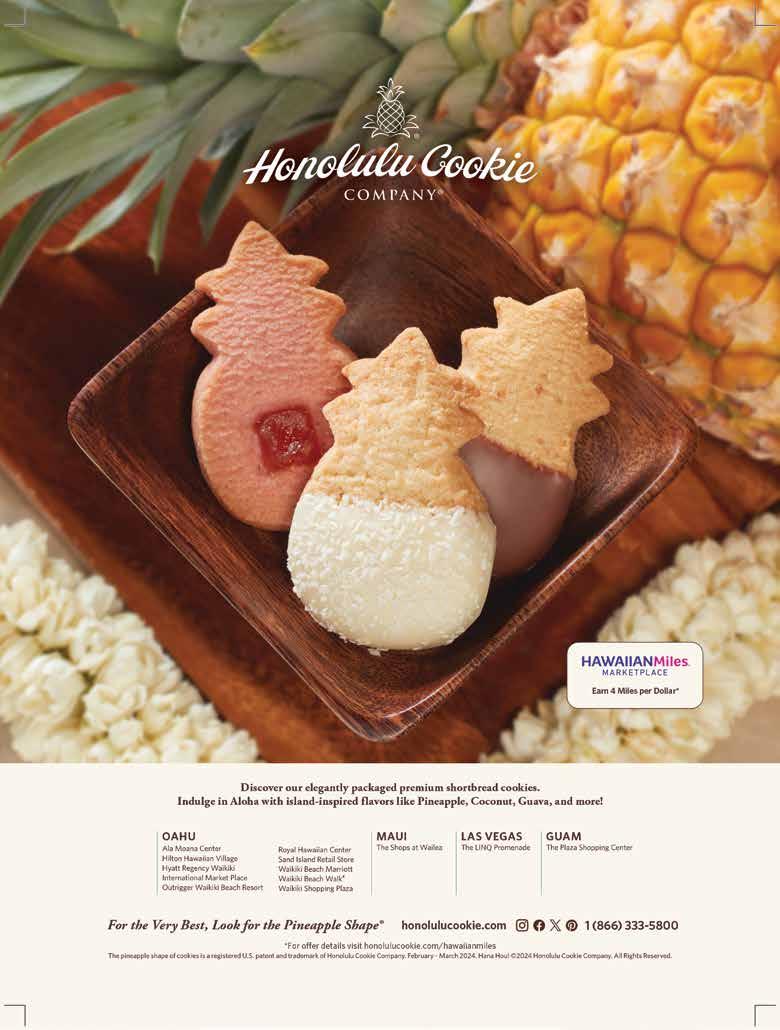

MARKS OF DISTINCTION / Few Polynesian tattoos illustrate one’s commitment to culture and community more than the maka uhi, or facial tattoo. Meet the Native Hawaiian men who’ve earned their maka, revived a tradition that was nearly lost and assumed the kuleana (responsibility) that comes with it.
edmunds

THE PATH OF HULA / What audiences see during the Miss Aloha Hula competition at the Merrie Monarch Festival is the result of months of preparation—not just of practicing the dance, but visiting sacred sites, connecting with kūpuna (ancestors) and purifying the body, mind and spirit. See the hula kahiko (traditional hula) that Breeze Ann Kalehuaonālani Vidinha Pavao presented for the 2023 Miss Aloha Hula and learn about the preparation involved in its creation.
Pacific Historic Parks is the leading organization dedicated to supporting and preserving significant historical sites in the Pacific for future generations, including the Pearl Harbor National Memorial. Learn more about the only official guided tours of the memorial, including PHP’s multimedia and virtual reality options.

Watch Hana Hou! TV on the in-seat
To feature your series or film on Hana Hou! TV, contact sales@NMGnetwork.com
photographs by dana
06 tv
photograph by akasha rabut
media player or Hawaiian Airlines app.
@hanahoumag /HanaHouMagazine


Our Wave collection comes in several styles and sizes and is available in 14K Yellow, White or Rose Gold. An incomparable collection of Hawaiian and Island lifestyle jewelry HAWAII’S BEST People’s Choice Awards The Star-Advertiser 2014 – 2023 OAHU • MAUI • K AUA I • BIG ISLAND OF HAWAI I • NCL PRIDE OF AMERICA BELLEVUE • BOSTON • CH ICAGO • DALLAS • DENVER • L AS VEGAS • NEW YORK ORLANDO • PHILADELPHIA • PLEASANTON • PORTLAND • ROSEVILLE • SAN DIEGO SAN FRANCISCO • SAN JOSE • WASHINGTON, D.C. NaHoku.com • 1- 800 -260 -3912 NAHO-36571_OpalUltWave_HanaHou_FebMar2024_7.3x9.8.indd 1 12/4/23 8:06 AM
PUBLISHER & CEO
Jason Cutinella
PARTNER/GM —HAWAI‘I
Joe V. Bock
GLOBAL EDITORIAL DIRECTOR
Brian McManus
EDITOR
Michael Shapiro
PHOTO EDITOR
Matt Mallams
MANAGING DESIGNER
Taylor Niimoto
DESIGNERS
Eleazar Herradura
Coby Shimabukuro-Sanchez
VP FILM
Gerard Elmore
FILMMAKERS
Blake Abes
Romeo Lapitan
Erick Melanson
VIDEO EDITOR
Jhante Iga
STUDIO DIRECTOR/ PRODUCER
Kaitlyn Ledzian
DIGITAL CONTENT MANAGER
Brigid Pittman
DIGITAL PRODUCTION DESIGNER
Arriana Veloso
PRODUCER
Taylor Kondo
HAWAIIAN CULTURAL ADVISER
Kahōkū Lindsey-Asing
OPERATIONS
VP ACCOUNTS RECEIVABLE
Gary Payne
OPERATIONS DIRECTOR
Sabrine Rivera
TRAFFIC MANAGER
Sheri Salmon
CLIENT SERVICES DIRECTOR
Kristine Pontecha
ADVERTISING
SENIOR DIRECTOR, SALES
Alejandro Moxey
VP SALES
Mike Wiley
ADVERTISING DIRECTOR
Simone Perez
DIRECTOR OF SALES
Tacy Bedell
HEAD OF MEDIA SOLUTIONS & ACTIVATIONS
Francine Beppu
ACCOUNT EXECUTIVE
Oliver Ankar
JUNIOR ACCOUNT EXECUTIVE
Rachel Lee
SALES COORDINATOR
Will Forni
CONTACT
EDITORIAL INQUIRIES editors@NMGnetwork.com
SALES INQUIRIES sales@NMGnetwork.com
CONTRIBUTORS
Adam Amengual
Akasha Rabut
Anthony Consillio
Arto Saari
Beau Flemister
Catharine Lo Griffin
Conner Gorry
Dana Edmunds
Desmond Centro
Dylan Gordon
Elyse Butler
Hunter Haskins
Katie Young Yamanaka
Laura La Monaca
Larry Lieberman
Lesa Griffith
Martha Cheng
Megan Spelman
Mengshin Lin
Navid Baraty
Peter Rosegg
Ricky-Thomas Serikawa
Shannon Wianecki
Sonny Ganaden
Stu Dawrs
Tommy Shih
Published by: NMG Network
36 N. Hotel St., Ste. A Honolulu, HI 96817
©2024 by NMG Network, LLC. Contents of Hana Hou! are protected by copyright and may not be reproduced without the expressed written consent of the publisher. Hana Hou! assumes no liability for products or services advertised herein.

3375 Koapaka Street, G-350 Honolulu, HI 96819
Phone: 808-835-3700
Fax: 808-835-3690
Mailing Address: PO Box 30008 Honolulu, HI 96820
For questions related to travel, visit us online at HawaiianAirlines.com or contact us at any of the following numbers:
UNITED STATES / CANADA 1-800-367-5320 Monday-Sunday, 24 hours Text 38285 Monday-Sunday, 5:00am - 11:00pm HST
AUSTRALIA (61) 1-800-955-912
CHINA (86) 10-6502-6766
JAPAN (81) 570-018-011 Monday-Sunday
NEW ZEALAND (64) 0800-449-415 AMERICAN SĀMOA (684) 699-1875
SOUTH KOREA (82) 2-775-5552
TAHITI (689) 40-866-000
CONSUMER AFFAIRS HawaiianAirlines.com/CAO
BAGGAGE INQUIRIES
1-866-389-6654
Monday-Sunday, 8:00am - 4:30pm HST
H awaiian M iles
For information on our frequent flyer program, please contact our HawaiianMiles Service Center Monday-Friday, 7:00am - 4:30pm HST 1-877-HA-MILES or 1-877-426-4537
HAWAIIAN AIR CARGO INQUIRIES
1-877-422-2746
HawaiianAirCargo.com

ON THE COVER Sacred Steps
Hālau ka Lei Mokihana o Leinā‘ala performs a hula kahiko (traditional hula) at the 2023 Merrie Monarch Festival.
PHOTOGRAPH BY AKASHA RABUT
V27 N 0 1 FEBRUARY - MARCH 2024
 OAHU: ALA MOANA CENTER OUTRIGGER WAIKIKI BEACH RESORT HILTON HAWAIIAN VILLAGE ROYAL HAWAIIAN HOTEL KAILUA VILLAGE SHOPS KAHALA MALL
OAHU: ALA MOANA CENTER OUTRIGGER WAIKIKI BEACH RESORT HILTON HAWAIIAN VILLAGE ROYAL HAWAIIAN HOTEL KAILUA VILLAGE SHOPS KAHALA MALL
WAILEA HYATT REGENCY MAUI RESORT & SPA KAUAI: GRAND HYATT KAUAI RESORT SHOPS AT KUKUI‘ULA BIG ISLAND: KINGS’ SHOPS TORIRICHARD.COM
MAUI: WHALERS VILLAGE SHOPS
AT
“5 O’Clock Shadow” 100% Mulberry Silk Haile Top & Mona Pant.
Beau Flemister

“I had no idea that basically every single Tahitian black pearl you see in jewelry is cultured on a farm somewhere,” says Beau Flemister, who wrote “A Pearl of the South Seas.” “Before visiting Kamoka Pearl Farm, I figured that pearl divers dived down and collected a sack of oysters, and if the stars aligned, they got lucky. Witnessing second-generation pearl farmer Josh Humbert meticulously graft oysters with specialized, homemade instruments—and all the other science and environmental care required to run such a remote operation—disproved any involvement of luck or fortune. The farm has also got to be one of the top five spots on earth to call your office.” Flemister is an awardwinning writer from Kailua, Hawai‘i. Based on O‘ahu, he is a former editor-at-large for Surfing Magazine and has published articles for VICE, Outside, The Surfer’s Journal, Lonely Planet and more. His debut novel, In the Seat of a Stranger’s Car, is available in local bookstores and online.
Adam Amengual

“Spending two days photographing the Makapo crew was a meaningful experience that stands out in my nearly two decades as a photographer,” says Adam Amengual, who shot the blind outrigger canoe paddlers of Newport Beach, California, for “Guiding Light.” “Seeing these athletes overcome incredible physical and mental challenges is inspiring. I’m grateful that my profession allows me to engage with individuals from such diverse backgrounds, like adaptive athletes. Beyond the responsibility of capturing their stories, assignments like this one resonate deep within my soul.” Amengual is a photographer and filmmaker based in Southern California. A frequent contributor to the New York Times, his work has also been featured in the Wall Street Journal, the Guardian, Monocle Magazine, Robb Report and Town & Country See more of his work at adamamengual.com and on Instagram @adamamengual
Katie Young Yamanaka

“As a former hula dancer and Merrie Monarch competitor, I am acutely aware of the dedication and discipline a dancer needs to make it to that stage,” says Katie Young Yamanaka, who wrote “The Path of Hula,” of the annual hula festival regarded as the pinnacle of the art. “Each year the world watches the performances in awe, but I was excited to delve into seldom seen aspects of hula— the preparations, the sacred practices in nature and the personal journey each dancer takes to find herself within the story. Dancing hula at this level means tapping into a deeper part of yourself. The physical demands are great, but the mental demands are greater. Two decades later, I still carry those experiences with me—dancing barefoot on a cliff above the ocean, immersing myself in frigid waters to purify my mind and greeting the sunrise with hula in my heart.” Yamanaka has written about Hawaiian art and culture in Hana Hou! for more than a decade from her home in Hilo.

“I’ve done a lot of assignments, and some become more personal than others,” says Dana Edmunds, whose portraits of the men who’ve committed to receiving an uhi maka, or Hawaiian facial tattoo, accompany “Marks of Distinction” in this issue. “This one was a real honor. All of these guys, not knowing me, welcomed me into their houses, into their sanctuaries, their special places, and showed a lot of trust in me. They have made such a profound commitment to their culture through these tattoos, of which they are very, very proud, and my job was to accurately portray that part of them. As someone who is not Native Hawaiian but holds deep respect for the culture, I feel a big responsibility to get it right. Even with the story being published for thousands of readers, to me the most important audience for these photographs is the men themselves, their families and friends. If they’re happy, then I’ve really done my job.” Edmunds is an editorial, commercial and advertising photographer based in Kailua, Hawai‘i.
Contributors
10
Dana Edmunds


Our Horizon collection comes in several styles and sizes and is available in 14K Yellow, White or Rose Gold. An incomparable collection of Hawaiian and Island lifestyle jewelry HAWAII’S BEST People’s Choice Awards The Star-Advertiser 2014 – 2023 OAHU • MAUI • K AUA I • BIG ISLAND OF HAWAI I • NCL PRIDE OF AMERICA BELLEVUE • BOSTON • CH ICAGO • DALLAS • DENVER • L AS VEGAS • NEW YORK ORLANDO • PHILADELPHIA • PLEASANTON • PORTLAND • ROSEVILLE • SAN DIEGO SAN FRANCISCO • SAN JOSE • WASHINGTON, D.C. NaHoku.com • 1- 800 -260 -3912 NAHO-36572_HorizonAbalone_HanaHou_FebMar2024_7.3x9.8.indd 1 12/4/23 8:05 AM
BY PETER INGRAM , PRESIDENT AND CHIEF EXECUTIVE OFFICER, HAWAIIAN AIRLINES
Star Power
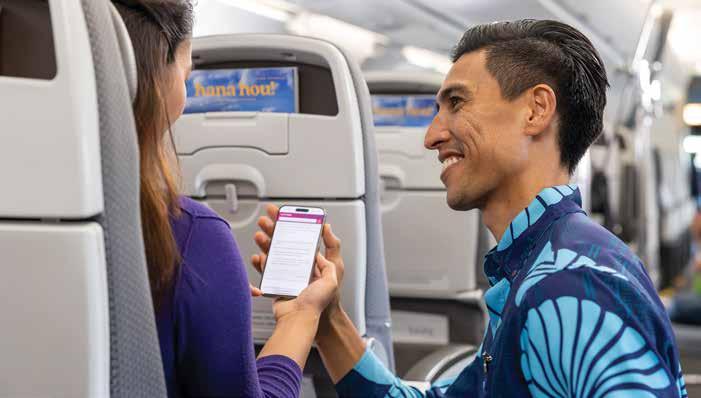
In our ultra-connected world, I sometimes find myself enjoying an occasional break from the constant stream of communication when aboard one of our flights: It’s a chance to get immersed in reading, talk story with our crew or just enjoy the view. Yet even for a leisure, destination airline like ours, I know how valuable in-flight internet can be, whether travelers want to wrap up a work project before arriving in Hawai‘i or share memorable moments from their vacation on their way home.
In my nearly two decades at Hawaiian, the question of when we would offer Wi-Fi connectivity onboard has been a constant—from both our guests and employees. While we have been eager to take this plunge, we wanted to wait until service became available with truly high-quality connectivity throughout the journey to or from Hawai‘i. Which is why we are excited to be bringing the world’s most advanced broadband satellite technology
to our transpacific flights as the first major airline to offer Starlink.
As you read this column, Starlink’s high-speed internet is already available on select Airbus A321neo aircraft, the first in our fleet to be equipped with the system. We also plan to rollout the service on our Airbus A330s and Boeing 787-9s this year. Starlink’s internet will be free for every guest.
Getting online will be seamless, without registration pages or payment portals. Our guests will be able to surf the web, stream content, play games with friends on the ground, quickly download or upload large files, make vacation plans or post their special island experiences on social media.
It’s all possible thanks to Starlink’s global constellation of satellites connected by a laser mesh network, orbiting at an altitude of 340 miles—which is about 65 times closer to Earth than traditional satellite internet providers. For Hawaiian, this
revolutionary technology solved a long-standing challenge: Ensuring our guests can enjoy reliable, high-speed, low-latency connectivity on our long flights over the ocean. How fast? Our expectation is that it is going to be the fastest internet flying over the Pacific.
While we continue to outfit our entire transpacific fleet you can look for the Starlink logo as you enter the cabin to find out whether your flight has Wi-Fi, or just ask one of our crew members. We know it took us a long time to bring connectivity to our cabins, but once you experience our fast, frictionless and free Wi-Fi, we hope you will agree it was worth the wait.
From our ‘ohana to yours,
12
CONNECTING FLIGHT
As we continue to roll out Starlink’s high-speed internet service, all guests on our transpacific flights will soon have free access to the fastest connections available over the Pacific.



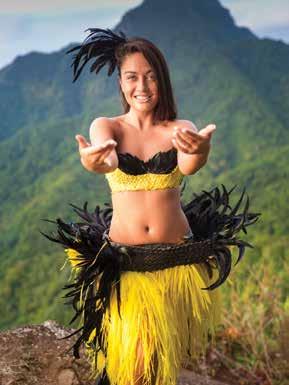 One Foot Island, Aitutaki
Sea Change Villas, Rarotonga
One Foot Island, Aitutaki
Sea Change Villas, Rarotonga



The Cook Islands, Polynesia’s best kept secret.
Most Americans know about Hawaii, a beloved destination among travelers on account of its natural beauty and rich culture.
Few know about another destination directly south of Hawaii, which shares a time zone, Polynesian ethos, and air travel route. If you haven’t heard of the Cook Islands, you have now. Hawaiian Airlines flies nonstop to Rarotonga, our main island, from Honolulu.
Our little paradise, located next to Tahiti, shares Hawaii’s stunning landscapes, abundant marine life, and pace of life. But we’re different in some ways, too: fewer buildings, for example, and fewer tourists.
Our islands are small, so there isn’t much separation between locals and hotels. It’s easy to make friends with our Cook Islands Maori people, who are proud to showcase and share our vibrant culture for visitors from beyond the reef.
Our population is small, too, about 18,000, so our islands aren’t crowded. It’s easy to find an unoccupied stretch of white sand where you can spend a day absorbing the turquoise hues of the lagoon and the kiss of the South Pacific sun.
Visitors describe the Cook Islands as Hawaii half a century ago. That’s true in some ways: the beaches are wide open, the landscapes unmarred, and there aren’t any traffic lights or chain hotels.
But it’s also kept up with our age in the ways that matter. There’s Wi-Fi, for example, and there are also luxury spas and beachside bars with sophisticated cocktails. You can design any kind of vacation you want: adventurous, active, adrenaline-fueled, educational, enriching, grounding, fun, relaxing, or a combination of all of these.
One of the most exciting discoveries American travelers make about the Cook Islands is that we use the New Zealand dollar, which considerably stretches a vacation budget.
We’re Polynesia’s best-kept secret.
Just don’t tell everyone.
To learn more about the Cook Islands, visit www.CookIslands.Travel or take a 360° virtual tour on visit.CookIslands.Travel

Rarotonga
Little Polynesian Resort, Rarotonga
Aitutaki
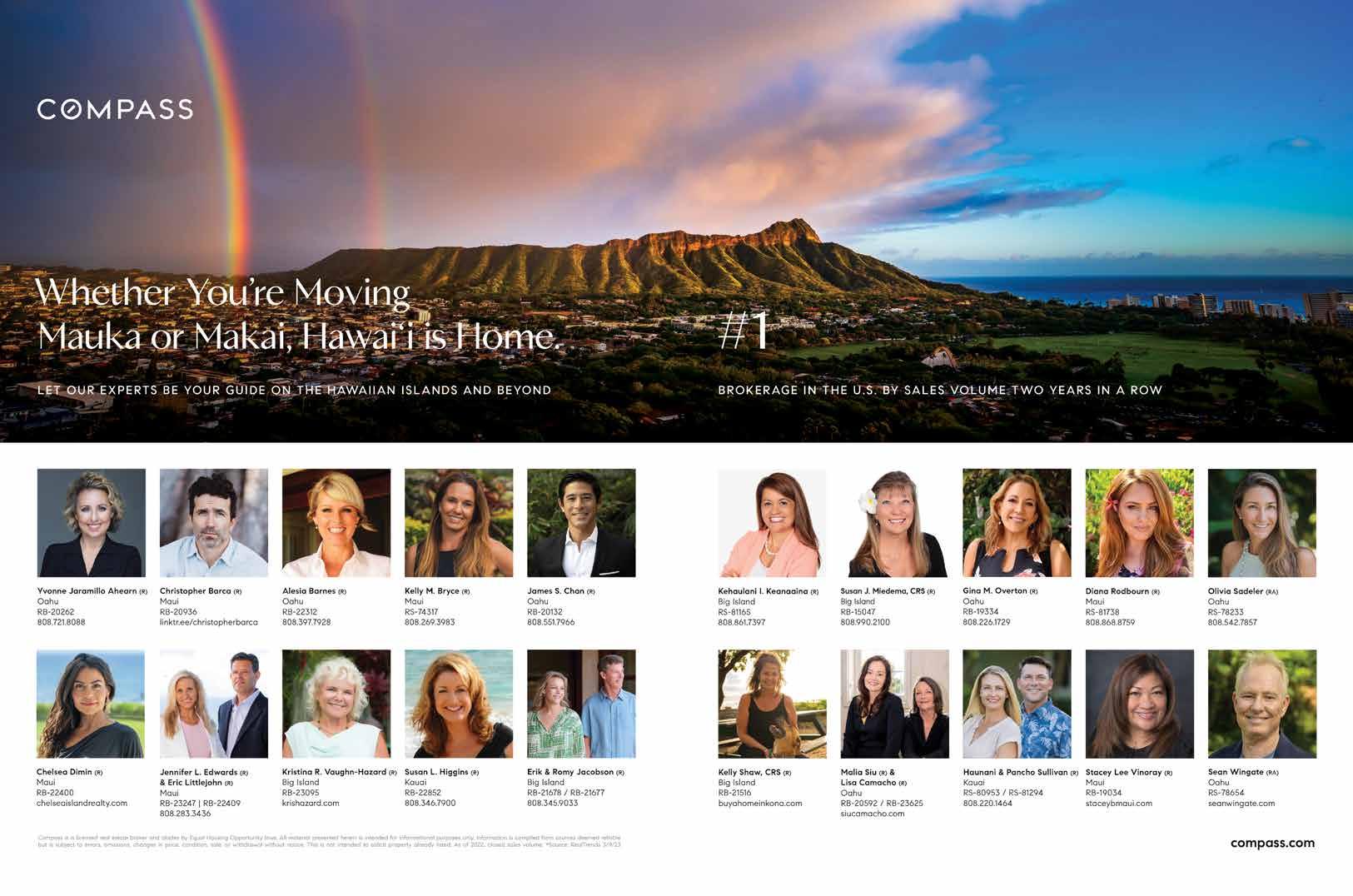

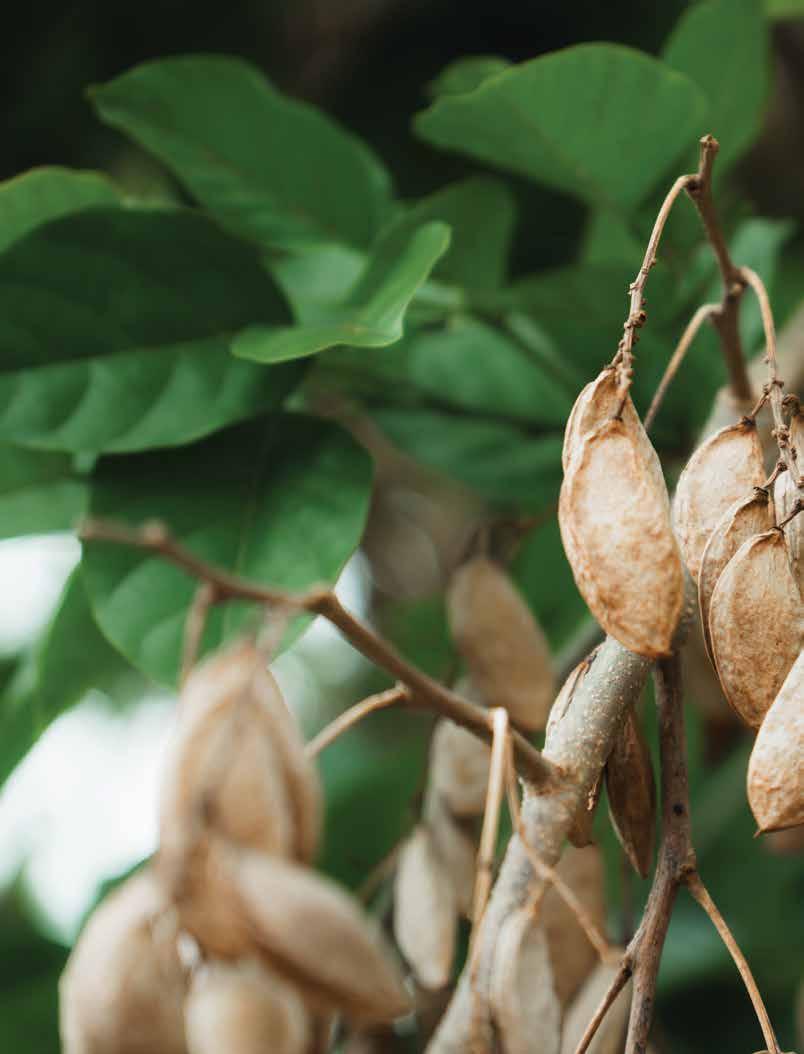

island intelligence
The Power Pod
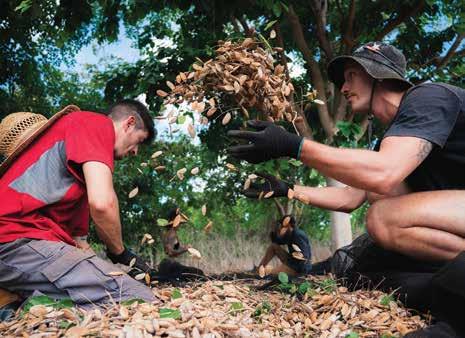
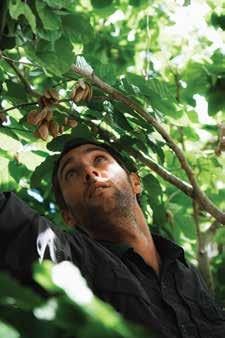
Sebastian Bibioni (left image, at right) and Leo Baigorro sift pongamia seeds (seen also on pages 18-19) at Terviva’s orchard in Hale‘iwa. Above right, R&D manager Ian Schiller inspects the hardy East Asian legume, which holds promise as both a biofuel and a nutrientrich food source. Terviva aims to plant millions of pongamia trees around the world in an effort to combat both climate change and hunger.
If trees had a team of Avengers, pongamia would be its rising crusader. This legume has superpowers: It’s drought-tolerant, pest-resistant, nitrogen-fixing, carbon-sequestering, soil-remediating, high-yielding and protein-rich. It can provide food and fuel, and combat climate change, all with a single pod. And Terviva wants to plant millions of them to feed billions.
Pongamia pinnata, also known as Indian beech and karanja, is found throughout East Asia and the Pacific. Traditionally harvested for its ayurvedic benefits and for lamp oil, it thrives anywhere that doesn’t freeze. Terviva first eyed pongamia for biofuel production, planting 8,500 trees above Hale‘iwa on O‘ahu’s North Shore. The processing from bean to oil, says Terviva CEO Naveen Sikka, is close to 80 percent less carbon-intensive than producing petroleum. Today, Terviva has orchards on Maui, works with farmers
in Florida and Australia, and wild harvesters in India.
Two years ago Terviva figured out how to de-bitter the bean’s pungent flavor, a game changer that positions pongamia as both fuel and food. They introduced Ponova—a light, golden oil rich in Omega9s with a high smoke point, nutty taste and buttery mouthfeel—as an alternative to palm oil and soy. According to Terviva, one acre of pongamia produces the same amount of oil as four acres of soy. The remaining bean cake can be crushed into a protein-packed flour.
Pressed from Hale‘iwa-grown beans, Ponova made its “first-ever pongamia-as-food” debut, as Sikka calls it, last year in the Kona bar, a snack made by plant-based protein company Aloha, with mac nuts from Hamakua Macadamia Nut Co. and Kona coffee from Greenwell Farms. Ten percent of the Kona bar’s sales are donated to KUPU, a Hawai‘i
conservation nonprofit. “Sustainability will soon become table stakes for the food industry, so the sooner leading companies start thinking about the traceability of their ingredients, the better,” says Aloha CEO Brad Charron.
One of the most eye-opening statistics Sikka shares is that there are more than a billion people who make a livelihood from agriculture. While only 1 percent of the US population is farming, in Mexico and India it’s 30 percent, and in Africa it’s more than 50 percent. The ability to produce food, feed and fuel from pongamia allows these farmers entry into all those markets, and that’s part of Terviva’s endgame. “We’re not a food company. We’re not a fuel company. We’re a tree company,” Sikka says. “We’re trying to make the tree as broadly usable as possible to create this really sustainable future for our planet.”
terviva com
20
O‘AHU INTELLIGENCE
Harvesters
RICKY-THOMAS SERIKAWA
STORY BY CATHARINE LO GRIFFIN PHOTOGRAPHS
BY
 STORY BY SONNY GANADEN PHOTOGRAPH BY TOMMY SHIH
STORY BY SONNY GANADEN PHOTOGRAPH BY TOMMY SHIH
Teach a Man to Shred

Trainer and fitness guru Bill Maeda does squat curls outside his O‘ahu home. The 55-year-old has recently found fame on the internet, where he’s amassed millions of awestruck followers.
To his surprise, personal trainer
Bill Maeda has become an influencer of the TikTok generation. “Training started at eight years old,” he says after his afternoon workout, which today consists of pull-ups at the Kapi‘olani Park fitness station. “I was like a lot of boys my age: I saw Bruce Lee for the first time and immediately started doing push-ups, sit-ups and
squats. But unlike them, I turned my boogie board into a punching bag.”
Most of Maeda’s posts show an impressively shredded man in his fifties exercising outside his Honolulu apartment, at the park and occasionally at a gym to nearly three million followers across multiple platforms. A typical post reads like an entry in a fitness journal: exercise, weight, repetitions, date, age,
time of day. “When I first posted during COVID, in April 2020 for a few friends and clients, I didn’t say anything. I had to get past the stage fright.”
In an era of innumerable fitness influencers and programs, Maeda stands out for his sheer athleticism. He might be lifting a hundred pounds with his teeth, levitating on the handle of a kettlebell with consummate control, barefoot sprinting or lifting various heavy things: mace, club, kettlebell, sled or loaded cooler. The comments are full of breathless awe from other fitness buffs (“RESPECT,” “Are you sure you’re 55?” “Not sure what bro is training for but you is looking ready my guy”).
Extreme physicality helped Maeda recover from colon cancer after being diagnosed in 2012 at the age of 42, and he still trains others to find their inner beasts, if at their own pace. “There are plenty of people saying ‘suck it up’ in the industry, and for younger people that’s OK. A lot of folks want something more relaxed,” he says. “The concept of 1 percent better every day is unrealistic. It’s better to show up for something you’re positive you can do again tomorrow—and the next day. I tell people to get strong legs and make ambidexterity an obsession—use your nondominant hand to brush your teeth or cook, chew food on your nondominant side and use your nondominant eye more often to build good circuitry. Strength training tends to amplify inequalities in the body. That, and quit sugar.”
How does he feel about his virality? “I get recognized daily now,” he says, stopping to greet fans at the pull-up bars. “I’m as honored to meet people as they are to meet me. My job is to keep people interested in their health. It’s not just for entertainment.”
22 O‘AHU INTELLIGENCE
@ billmaeda
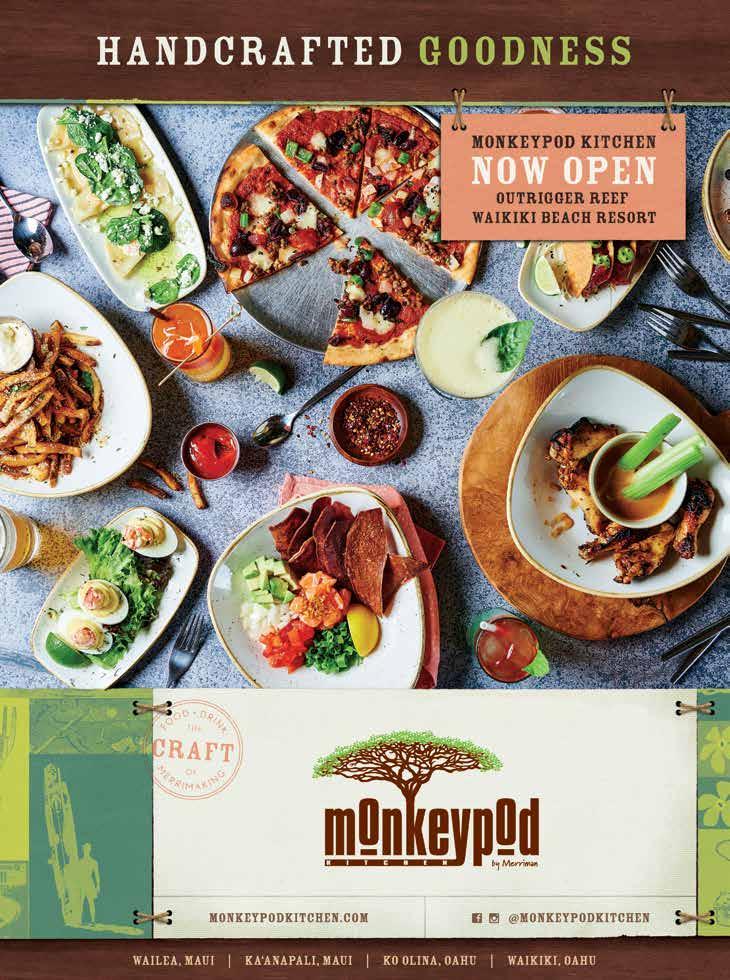
Plant-based Pleasures

Alot of good people are vegan: Woody Harrelson and Stevie Wonder. Venus Williams. Jane Goodall. All have vaunted the virtues of a plant-based diet—for themselves and the planet. But steep and fraught is the vegan way: Critics question taste, texture, protein content and price. Bring a vegan pupu to a gathering and get ready for stink eye
Nicoco Hawaiian Gelato, though, is vegan 2.0 (i.e., “is that really vegan?”).
“When we started in 2012, we found zero
vegan ice cream recipes online,” says co-founder Sean Crowne. “It was pretty sad, actually.” His wife, Ashley, laughs recalling the watery, less-than-flavorful (and slim) pickings for vegans at the time. The couple knew they could do better.
Founded on the lava fields of Kalapana in East Hawai‘i, Nicoco (a portmanteau of coconut and the couple’s dog Nico—named for the Velvet Underground singer who’s pictured in their logo) aimed to create
a 100 percent organic, locally sourced vegan alternative at a price retired aunties could afford. The couple admits they had little frozen dessert knowledge back then, but they knew their plantbased recipes would have to rival the richness and texture of dairy.
The secret? Coconuts and science. With palms aplenty throughout Kalapana, fatty coconut milk was a natural point of departure. Simulating the silky texture of ice cream was another story. Extracting water from the coconut milk proved a partial solution, but it fell flat. A deep dive into gelato alchemy ensued.
Sean gets excited talking about flavor receptors and “overrun” (the volume of air injected, in ice creamspeak). “Our overrun tops out at 10 percent. Ice cream runs around 60 percent. And because gelato is served warmer, your tongue distinguishes flavors better.” After conquering the texture conundrum, the couple rallied like-minded growers to collaborate. The chocolate, nuts, vanilla, coffee and fruit in Nicoco’s gelato are sourced from familyowned Hawai‘i Island farms.
Drawing inspiration from local culture, fruits and flowers, favorites like Midnight Chocolate with ghost peppers, Ube Haupia and their turmericinfused Liliko‘i Lani are handcrafted in five-gallon batches and served in made-to-order gluten-free waffle cones. Once hydrosols (steam-distilled flowers) entered the mix, wild combinations like violet mango, lychee rose and jasmine mocha appeared on Nicoco’s rotating roster of six hundred flavors. Tropical superfoods like spirulina and turmeric add color.
Despite lucrative offers to expand to neighbor islands and beyond, Nicoco is committed to staying local, with just one shop in Hilo; prepackaged pints are available at select retailers, including KTA, the Locavore Store and the Kaimu Korner Country Store.
nicocohawaiiangelato . com
24
HAWAI‘I ISLAND INTELLIGENCE
STORY BY CONNER GORRY PHOTOGRAPH BY MEGAN SPELMAN
Sean and Ashley Crowne with their daughter outside Nicoco Hawaiian Gelato in Hilo, where the couple has mastered the elusive art of nondairy dairy.

The Art of Connection


“My hope is to inspire and inform through the work I do,” says Solmon Enos (seen above
the
in
“My open studio is a living installation where I get to share this passion with kama‘āina and visitors alike.” Above
progress, many of which blend sci-fi and fantasy themes with Native
Walk into Capitol Modern on any given morning, hang a sharp left and you’ll encounter one of Hawai‘i’s premier artists, Solomon Enos, working away in a walk-in closet. Well, actually, the closet-size space is the former telephone room of the historic No. 1 Capitol District Building, the walls of which Enos, the museum’s artist in residence, has transformed into a blue sky-scape. He calls this his noa (open) studio: a space in the clouds to make art while he waits for visitors. “Whenever I hear someone coming, I pop out of this little sub-dimension, and we have conversations,” he says with his everpresent grin. “Then I go right back to whatever I happen to be working on.”
Capitol Modern’s artist in residence is a volunteer position, which gives Enos the freedom to come and go. Most days he arrives at 9 a.m. and leaves at noon,
walking the forty-five minutes from and back to his kapu (closed) home studio, where he continues working. And he’s got plenty of work to do: In recent months, in collaboration with the University of Edinburgh, Enos has been retracing Robert Louis Stevenson’s travels through Hawai‘i, Sāmoa, Tahiti and Scotland as part of his graphic novel adaptations of Stevenson’s stories reimagined from an Indigenous perspective. Enos recently visited the Marshall Islands on commission from a UK-based environmental organization, where he joined Marshallese poets and artists in visiting and making art about sites impacted by nuclear testing and climate change. He’s also involved in discussions surrounding how Capitol Modern (the recently rebranded Hawai‘i State Art Museum) will take part in the upcoming Festival of Pacific Arts & Culture—this
a
June, Hawai‘i will for the first time host the quadrennial gathering of artists and performers from throughout Oceania.
In addition to his usual morning hours, Enos is also typically on hand for special events at Capitol Modern, which include the monthly First Friday and The Vibe nights, where he chats up spectators while doing live paintings. “Being Native Hawaiian, I help bridge the gap between our traditional stories and the museum’s contemporary art from all over the world,” he says. “It really goes in line with the mission here, which is not only to allow the community free access to great art but also to inspire folks to pick up a brush, pick up some pastels, pick up some clay and find the artist within.”
26
O‘AHU INTELLIGENCE
left),
artist
residence at the Capitol Modern.
right,
few of Enos’ works in
Hawaiian mo‘olelo (stories).
CAPITOLMODERN.ORG SOLOMONENOS.COM
STU DAWRS PHOTOGRAPHS BY DESMOND CENTRO
STORY BY


 STORY BY MARTHA CHENG
STORY BY MARTHA CHENG
College Orientation

Where am I? Where do I want to go? Philosophical and practical questions both, especially pressing for new students on a college campus. The University of Hawai‘i at Mānoa’s new wayfinding system addresses both questions through Native Hawaiian ‘ike (knowledge) and mo‘olelo (stories). One of the two debut signs, installed last summer, gleams blue at the end of McCarthy Mall, the main corridor through the campus. It tells you where you are (the Life Sciences building) and what ‘ili—the smallest area of land in the ancient Hawaiian land division system— you’re standing in (Kauwala‘a). The medallion in the ground before the sign, ringed by a star compass, a navigation tool used by Polynesian seafarers, features a QR code linking you to information about Mānoa—culturally important plants, like kī, for example, and wahi pana, or significant sites.
The name Lē‘ahi (a.k.a. Diamond Head), you’ll learn, might mean the brow of the ‘ahi; it might also refer to the fires Native Hawaiians once lit on the ridge of the crater, hence lei (wreath) of ahi (fire).
All of this—as well as videos on the star compass and a body alignment protocol similar to that practiced at some heiau (temples)—is encoded into that one large sign and small medallion. A total of twenty-one main campus building signs are planned to be installed by 2030. “The hope is that as students navigate the campus, they will not just learn about the buildings and what’s in them but also about the larger environment around them,” says Brian Strawn, the principal investigator on the project. Design partners Nalani Kanaka‘ole, Sig Zane and Kūha‘o Zane of Sig Zane Designs brought in the Native Hawaiian cultural information, practices and the idea of including wahi
pana; the star compass, contributed by UH cultural adviser and master navigator Nainoa Thompson, is an integral part of the project.
The new system has garnered recognition, such as Fast Company’s World Changing Ideas award. What’s striking about the system is not only the amount of information presented, from the kapa patterns on the signs pointing to wahi pana or the meanings behind each plant, but also the complexity. In the description of the Kauwala‘a ‘ili, the sign acknowledges multiple spellings and possible meanings of the ‘ili, suggesting that answers to questions like “Where am I?” and “Where do I want to go?” depend on whom you ask and what came before you. uhmanoawayfinding . org
28
O‘AHU INTELLIGENCE
Kukui leaves and kapa (bark cloth)-inspired patterns grace new signage outside of Bilger Hall at the University of Hawai‘i at Mānoa. The university’s new Wayfinding & Signage project not only identifies campus buildings but creates a richer sense of place by orienting visitors to the Native Hawaiian mo‘olelo, flora and fauna, and names associated with Mānoa.
PHOTOGRAPH BY ANTHONY CONSILLIO




















































ROY YAMAGUCHI JAMES BEARD AWARD-WINNING CHEF Thank you for letting us be a part of the community for the past 35 years scan f menus and reservations HAWAII INSPIRED INTERNATIONALLY INFLUENCED VISIT ROYYAMAGUCHI.COM FOR MENUS RESTAURANT GROUP ®
STORY BY PETER ROSEGG
BY ELYSE BUTLER

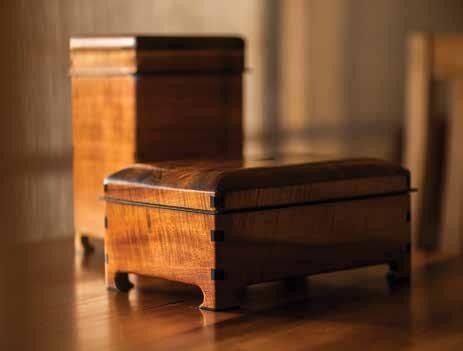
When Lee Porter designs a new box, “Sometimes the koa wood talks to me,” he says. Other times, customers talk to him. “They tell me what they want, and I design what I feel they are looking for.” Either way, the result is a superbly crafted, luminous piece of art, the koa wood often trimmed in ebony or rosewood, destined to become a family heirloom.
Porter, now 74, learned woodworking from his father, a World War II vet who hand-built the family home on Kāne‘ohe Bay, where Lee and his two brothers grew up in a storybook Island setting. Porter and his father collected hundred-year-old koa from Maui and Hawai‘i Island—wood that he still uses today. And many of his tools, including his table saw and band saw, were his dad’s. “They don’t make them like that anymore,” Porter says.
Exquisite as they are as pieces of art, Porter’s boxes are also medicine— his way of navigating through tragedy.
Porter’s father, James, died of cancer in 1976. Within weeks, Porter’s beloved younger brother, David, then 23, vanished without a trace. David’s van was later found abandoned and wiped clean of fingerprints, even David’s.
The mystery was never solved, and for many years Porter imagined seeing his brother around town. Tips and rumors led nowhere. David was declared dead and the cold case remains on the books.
Woodworking helped Lee through his grief in the wake of that double loss. “When I create the boxes using the skills my father taught me, and even some of his tools, it becomes a sort of meditation. I’m thinking about my dad and my brother, and the act of creating is a way to honor them.”
Now retired from a career in carpentry and construction management, Porter still makes koa boxes, though “box” hardly does justice to the precision and beauty
evident in Porter’s craft. Some are footed rectangles; others are round or triangular or square with a pyramid top. He works mostly on commission, usually from people who hear of him by word of mouth. His work is rarely in retail settings, but a dozen examples are on display at Ben Bridge Timeworks in Ala Moana Center through the end of February.
“I hope these boxes, made from heritage koa, will become a family heirloom for the receiver and a reminder of the beauty of Hawai‘i,” Porter says. “It’s an honor to think that I’m sharing a piece of my life experience with others, and that maybe we’re sharing a sort of healing.”
30
O‘AHU INTELLIGENCE
Wood artist Lee Porter creates heirloom-quality koa boxes in his East Honolulu shop from hundred-year-old koa he collected with his father on Maui and Hawai‘i Island. For Porter, the craft is a way to honor both his late father and his younger brother, who went missing in 1976.
Medicine Chests
koacollections com
PHOTOGRAPHS

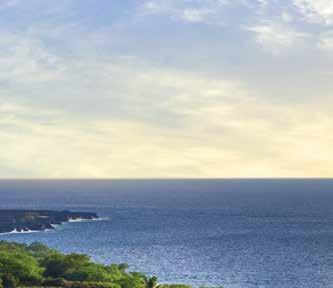


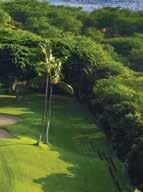

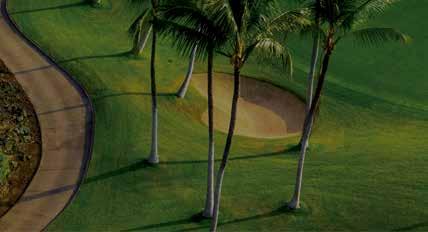
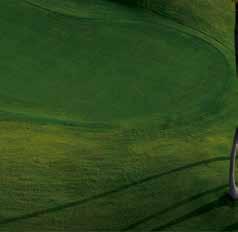


Hokulia.com | (808) 731-4354 Hokulia@HawaiiLife.com 81-6636 Pu‘u Ohau Pl., Kealakekua, HI 96750 Contact Hawai‘i Life - Hokuli‘a Sales BREATHING ROOM with a view • 1,260 uncrowded acres • Luxurious homes • Prized homesites • • World-class Jack Nicklaus signature golf course • Experience the Kona Coast’s most spacious, private residential club community. Now available, premier homes in Mahea Lani and Nalu Kai.

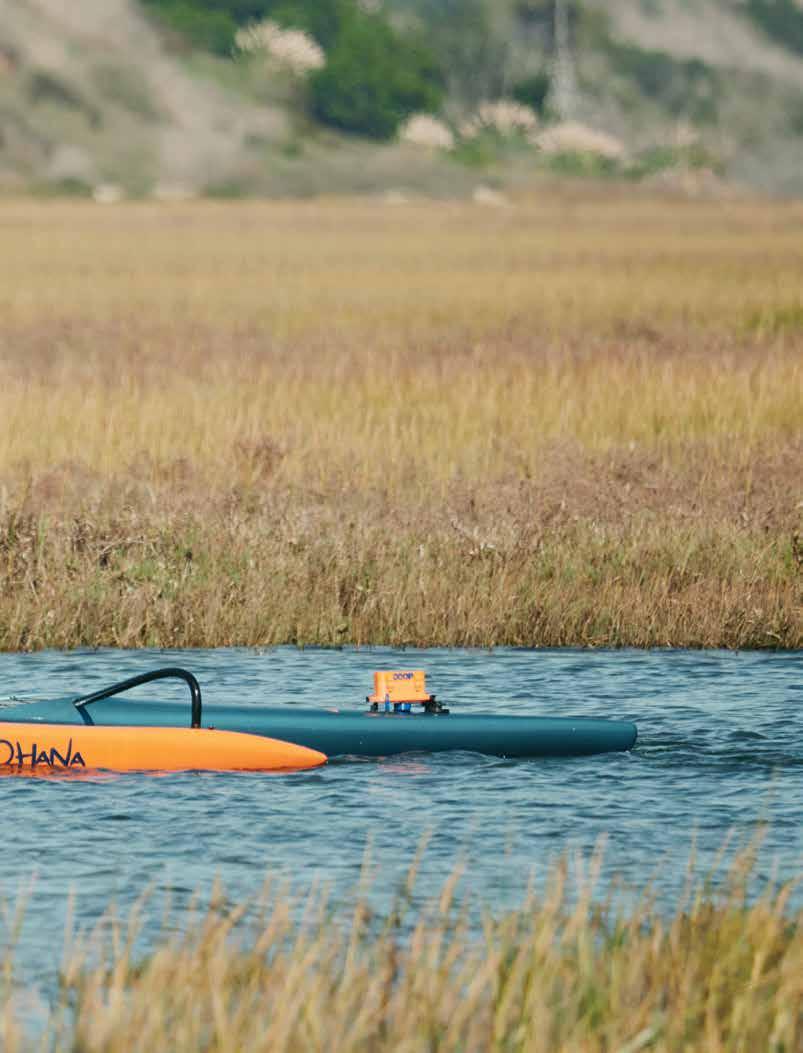
departments & features

Guiding Light
The Makapo Aquatics Project levels the paddling field for the visually impaired

STORY BY CATHARINE LO GRIFFIN PHOTOGRAPHS BY ADAM AMENGUAL DEPARTMENT 35

At 11 a.m. on September 2, 2006, 128 outrigger canoes lined up outside the bay at Hōnaunau on the Kona coast of Hawai‘i Island, the starting line of the Queen Lili‘uokalani Canoe Race. Among them was a novice team from Southern California, living out their dream of competing in the world’s biggest long-distance paddling event. Their steersman was renowned coach Billy Whitford, the founder of the Newport Aquatic Center (NAC), located in the coastal wetlands known as the Back Bay, where they trained.
The race ran eighteen miles along the coast in sweltering conditions,
testing the endurance of the six-man crews. The NAC crew struggled, and before long they had dropped to last place; the only vessel behind them was the safety jet ski tasked with bringing up the rear.
“Here comes this big braddah on the jet ski. We’re way back,” Whitford recalls. “He’d come over, he’d shake his head.”
“Timing!” the ski driver yelled impatiently, puttering alongside the canoe.
“Eh, thank you, braddah,” Whitford called out to appease him. “These are my blind guys.”
The driver was stunned. “Makapō?”
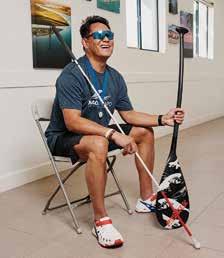

TOP / In 2022, Michael Yu became the first blind solo paddler to race in Hawai‘i using a newly developed remote steering system.
BOTTOM / Calm conditions greet the day at NAC’s tenth annual Off Da Couch race.
AT LEFT / Makapo paddler Chuck Dill capitalizes on a fast start.
“Yeah,” the steersman replied. “They can’t see.”
Instantly, the jet-ski driver became their biggest cheerleader, calling out every landmark as the crew—the Blindsiders, they called themselves— pushed for the finish line. They crossed at three hours, ten minutes and fortytwo seconds, becoming the first-ever blind crew to complete the race.
The next morning, West Hawai‘i News featured their photo on the front page. “What did that guy call us?” one of the paddlers asked afterward.
“‘Makapō,’” someone repeated. Hawaiian for “blind” (“maka” means
36
DEPARTMENT: GUIDING LIGHT
OPENING SPREAD / Left, RJ De Rama, executive director of Makapo, an organization that helps the visually impaired get on the water. Right, Jillian Clary leads her husband Ryan to a competition at the Newport Aquatic Center (NAC).


eye; “pō” is darkness). When they returned to California, the Blindsiders evolved into the Makapo Aquatics Project, a nonprofit for blind and visually impaired paddlers.
The Makapo Aquatics Project is a perfect fit for NAC, which Whitford established as a nonprofit in 1980 to protect public access to the water among the exclusive marinas of Newport Beach. The center is like Top Gun for operators of human-powered watercraft—flatwater kayaks, surf skis, outrigger canoes, even dragon boats. The center’s teams have won numerous national titles, and among its alumni are twelve Olympic gold medalists. Its membership spans young to old, and it consistently produces top collegiate rowers. The center also hosts We Are Ocean, a program that gets those fighting cancer out of the wards and onto the water.
When Makapo came along, Whitford says, it made sense for NAC. “Paddling is one of the few sports where blind people don’t need
anything adaptive. They can race against able-bodied men and women same-same,” he says. “The vibe they gave off was pure. Everybody just loved helping.” As one of Makapo’s first coaches, Whitford quickly learned that when directing blind paddlers, simple verbal commands were key. “You don’t have to go into a big explanation. Not, ‘I need you to …’ All it takes is two words: ‘Turn right.’” He chuckles as he recalls a water change—when paddlers jump out of the canoe and relief paddlers climb in—during a long race. “‘Marco!’” he called. “I hear ‘Polo!’ and they start swimming towards me on the escort boat. That’s a true story!”
On any given day, Whitford is running around cracking dad jokes, but he’s serious when he acknowledges the patience and respect demonstrated by the Makapo paddlers, a reality check for the rest of the NAC community. “If you ever think you’re having a bad day, just talk to one of them,” he says. “It humbles you so quickly.”
“Billy reminds us we’re kind of the glue here,” says Makapo’s executive director, RJ De Rama. “You’ve got
people complaining about the most mundane things or top athletes worried about shaving a couple seconds off their time. But when one of our blind athletes comes through here on his own with a cane—when we first started, it was like, ‘Oh my God, is that guy going to die? Is he going to sprain an ankle?’—for a split second they’re reminded they have things to be thankful for.”
“We like to say, as blind people, we run into the nicest people,” jokes the 48-year-old De Rama, who went blind at 29. At the Braille Institute he met a former water polo player and swimmer named John Chavez, who had gone in for ankle surgery, suffered a heart attack during the procedure and woke up blind. Not one to back away from a challenge, Chavez cooked up the idea for the blind Kona crew and invited De Rama to join them.
“The draw for me was that I was going to participate in something with people who knew what I was going through, specifically the four other blind guys,” De Rama says. (For obvious reasons, the steersman must be sighted.) He wanted to offer that sense of belonging to other visually impaired people. Whitford, Kirsten Hermstad and Toni Bushong stepped up to coach, and generous sponsors including LA84, the Andrei Foundation, Kings Hawaiian, Foreseeable Futures, the Los Angeles Lakers Youth Foundation and the Allergan Foundation have since helped buy equipment and fund the program. They also collaborated with New York Outrigger, which launched a sister program in 2014.
That same year, De Rama and his wife, Rita, adopted a newborn whom they would come to discover had cerebral palsy. “The big thing with disability is that your world changes. We saw it again when our son wasn’t able to do the activities that typically developed kids could do,” De Rama says. “As parents your life is your kids’ activities—you’re hanging out at soccer or baseball. Because our kid isn’t in it, our social circle is different. For a lot of parents, the social circle doesn’t exist. You don’t have the flexibility to go to those places.” He and Rita immersed themselves in a community of parents with kids with special needs, taking their son, Timmy, to therapy several
38
The new CoOP system allows Ryan Clary (seen above and on pages 32–33) to paddle while head coach Rob Octavio steers Clary’s canoe remotely from the escort boat.
DEPARTMENT: GUIDING LIGHT

times a week. Perpetuating what De Rama praises as NAC’s “culture of yes,” he opened up paddling to anyone with a physical, cognitive or developmental disability. Hope, he says, is the currency and a hallmark of Makapo.
“If there’s one thing I want to teach my son, it’s how to be a person with a disability in an able-bodied world. I don’t think anyone sees people with a disability as not human, but there’s a certain sense of humanity that gets lost. People don’t know how to interact. Uber drivers will ask me, ‘Hey, you’re blind. Have you tried glasses?’” De Rama says. “The opportunity we have at Makapo is to be ambassadors, to walk with your head high, to ask and to correct people with respect and grace. In the cerebral palsy community, there’s a program called Just Say Hi. If you see someone with a disability, just say aloha.”
Makapo hosts a few hundred blind and adaptive paddlers a year, including amputees, autistic youth, individuals with traumatic brain injury and many others. Some race competitively. Others gather for Ohana Days, where families can spend the day at the beach and jump into a canoe for the first time. They are working on ways to quantify the therapeutic benefit of being in and around the water, with the goal of securing sustainable funding that could allow for on-site physical and occupational therapists and a full-time leadership staff. A big dream is to convince the International Va‘a Federation to create a separate division for blind paddlers— and they’ve developed a device to make that a reality.
“Right off the bat, we went three feet and flipped in kneedeep water,” says Ryan Clary, describing his first paddle almost nine years ago with his dad in an OC2, a two-person outrigger canoe. “That was my first taste of, oh, that’s how this is going to be.”
Clary was 37, and it wasn’t long after his field of vision began to significantly degrade, the onset of retinitis pigmentosa. Makapo came along when his options for doing
outdoor activities on his own—like simply going for a jog—disappeared with his eyesight. Paddling gives him precious independence. “I get to go out there and blow out a bunch of energy— no need to worry about what I’m going to run into,” he explains. “No tripping on stuff except getting to the canoe.”
Now Clary’s 46, and on a cloudless October morning in Newport Beach, he’s about to race a one-man canoe (OC1) in the annual Off Da Couch race in memory of Sam Couch, a beloved NAC coach and outstanding athlete who had cystic fibrosis. Clary still worries about his balance, but the fact that he’s racing an OC1 against more than a hundred sighted athletes is nothing short of incredible. It’s possible thanks to Cooperative Outrigger Paddling, or CoOP (rhymes with “scoop”), a remote control rudder system designed by Mark Baldwin, a Makapo board member and faculty at the University of California, Irvine.
Baldwin began developing the CoOP system in 2018, when De Rama expressed a desire for blind paddlers to be able to train on OC1s. The challenge aligned with Baldwin’s research in assistive technology, and with his knowledge of software engineering and industrial design—and input from the Makapo community—he manufactured a working prototype.
CoOP consists of a receiver with a motor and a battery inside a waterproof housing that attaches to the OC1’s rudder cap using a suction cup mount. A remote steersman—in this race, Makapo head coach and board member Rob Octavio—turns a dial on a handheld transmitter to control the rudder. Octavio follows Clary on a motorboat from about ten yards away (its range is one hundred meters, but the paddler must always be in the line of sight).
There’s also a speaker on the OC1 so Octavio can relay information to Clary: “You’ve got 150 meters to the turn. … I’m going to be turning you left. … You’re going to have a wake on your ama [outrigger] in three, two, one—here it is.” Octavio says that remote steering requires hyperfocus on ocean and wind conditions, obstacles, positioning—and it’s even more challenging because you’re also navigating around other

boats and making estimates about distances based on varying depth perception. “You can’t always be close to the racer, so when he’s coming to a turn, if I’m not lined up, I’m wondering, ‘Is he at the turn? Am I going to clip the ama?’”
The paddler signals back to the steersman using gestures, like raising the paddle to indicate a problem. Initially, they tried earpieces for two-way communication, but the chatter was distracting. Generally, Baldwin says, when blind people need something, the world will make something for them to hear. “We don’t want to cloud that auditory channel,” he explains. “When they’re out there they recognize things. They know when we’re getting close, because they’ll hear the airplanes overhead, or they know we’re at Highway 1 because that bridge makes a particular sound.”
By using off-the-shelf components and fabricating all the custom parts on low-end, 3D printers, Baldwin kept the cost of the CoOP under $250. He also incorporated feedback from the blind community to improve the design. The latest iteration indicates whether it’s properly configured through sound
40
ABOVE / Engineered by Mark Baldwin at the University of California, Irvine, CoOP’s motor attaches to a canoe’s rudder, which is typically controlled by the paddler using foot pedals. A sighted steersman navigates with a remote control dial.
DEPARTMENT: GUIDING LIGHT
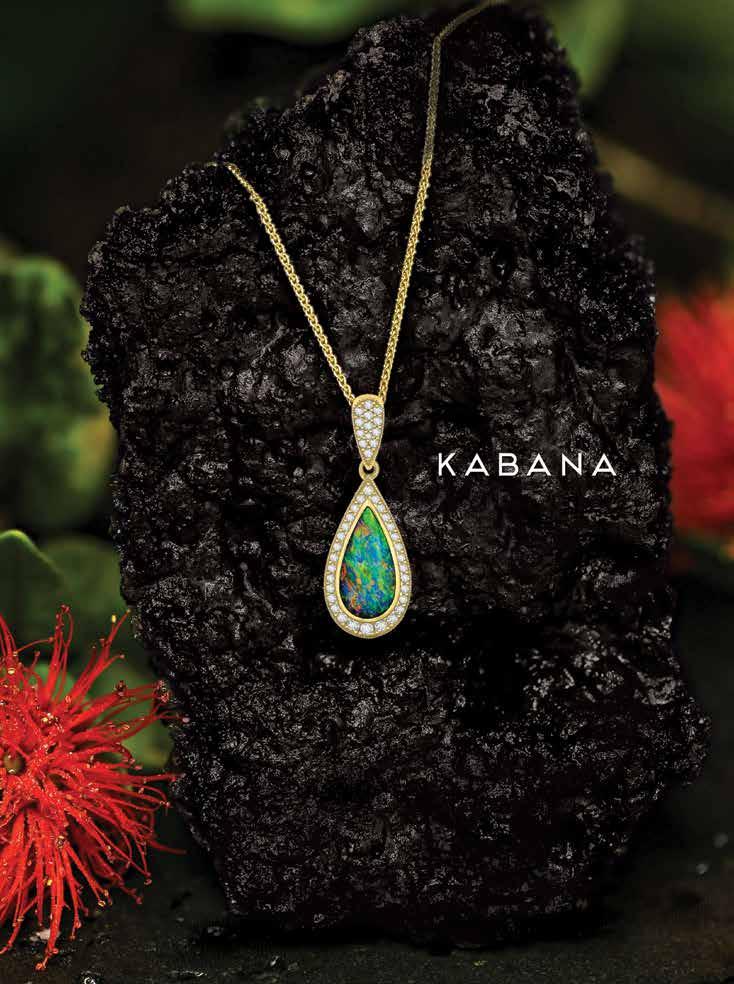
Na Hoku is Hawaii’s only authorized retailer of KABANA jewelry HAWAII’S BEST People’s Choice Awards The Star-Advertiser 2014 – 2023 An incomparable collection of Hawaiian and Island lifestyle jewelry OAHU • MAUI • K AUA I • BIG ISLAND OF HAWAI I • NCL PRIDE OF AMERICA BELLEVUE • BOSTON • CH ICAGO • DALLAS • DENVER • L AS VEGAS • NEW YORK ORLANDO • PHILADELPHIA • PLEASANTON • PORTLAND • ROSEVILLE • SAN DIEGO SAN FRANCISCO • SAN JOSE • WASHINGTON, D.C. NaHoku.com • 1- 800 -260 -3912 NAHO-36573_KabanaOpalPdt_HanaHou_FebMar2024_7.3x9.8.indd 1 12/4/23 8:04 AM

Makapo (the Hawaiian word for “blind”) huddles up. The
be more confident. “They’re getting out and being a part of a community and being
pushed themselves to train like this before.”
rather than light. The ultimate goal is to minimize the number of people required to get one person out on a canoe. Ideally, CoOP can function with just a paddler and a remote steersman, though launching and landing requires assistance from someone on the beach. Octavio has also been working on a coaching manual to accompany the system that includes commands for verbally steering in case CoOP fails.
Relying on someone else to be your eyes and keep you safe on the water entails what many sighted people might consider an inordinate amount of trust. “In our conditions we don’t have a choice. If you don’t trust anybody, you can’t be out there. The people here are good people—they are looking out for us,” says Clary. “So many ‘blindies’ have limited opportunities to do anything—some have to plan their ride
to the grocery store five days ahead of time. They’re intimidated by the world. They’re afraid to go out. This is something we have to fight. Just because you can’t see, it doesn’t mean you can’t do it.”
Clary says he found Makapo at just the right time. “When you’re told at 9 years old you’re going to be blind before you’re 40, it’s pretty heavy. I did not carry that well. I spent most of my life angry and depressed without even knowing it,” he says. “When I got here, it gave me a place to put my energy. Even if you’re not conscious of it, paddling calms your soul.”
“Even if I’m not balanced in the canoe, I’ve found more balance within myself,” he continues. “My outlook has gone from not worrying about glass
half-full or glass half-empty. I get a glass. And when you remember that, then it’s always overflowing.”
The Makapo team continues to do outreach with CoOP, eager to inspire other communities. It’s their hope that in the not-too-distant future, CoOP can be deployed by other canoe clubs with blind paddlers. At the 2022 Queen Lili‘uokalani Race, where CoOP made its international debut, a woman approached the paddlers at the postrace lū‘au with tears in her eyes.
“She wanted to give us all a hug,” Baldwin says. “She said, ‘I just found out I’m losing my vision, and I love to paddle. Knowing that there’s an opportunity for me to be able to continue doing this just changed my life.’ It was one of those moments where we were like, ‘OK, we can’t do this just in Newport Beach.’” hh
42
Team
program has helped visually impaired athletes like Dill (pictured at center) to
physically active,” says Octavio. “A lot of them have never
DEPARTMENT: GUIDING LIGHT

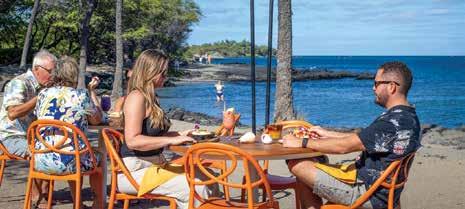
Savor Island style culinary creations from our collection of signature dishes, including fresh fish from our local waters. Every day our chefs go crazy with menu favorite Hook, Line and Sinker specials, delivering an ocean of flavors to your plate. Or try our signature sliced teriyaki steak, and don’t forget to sip and savor hand crafted cocktails to the sounds of live music.


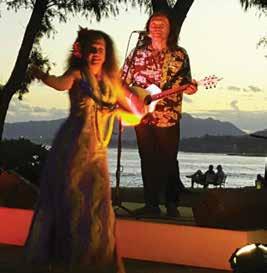









Always on the water’s edge, come celebrate life with us. KAMAAINA OWNED | OHANA OPERATED SINCE 1969 SIPSAVORSTAY.COM
ON THE ROCKS & HUGGO’S | KONA
LAVA LAVA BEACH CLUB | BIG ISLAND
LAVA LAVA BEACH CLUB | KAUAI
KAI EATS + DRINKS | KONA
STORY BY LARRY LIEBERMAN
Big Shows for Small People
For almost seventy years, Honolulu Theatre for Youth has brought original productions to the wee masses
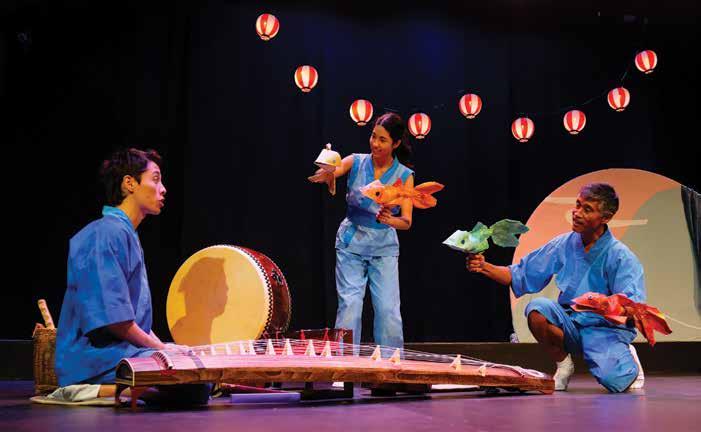
Houselights dim before a matinée performance at the three-hundred-seat Tenney Theatre in Honolulu. Some of the all-ages audience of kids, teens and adults regard the minimalist set decorations with curiosity: Why is there a modern deejay booth with speakers and turntables, when The Royal School is supposed to be a play about heirs to the Hawaiian monarchy? The unraveling of convention
starts making sense within moments, as the Honolulu Theatre for Youth (HTY) launches into an original historical drama/hip-hop musical à la Hamilton, set in the nineteenth-century Kingdom of Hawai‘i.
“What we’re looking for first and foremost is engagement with the community,” says The Royal School playwright and performer Moses Goods, whose Native Hawaiian ancestry partly
inspired him to co-write the story (along with local playwright Lee Cataluna) based on true events at a school for the children of Hawaiian royalty. “Yes, our work is targeted to youth, but we don’t dumb it down; we focus on the craft of storytelling and try to make it interesting, entertaining and informative for people of any age.” Goods, 46, has been part of HTY for more than twenty years and has written or co-written
44 DEPARTMENT
PHOTOGRAPHS BY MENGSHIN LIN
courtesy honolulu theatre for youth
Experience our Hawaii
Whether you want to fly high above the clouds, hike to a waterfall or snorkel with our sea life, adventure awaits.













Hawaii’s premier live music venue Year-round entertainment
Daily live island music paired with handcrafted beers and cuisine
Home of Duke’s on Sunday with the incomparable Henry Kapono 4–6pm
Come be here.
Discover our experiences and find the places where Hawai‘i’s most renowned artists come out to play. Scan

to
view Activities & Experiences
OUTRIGGER Waikiki Beach Resort
OUTRIGGER Waikiki Beach Resort
OUTRIGGER Waikiki Beachcomber Hotel
OUTRIGGER Kā‘anapali Beach Hotel



many of its productions. “Whether it’s for elementary or high school students, we touch on things that are important to their sense of place, of belonging, of being part of a greater whole,” Goods says. “We may tell stories that address the environment, social issues or other vital topics. It’s educational, but underneath it all what we’re really sharing is the joy of imagination and artistic expression.”
The Royal School, one of HTY’s productions aimed at teenagers, depicts growing pains among a group of teenage royals who find themselves changing as Hawai‘i and the world change around them. The musical
format puts a new spin on historical characters and the classic themes of love, loss, ambition and familial duty to which modern teens can relate. The adults in the room come away with a deeper understanding of some of the most influential people in Hawai‘i’s history. A detailed performance guide accompanying the show is filled with educational material, glossaries, writing and visual art exercises aligned with the Hawai‘i State Department of Education curriculum goals.
“One of our major jobs is to take conversations that are happening in this community and include young people and their families in those
/ Creative
are a mainstay of
RIGHT / HTY builds its own sets and makes most of its props. Here, technical director Eric West creates a bamboo prop backstage at
conversations,” says HTY Artistic Director Eric Johnson. “So when we are talking about history, nature, water or energy, we’re bringing young people into topics and conversations that matter to their families, friends and neighbors and connecting them with the wider community. These kids are the next generation that will shape our future.”
At an upbeat show called Under the Blue, preschool and elementary students learn about the ocean, its inhabitants and the trash that threatens them. The room full of exuberant toddlers and singledigitarians is loud and rambunctious.
46 DEPARTMENT: BIG SHOWS FOR SMALL PEOPLE
OPENING PAGE / Taiko drums, lanterns and talking fish delight children in the Honolulu Theatre for Youth’s production of Koi Storytime
ABOVE
props
HTY productions. Here, Jarren Amian (left) and Emily Wright bring the undersea world to life for Under the Blue.
LEFT / HTY artistic associate and actor Moses Goods in the green room at Tenney Theatre.
Tenney Theatre.

Starfish Collection HAWAII’S BEST People’s Choice Awards The Star-Advertiser 2014 – 2023 An incomparable collection of Hawaiian and Island lifestyle jewelry OAHU • MAUI • K AUA I • BIG ISLAND OF HAWAI I • NCL PRIDE OF AMERICA BELLEVUE • BOSTON • CH ICAGO • DALLAS • DENVER • L AS VEGAS • NEW YORK ORLANDO • PHILADELPHIA • PLEASANTON • PORTLAND • ROSEVILLE • SAN DIEGO SAN FRANCISCO • SAN JOSE • WASHINGTON, D.C. NaHoku.com • 1- 800 -260 -3912 NAHO-36574_EffyStarfish_HanaHou_FebMar2024_7.3x9.8.indd 1 12/4/23 8:07 AM

But when the show starts all eyes and ears become fixated on the colorful, interactive performance. The kids laugh, cheer and participate. “Deeper! Deeper! Deeper!” they chant as the characters descend into an undersea world made vivid through props and puppetry. Billowing blue and white streamers as waves, bright green ribbons as kelp forests, corals knitted from colorful yarn, and funky fabric fish with glowing eyes. The all-senses show includes spritzing the audience with water, and a climactic rain of bubbles has kids dancing in the aisles.
“My favorite things were the acting and the music,” says 8-year-old Alma Clarke after the show. “They also taught us a lesson, but it was fun!” What kind of lesson did she come away with? “We learned that lots of trash goes into the ocean,” Alma says. “And if we can, it’s our responsibility to pick that trash up. And some can be recycled, too—you can actually make something else from it, like arts and crafts.”
The content, style and preschoolto-elementary audience of Under the Blue are completely different from that of The Royal School, and the two productions demonstrate HTY’s range of stagecraft. “Sometimes people think it’s a children’s theater, so they’re expecting familiar stories like The Little Mermaid,” says Johnson. “But all of our works are original, locally written and locally produced. We almost exclusively create
our shows from scratch. The scripts, the songs, the props—it’s all done by an in-house team that loves telling stories of this place for the people of this place.”
In addition to producing its own theater, HTY also holds the distinction of being the state’s only theatrical production company that employs its cast and crew year-round. “We pay our performers and ensemble a living wage, with health benefits and retirement,” Johnson says. “They are full employees, which is very uncommon. It’s a completely different model than typical community theaters, where only a few staff are paid and most of the participants are volunteers.”
To keep such an operation running, especially in the post-pandemic era, requires strategic collaborations and partnerships. Commercial and government organizations often provide support and expertise. Bishop Museum, the Board of Water Supply and many other organizations and agencies have provided everything from funding to technical support, research and guidance to ensure complex topics are handled accurately; it’s up to HTY to make those topics accessible and entertaining. “Theater is a perfect way to get young people excited about the issues that are facing us,” Johnson says. “It doesn’t have to be didactic. It’s just a way of bringing out curiosity in a subject. We often work with a lot of different community organizations to make
sure we get the history, the science and the other details right. And those have been some of our most successful collaborations.”
HTY stages seasonal shows throughout the year in its primary venue at Tenney Theatre on the grounds of the Cathedral of St. Andrew in Honolulu. K–12 schoolkids are bused in regularly on field trips to see the productions. In many cases HTY is the first and often only exposure local kids have to live theater. “We want them to learn, and we also want them to be inspired by the creativity,” Johnson says. “Theater is a beautiful place to bring children and ideas together.’”
Staff also organize touring versions, taking many of HTY’s productions to neighbor islands, which have even fewer opportunities for children to experience live theater. Some productions have also toured nationally and internationally. The logistics are different for touring shows, so the costumes, props and set pieces must be designed for mobility. Some HTY staff also work in residency as on-campus teaching artists at various schools on O‘ahu or neighbor islands, focused on helping those schools develop or improve their arts programs. “Honolulu Theatre for Youth provides programs and services to more students in Hawai‘i than any organization outside of the Department of Education,” says Managing Director Becky Dunning. “We want to give kids a chance to experience live theater, no matter where they live or what their background is. When young people connect with stories they can relate to, it helps them relate more to the world they live in.” Dunning says one of the most rewarding aspects of producing live shows for young audiences is the positive impact it has on their lives outside the theater. “Lots of studies show the benefits of exposure to the performing arts at an early age,” Dunning explains. “Live theater makes it easier for kids to understand emotions, how other people think and feel. It helps them develop a deeper sense of empathy that can improve the way they communicate and interact with others.”
Exposure to the arts often inspires audience members to get involved themselves. To help kids discover and develop their own talents, HTY conducts classes and workshops in acting, writing
48
“We’re ‘ohana,” says HTY artistic director Eric Johnson of the tight-knit, full-time ensemble cast and crew, who do everything from performance to administration and fundraising. Above, HTY staffers pack into the van that delivers performances to schools around O‘ahu.
DEPARTMENT: BIG SHOWS FOR SMALL PEOPLE
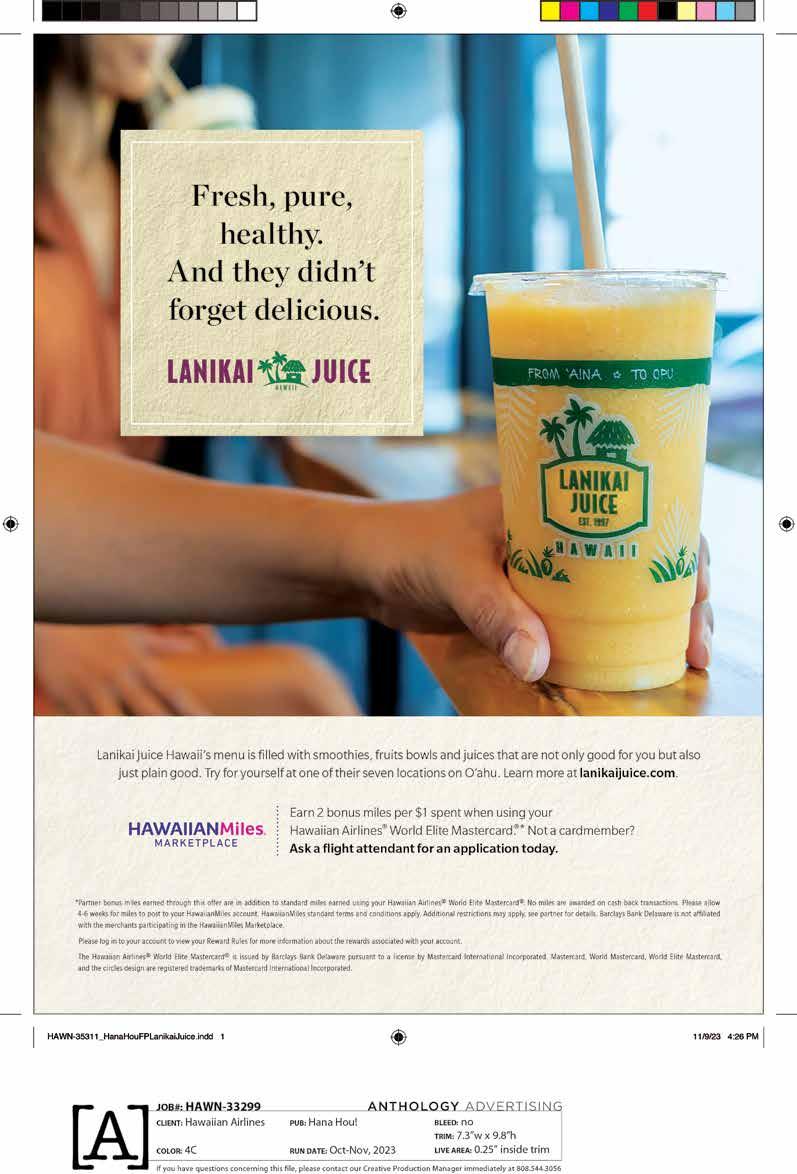

“We almost exclusively create our shows from scratch,” says Johnson. “The scripts, the songs, the props—it’s all done by an in-house team that loves telling stories of this place for the people of this place.” Above, Wright engages preschool and elementary-age children before a performance of Under the Blue
and other aspects of theatrical arts for kids. Aliya Aiona-Shapiro, now 14, is a three-time alumna of HTY’s Summer Drama Program. “It’s really fun and exciting,” says Aiona-Shapiro, who joined her first summer class when she was 10. “Every year, there are new things to explore and new people. We learned how to work in an ensemble, creating and then memorizing our own script, running through the lines together, working with props and costumes and then performing for friends and family on the big stage, which was so exciting! It pushed my limits and helped me really see the stuff I could do.” HTY staffers provide prompts but let the kids do their own heavy lifting artistically, producing and performing their own show every year. “I felt like I learned to be a better leader and work better with people,” says Aiona-Shapiro. “And after going through these programs, I think it’s easier for me to talk to people and be more outgoing. It’s really helped me with that.”
Aiona-Shapiro has gone on to earn leading roles in school plays and looks forward to continuing her involvement in the performing arts. She’s in good company: Over the years HTY has produced a number of outstanding performers, many of whom have joined the organization as cast and crew. Notable cast members past and present include the late beloved Hawai‘i comedian Rap Replinger, Goods (who has also earned multiple credits in film and television, including appearances on shows like NCIS: Hawai‘i and a major role alongside Jason Momoa in the upcoming Apple TV+ series Chief of War) and a certain diva often referred to as the Divine Miss M. Earlier in her career, Miss M was an HTY cast member who simply went by her given name: Bette Midler. “A lot of cast members have gone on to other work in theater, film and television,” Johnson says. “But I’m proud of the fact that so many stay right here and remain part
of this team. We have people who have been with HTY for multiple decades. We’re ‘ohana.”
“This is our sixty-ninth season,” Dunning notes. “We were actually incorporated in 1955, when this was still the Territory of Hawai‘i.” With such a broad impact across the state, why are they still called “Honolulu” Theatre for Youth, instead of “Hawai‘i” Theatre for Youth? Dunning explains that HTY founder Nancy Corbett worked for the City and County of Honolulu, and HTY was originally conceived as a program within the Honolulu Department of Parks and Recreation. “She really felt that all children deserve opportunities to experience great theater and great art. She wanted to bring families together around storytelling, songs and live performance. It’s grown so much since then, thanks to sponsors, donors and supporting members. But no matter how much we grow, we’ll always be the Honolulu Theatre for Youth.” hh
50
DEPARTMENT: BIG SHOWS FOR SMALL PEOPLE

Those Who Can, Teach Ross Williams coaches
surfing’s greats and greatsin-training
Cruise the aisles of the Pūpūkea Foodland when the winter circus is in town, and you’ll see something like a surf-industry career expo. Touring pros from all the planet’s points and reefs, local heroes and moms-with-groms. Big-name board shapers and backyard ding-fixers. YouTubers with one hundred thousandplus followers and would-be models looking to be discovered. Photographers, lifeguards, surf instructors and the occasional feral surf rat, shirtless and well brined after what looks like a night or ten spent sleeping on the beach. No judgment on any of them: Everyone on the North Shore has their own path, and there are far worse dragons to chase than living the surfing dream.
A few miles farther uphill, in a house with a view all the way out to the horizon’s blue curve, Ross Williams is taking a different path: husband, father of three, dog daddy of two and all-around likable dude; occasional surf contest commentator and full-time coach to a stable of the world’s best surfers, including two-time world champion John Florence and perennial contender Tatiana Weston-Webb. There was a time when Williams made his living as a professional contest surfer, but as can happen in that world, a short run of bad luck left his future up in the air. Safe to say, he nailed the landing.
Williams’ family moved to the North Shore from Toledo, Ohio, in 1979, when he was six. He began
surfing not long after, and at 15 won the boys division of the United States Surfing Championships, the premier amateur title in the United States. By the early 1990s he was traveling the world on the professional surf tour. This was also when a friend of his, Taylor Steele, began making surf videos. “When I was young my goals were very simple,” Williams recalls. “It was just becoming a tour surfer, hanging out with Taylor and making surf videos with all my buddies, which back then was a great recipe to be a professional surfer.”
This was the era when VHS still walked the earth, and two of Steele’s earliest videos—Momentum and Momentum II—became counterculture touchstones, thanks to soundtracks featuring then-underground artists like Jack Johnson, blink-182 and Pennywise. They also starred a group of buds who were to become the next wave in modern surfing: Williams, Kelly Slater, Rob Machado, Shane Dorian, Kalani Robb, Taylor Knox, Benji Weatherly, Todd Chesser, Pat O’Connell … today collectively known as the Momentum Generation. The videos gave all of the surfers a huge visibility boost—the first video sold around twenty thousand copies. But their release also coincided with the period when the World Wide Web first went public, which in turn would completely alter the industry recipe.
“Back then, certain people were in charge of your career,” Williams explains. “The editors of magazines and the marketing directors of companies who would green-light endorsement contracts—man, you’d better impress them or your career would really be stifled. These days young surfers are expected to promote themselves on social media—on the one hand, it has blown the doors open, but the dark side is you need thick skin to be OK with people commenting. Nathan Florence [brother of John Florence] is a good example of someone who has made a nice career for himself as a social media guy: He’s got a bulletproof personality and just laughs at anyone who says

DEPARTMENT 52 STORY BY STU DAWRS PHOTOGRAPHS BY ARTO SAARI


intelligent to say or it’s not going to land.”
something sassy—he couldn’t care less because he’s just traveling the world and getting barreled.”
The majority of those who make a bona fide living from surfing still do so thanks to sponsorships; their livelihood is tied to visibility, and that in turn is often tied to success on the competitive surfing circuit. While the tours have changed since Williams was competing on the Association of Surfing Professionals’ championship tour, the general contours are the same. The World Surf League, the ASP’s successor, is made up of multiple tours for men and women: The Qualifying Series feeds surfers into the Challenger Series, which is the route to the ultimate goal, the Championship Tour (CT). At the beginning of each year, there are thirty-six competitors on the men’s CT and eighteen on the women’s; midway through the year, the bottom twelve men and six women are cut.
Making it to the CT typically takes years of competing on the lower tours, along with immense skill and a fair bit of luck: The playing field changes from
minute to minute, and though there are judging criteria, scoring is ultimately subjective. Even the world’s best surfers can have a heat where the waves simply don’t come or in which their scores fall a tenth of a point short based on the judging panel’s aesthetics. Unlike other sports, where it’s fairly clear when an athlete has lost a step, in pro surfing a relatively short string of bad luck at the wrong time can drop a surfer to the lower, less visible and less lucrative tours. It can be a sudden reckoning for young athletes still in their prime: Pack your bags and spend a bare minimum six months trying to requalify for the main stage, or pull the plug and find a new way to make a living. This was the choice that Ross Williams faced in 2001, when at age 29 a bad competitive season cost him his CT spot. The midyear cut, established in 2022, is one of the major differences between the current and former tours: In Williams’ day, surfers had an entire year on the tour to requalify for the following year, but this also meant a minimum of a year on the lower circuit if one failed.
Then he broke his foot surfing. “It required two surgeries and a year of being sidelined,” he says. “When I started surfing again, I was only 30 but had zero ranking—everything’s progressed a bit in the surf world, and now people in their thirties are in their prime, but back then it felt very old. At the same time, I’d met [current wife] Jen, wanted to get married and start a family. I was fine being sort of retired, but I didn’t know quite what that meant. … There was a good four or five years where I was just trying to find myself again.”
Williams was lucky in that he’d recently signed a six-year contract with the surfwear company Ezekiel, which didn’t require him to compete. “My sponsorships weren’t super lucrative, but it was still a decent living. After Ezekiel I started riding for Reef, which was much more casual—basically, my friend Heath ‘Nutty’ Walker was the team and marketing guy, and I was doing some promotions for them but it was not a very serious deal. … They were basically just sponsoring an older guy that they liked.”
54 DEPARTMENT: THOSE WHO CAN, TEACH
Ross Williams (seen above at right and on the previous page at ‘Ehukai Beach) has coached surfer John Florence (seen above left) to two world championships so far. “The guys who win the titles are freaks—they’re just so talented,” Williams says. “So you better have something


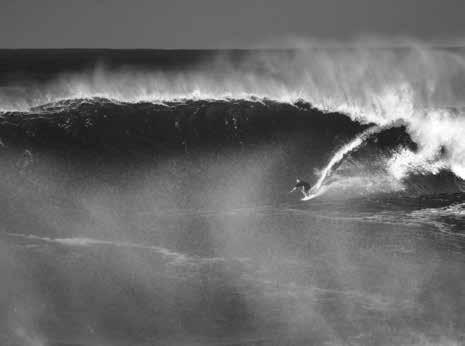
“I knew I’m a surfer and was always going to be a surfer,” says Williams (seen above left at Ke Iki Beach), of the point in the early 2000s when he was contemplating a transition away from competitive surfing. That he is: At 50, he still drops into waves—like the one seen above right at Waimea Bay last Thanksgiving weekend—that are the envy of surfers half his age.
But Williams’ relationship with Walker ultimately led to the next step in his evolution, which was also facilitated by the internet and the rise of livestreamed surf competitions. At the time, Reef sponsored the Hale‘iwa Pro, one of the jewels in the coveted Triple Crown of Surfing—the others being contests at Sunset Beach and Pipeline. While still on the pro tour, Williams had made the finals in each of the Triple Crown events and had a wealth of experience when it came to competing in the world’s heaviest waves. Over the years he also surfed in multiple Eddie Aikau Big Wave Invitationals at Waimea Bay, finishing as high as fourth place in 2001. (He had a shot at winning the 1995 contest after getting a near-perfect score on an extremely rare barrel, only to have the event called off midway through when the surf dropped below the requisite forty-foot faces.) “Nutty, [Hale‘iwa contest director] Marty Thomas and [Triple Crown director] Randy Rarick, those three guys kind of said, ‘Hey, Ross has got a little thing here. We should see if he wants to commentate.’ So I did Hale‘iwa, and Randy liked it and said, ‘You want to do Sunset and Pipe?’ And of course I was really happy to do that.”
A WSL webcast is as polished as any other sports broadcast, though with a fair bit of sand between the toes. Many of the WSL’s commentators are themselves former pros, with varying degrees of verbal adroitness, ranging from the occasional word salad to made-fordrinking-game catchphrases—speaking for a friend, one former world champ’s “calm, cool and collective” caused more than one hangover in its day. In that sea, Williams stands out for his clear analysis, salted with super-genial dad-adjectives (dadjectives?) that one just doesn’t normally hear in bro-speak: Words like “sassy” and “saucy,” used to describe a heavy cutback or massive aerial move. You can’t help but love the guy.
Williams spent three years, from 2013 to 2016, traveling the CT as a fulltime commentator. He still maintains a relationship with the WSL, though he’s scaled back to working events on the North Shore and occasionally overseas. It was during this period that Williams was approached by an old friend, Jake Mizuno, about coaching his son Noa. “I had done zero coaching up to that point, never even thought about it. … I think Jake just liked how analytical I was with commentating,” he says. “It was also just a new world as far as a career
goes—today there are maybe twenty or thirty people at most who coach for a living, and probably far fewer than that are coaching on the tour. I did that for a couple years with Noa, and then John John [Florence] approached me in 2017.” That year, after six years on the CT, Florence won the first of two back-toback world championships. A coaching career was born.
These days, Williams works with six surfers, three currently on the CT—Florence, Weston-Webb, Bettylou Sakura Johnson—and three who are working their way up: Finn McGill, Luke Swanson and Tama Hannemann. At 31, Florence is the eldest of the group; 15-year-old Hannemann, the youngest. At 27, Weston-Webb is a tour veteran and perennial contender, having finished as high as second in the world in 2021; 18-year-old Sakura Johnson first qualified for the CT in 2022 and was ranked tenth at the end of last year. How does Williams handle such a range of talent and experience?
“It’s so different from most sports, especially ball and bat sports, which are very structured,” he says. “Surfing is so artistic, and there’s just not one type of professional surfer. With someone like John, you’re working with
56
DEPARTMENT: THOSE WHO CAN, TEACH




Collection available exclusively at Na Hoku An incomparable collection of Hawaiian and Island lifestyle jewelry OAHU • MAUI • K AUA I • BIG ISLAND OF HAWAI I • NCL PRIDE OF AMERICA BELLEVUE • BOSTON • CH ICAGO • DALLAS • DENVER • L AS VEGAS • NEW YORK ORLANDO • PHILADELPHIA • PLEASANTON • PORTLAND • ROSEVILLE • SAN DIEGO SAN FRANCISCO • SAN JOSE • WASHINGTON, D.C. NaHoku.com • 1- 800 -260 -3912 HAWAII’S BEST People’s Choice Awards The Star-Advertiser 2014 – 2023 NAHO-36575_LeVianAlohaTurtle_HanaHou_FebMar2024_7.3x9.8.indd 1 12/4/23 8:06 AM

“There’s no one type of professional surfer, and that’s what’s so
“I get to moonlight being a psychiatrist, just
is different … I really like that.”
that last 5 percent—there is not a whole lot of room to work with in terms of improvement. But he has really high standards and a really solid work ethic, and nothing is ever perfect: He has funny little techniques in his style that sometimes don’t go great with being a consistent contest surfer or that just don’t look right to my eye personally. Surfing is like food … everyone has their tastes. So I’ll tell him what I don’t like about his surfing, and if that resonates with him, that’s fine. … He takes it if he wants it.”
Beyond this kind of practical input, Williams plays an important role in maintaining the overall mental health of his athletes. “In my opinion, digesting a bad score from a judge is the toughest part about being a pro surfer,” he explains. “We all go up and down with how we’re feeling day by day, whether we feel really confident
or fragile and insecure. Now imagine someone throwing numbers at you all day long, and then on social media being an easy target because you either won or you lost, you’re either performing or you’re not. That’s where I dip into the psychology of it and try to be there for them, shifting gears from pumping them up before a contest to bringing them back to where they can compete mentally. And then somewhere in the middle of all that, we still need to get in the weeds and ask, ‘OK, but what did you do wrong?’ It’s the same with Tatiana, it’s the same with Sakura, all the people I coach, especially at that level.”
In the early days of his coaching career, Williams was back on the full tour, doing things like organizing travel in addition to coaching. Over time his job description has shifted to something more manageable. During the offseason
all of his surfers live within a few miles, so it’s relatively easy to put in the long hours of working on technique and dialing in what surfboards to ride in what conditions. During the competition year, which these days also begins on the North Shore, his travel schedule is largely dependent on what individual surfers are feeling and what they need. “I am here at home for the first two events, which is convenient. Then I’ll go to Bells [Australia], which is a big event, trying to keep the momentum going, and from there I’ll periodically go to events just to check back in and refresh their memories on anything that we worked on in the offseason—the idea is to find that balance of them being very confident and independent and them benefiting from a coach.”
These days, that balance is shifting back toward in-person. In 2023, Williams traveled to most of the CT events, and
58
engaging about coaching,” says Williams, seen above at Log Cabins.
getting in their heads and vice versa—it’s a vast area to play in as a ‘job,’ and each surfer
DEPARTMENT: THOSE WHO CAN, TEACH

“I like to converse with my surfers and come to a conclusion together,” says Williams, seen above with up-and-coming surfer Bettylou Sakura Johnson. “What’s the best way to win a heat? There’s no freaking perfect recipe.”
in 2024 he plans to be at every stop on the tour. “The ocean is just so unpredictable. For each heat of a contest we’re trying to figure out their opponent, trying to figure out the water for that thirty minutes, and then they have to get out there and just improvise. I’ve been to all these venues a hundred times as a competitor and then as a commentator and as a coach, so I have a really good, intimate knowledge of everywhere they’re surfing. So it’s pretty good. … We’ve got a pretty welloiled machine.”
All of this adds up to a full-time job and then some, especially during the contest season. Even so, “work/life balance” takes on a slightly different shape in this context. “I still surf almost every day, and it really helps me as a coach, because no matter where you are skill-wise, you are always captivated by surfing and how hard it is,” he says. “When you’re young and surfing at your best, let’s say you’re a pro, you’re really trying to perfect a big aerial or something else really crazy and exciting. At my age I get really satisfied if I do a nice bottom turn or carve where I stay on-rail for a long time—it doesn’t matter; it never gets old.” hh

Marks of Distinction
The commitment and kuleana of the maka uhi, the Hawaiian facial tattoo
When you look at somebody with a facial tattoo, you cannot help but stare,” says Kyle Nakanelua. Three black lines run down the left side of his face across his eyelid to his chin. Two of the lines zigzag in a pattern reminiscent of water or electric currents, and when he smiles they eddy around his mouth. The retired Maui fire captain is accustomed to people avoiding his gaze or openly gawking. “I’m OK with that,” he says. “When I talk to people, I want to look into their face, too. I want to see their eyes, their wailua [spirit]. I want to know who I’m talking to.”
Nakanelua’s markings signify a potent evolution—for him personally, but also for his indigenous culture. He came of age in the 1970s during what’s now known as the Hawaiian Renaissance. As a high school student, he witnessed fellow Native Hawaiians reclaim their identity, protest the US military’s bombardment of Kaho‘olawe and launch the replica Polynesian voyaging canoe Hōkūle‘a. “After Hōkūle‘a,” he says, “our language came back. Hula came back. Men’s hula came back. All these things started to blossom, and kākau— tattooing—was one of the final things to come forward.”
The English word “tattoo” derives from “kākau” in Hawaiian and “tatau” in Tahitian and Samoan. But contemporary tattoos bear only superficial resemblance to the handtapped Polynesian markings that date back centuries. More than a decorative art or means of self-expression, kākau is a spiritual practice. The tattooist chooses the markings, or uhi, for you after you perform various protocols. These uhi represent a visible covenant between you, your akua (gods) and your kuleana (responsibility) to your ancestors and community. The most dramatic manifestation of this covenant
FEATURES STORY BY SHANNON WIANECKI PHOTOGRAPHS BY DANA EDMUNDS
60
“

is the maka uhi, or facial tattoo. Those who wear it shoulder great responsibility.
Nakanelua recalls a story his friend Sam Kaai told him, an indigenous account of the Hawaiian Renaissance: “When Captain Cook landed in Hawai‘i, he touched the mo‘o [lizard deity]. The mo‘o’s tail fell off and it escaped. The mo‘o was our spirit and its tail was our identity. The mo‘o ran away to hide. So our whole identity was hiding from us for two hundred-plus years. Then, when Hōkūle‘a came on scene and its steering oar hit the water, the mo‘o’s tail grew back.”
Nakanelua’s own tail grew slowly. After school he served in the Air Force, then joined the Maui Fire Department. In 1989 he took on the responsibility of caring for his grandparents’ lo‘i kalo (taro farm) in Wailua, a remote village in East Maui. He began incorporating indigenous practices into his life— speaking ‘ōlelo Hawai‘i (Hawaiian language), wearing a malo (loincloth) and practicing lua (martial arts). When he talked about getting a tattoo, his sister intervened. She knew someone who knew the proper protocols.
Full of confidence, Nakanelua flew to O‘ahu to talk to Keone Nunes. “I figure I tell him what I like and he’s going to put it on me,” Nakanelua remembers. “He says, ‘Oh no, we’re not going to do that. You need to learn your mo‘okū‘auhau [genealogy]. When you get that sorted out, come back to me and we’ll look into the designs that are appropriate for you.” Nakanelua laughs. “I was pissed off! But he told me exactly what I needed to hear.”
After Nakanelua dug into his lineage—which includes powerful chiefly families—he felt an obligation to live up to his ancestors. “I thought, ‘Wow! This is serious. I gotta do the right thing, because no can make them shame. Mo bettah die than make them sad and disappointed.’” As promised, Nunes identified specific motifs associated with Nakanelua’s family and tattooed them on his leg in the ancient ala niho style,
from the hip down to the ankle. “At that time there were only four people in the world with the ala niho,” says Nakanelua. “I became number five.” His brothers in ink included cultural powerhouses: the artist Sam Kaai, revered hula teachers Keali‘i Reichel and Uluwehi Guerrero, and Nunes himself.
Today Nunes is recognized worldwide as the authority on Hawaiian tattooing, but at the time he was still a novice using a conventional tattoo gun. He reluctantly began tattooing in 1991, only after realizing that he possessed rare knowledge. At that time, little information about kākau existed. There were mentions of the practice in the oral and written histories. Drawings by early European explorers featured uhi, and mummified remains offered further clues. But there were no living practitioners. Nunes knew more than most; growing up on O‘ahu’s rural leeward coast, he heard kūpuna (elders) describe old traditions, including kākau. One of his aunts had been a tattooist’s assistant; her firsthand knowledge was precious.
Nunes had learned the prayers and patterns associated with kākau, but not the practical application. So he sought out a living master: Samoan tattooist Su‘a Sulu‘ape Paulo. While Hawaiian and Samoan tattooing traditions aren’t identical, they’re similar enough to translate. Both approach the art as a sacred practice. Both use needles carved from bird or fish bone and use ink made with soot from the burned nut of the kukui (candlenut) tree. Paulo accepted the Hawaiian as an apprentice, showed him how to make instruments and hand-tap in the old way. Designated assistants or “stretchers” hold a person’s skin taut while the tattooist (historically male) gently hammers ink-drenched needles into the skin with a mallet.
Nakanelua shows off the striking checkerboard pattern on his inner leg. “This was Keone’s first design with traditional tools,” he says. “It’s a very old motif called mo‘o.” One of the definitions
FACING PAGE / Hawaiian tattoos typically feature geometric shapes placed asymmetrically on the body, such as Kyle Nakanelua’s uhi maka (facial tattoo), which evokes his family lineage.
PREVIOUS PAGE / Hoaka De Los Reyes’ marks allude to his work as a stone carver— the dark, notched lines represent the stone walls of a heiau (temple) or fishpond; the spaces between are pathways.
of ‘mo‘o’ [in addition to the lizard deity] is ‘succession.’ So Keone’s first traditional work was a succession of that which was and that which was to come.” From that point forward, Nunes devoted himself to traditional tattooing. Nunes moved into an old church in Nānākuli, where he tattooed hundreds of people. They came to him with genealogies in hand, ready to perform the required protocols, which ranged from consuming special foods to learning to speak Hawaiian. The tattooist prepared, too, observing dreams and hō‘ailona (signs) and cleansing his tools in the ocean before dawn. Nakanelua participated in a hua moa, or rooster’s egg ritual, which symbolizes rebirth. “They break the egg on your head and rub it on your body,” he says. “That’s the amniotic fluid and the view from the womb.”
Nakanelua recalls conversations about the optics of facial tattoos. In ancient Hawai‘i the kahuna ke uhi (master tattooist) occupied a respected position; he alone could spill the blood of the ali‘i (chiefs). Uhi were treasures that families saved up for. But in modern society, tattoos—particularly facial tattoos—carry a stigma. “We wanted to pull that paradigm more towards the middle,” says Nakanelua. “To highlight sacredness and the aspect of disciplined power, or power that was channeled.”
Feeling protective of kākau, Nunes carefully considered how to reintroduce the maka to a modern audience. He decided three men were ready for the responsibility. One was a steelworker,
FEATURES: MARKS OF DISTINCTION 62


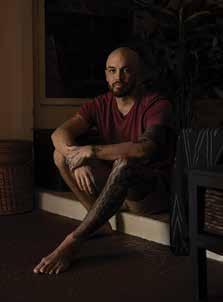
FACING PAGE / Kalehua Krug wears multiple uhi maka: The lei hala (triangles running from the back of his head to his chin) symbolizes a progression in learning. The black stripe across his mouth supports his role as ceremonial speaker.
ABOVE / Kamali‘i Hanohano devoted himself to kākau (tattooing) from a young age and views the practice as a way to reestablish a fully indigenous approach to life.
already fully inked. Another was a Hawaiian immersion schoolteacher. The third was a Hawaiian curriculum specialist for the University of Hawai‘i. “They were the perfect candidates,” says Nakanelua. “The current face of the old people who held these positions.”
But what about a fire captain? Could someone in a position of whitecollar authority show up to work wearing a maka? “To celebrate my fiftieth year on the planet,” says Nakanelua, “we decided to do it.” This time part of his preparatory protocols included calling the state fire chief and the union. Everyone was supportive—mostly. “My immediate supervisor kind of hemmed and hawed,” says Nakanelua. “I had to tell him, ‘I’m not asking for your permission. There are no rules that prevent this. As a courtesy to our rank and privileges, I’m notifying you that this is going to occur.’”
When the day arrived, Nakanelua lay down on a lauhala mat, sank into a reverie and emerged less than an hour later with what he calls “one of his greatest treasures.” His 13-year-old son served as a stretcher.
“That old mo‘o, its tail is growing back,” he says. “With these traditions or ceremonies, it’s the old people and their ways coming forward. And now you have obligation. You have responsibility. It’s not you anymore; it’s them. You’re them, here and now, and what comes from you extends them.”
Nakanelua’s children have followed his example. His daughter got her ala niho after graduating from law school. His son is covered in ancestral motifs. His wife didn’t want anything to do with tattoos until last year. “She woke up one day and said, ‘I deserve an ala niho,’” Nakanelua says. “We were all present— myself, my son and my daughter—and we looked at each other and said, ‘We can make it happen.’” One of Nunes’ students came to their family home with tools, ink and stretchers. As Nakanelua watched his wife endure the pain and transformation with each tap-tap-tap, he says, he fell in love all over again.
Kalehua Krug was among those first three men to receive a maka in modern times. “The pain was actually euphoric,” he says. He felt intense waves of sadness, joy and pride to participate in the resurrection of a practice that had almost died. His face is now covered in uhi, including a solid black stripe across his mouth that relates to his role in ceremonial speaking. His dramatic visage attracts attention. At the airport he’s always “randomly” selected by security for extra inspection. But at Ka Waihona o ka Na‘auao, the Hawaiian charter school in Nānākuli where he serves as principal, he receives nothing but love and admiration. “The young ones see it as decorative, not scary,” he says. “They already want to do it to their faces.”
Krug grew up feeling ambivalent about his identity. “My mom is HawaiianPortuguese and my dad is from Montana, so I have this beautiful pink hue to my skin,” he says. “I remember liking that I was Hawaiian, but not really understanding what that meant. I knew the names of my family. I knew the history. But I didn’t know how to tether to it.”
He was 19 when he sought out Nunes. He already had a few Hawaiianstyle tats: the state flag on one arm and “Hawaiian” written in Old English font on the other. Nunes challenged him to reach for something deeper—the essence rather than just the appearance of being Hawaiian. It took a year for Krug to commit, but from the first tap he was hooked. When Nunes opened up his first formal class for students interested in learning kākau in 2000, Krug was among the five chosen students.
He studied with Nunes for eleven years. He spent evenings and weekends at the church, where the cadence of tapping echoed from the past into the future. Today Krug weaves kākau into his life as a school principal, activist and musician. “Kākau is not there to lock itself in time,” he says. “It’s there to evolve and provide a form of magic for people to believe in and be moved by.”
65
FEATURES: MARKS OF DISTINCTION

FACING PAGE / “I don’t wear this [uhi maka] as decoration or to beautify myself,” says Honolulu building inspector Vaughn Victor. “I wear this in representation of the one hundred generations behind me. When I leave my house, I’m on point every second. What I do and how I do it is critical, because I’m being judged before I even open my mouth.” Among Keone Nunes’ first students, Victor has himself tattooed hundreds of people.
Krug continues to expand upon what he learned from Nunes. Hawaiian tattoo motifs tend to involve straight lines and sharp angles—precise geometries that don’t leave much room for error. Initially Krug used stencils and heat paper to transfer these patterns onto the skin. As he grew more confident, he switched to a pen. “But our ancestors didn’t use pens,” he says. He wanted to re-create the traditional process as much as possible.
The opportunity presented itself around ten years ago. Krug was invited to Kaho‘olawe for the annual Makahiki festival. The priests presiding over the ceremonies all wanted uhi. It was bound to be a meaningful occasion: the first kākau performed on the island in living memory, in a hale (house) that held an ancestor’s sacred bones. As Krug prepared to work on the first priest, he felt moved to put his pen away. He asked if the young man were comfortable being an experiment. The response: “Yeah, go Hawaiian!” And so Krug prayed, then tattooed the priest without any modern aid. It was a success and has become his standard method.
Krug has also experimented with the ink. Even hand-tap tattooists tend to mix kukui soot with conventional ink. Practitioners of the past used a mixture of kukui soot, oil and sugar cane juice. The old recipe is less viscous and a little finicky, but Krug gave it a try when working on his son. “My son’s skin has been touched only by our traditional inks,” he says.
For several years now, Krug has been sharing the practical and
esoteric aspects of kākau with his son and other students. “I teach them to carry themselves in a way that allows people to talk to them,” he says. “I’m a big guy, and the tattoos scare people off sometimes. My intention is to be a bridge builder.”
Kākau can serve as conduit between people, living and departed, and the natural environment. Tattooists harness the mana (spiritual power) of the plants and animals that they use: the kukui nut soot, the ‘ūlei wood mallet and bird-bone needles. In turn, those species live again through the tools and the resulting marks worn by people.
In 2012 Krug traveled to Midway Atoll to ask permission of the mōlī (Laysan albatross). “I didn’t want to take anything from the birds without them knowing who I was,” he says. Hawaiian tattooing needles borrow their name from the bird, and while mōlī needles can be carved from various animals’ bones or tusks, albatross is ideal. Less porous than whale or cow, the longdistance flier’s bones are dense, thin and lightweight. Harvesting albatross bones was probably never easy, but today it requires a trip to one of the most remote patches of sand in the Pacific.
Krug arrived on Midway as roughly one million majestic black-and-white birds descended en masse to nest. Each morning he set out by bicycle in search of a bird to interact with. He laughed and yelped as uncooperative albatrosses dodged his grasp and pecked his arms. He didn’t mind; it was all part of rekindling the relationship.
“Just being able to see them and rebuild that natural connection was powerful,” he says. “They teach us about themselves, but also about who we are. Because when we use them, we utilize their essence, we become them, too. We enact behaviors that are mōlī-like and live a life that betters their existence.” That includes visiting them, advocating for them and protecting their habitat, he says. “That’s our responsibility to them.” During Krug’s stay on Midway, he carved a set of tools
and left them there as testament to this relationship. On his final day on the atoll, as if preordained, an albatross allowed him to hold it.
Keone Nunes remains this era’s kahuna ke uhi. When he moved to Thailand in 2019, he left his youngest student, Kamali‘i Hanohano, at the helm of kākau in Hawai‘i.
Hanohano was a devout student from the start. He witnessed his first kākau session in high school art class. His teacher at Kamehameha Schools surprised students by canceling the final exam and instead inviting Nunes to tattoo him in class. Hanohano was transfixed. Afterward he spoke with Nunes, who agreed to work on him provided he got his family’s blessing. “That meant asking my father, who is a really staunch man,” says Hanohano. “To make a long story short, he said no.” But Hanohano was determined. Every month for the next four years, he asked again. One day his father unexpectedly replied, “OK. Take your brother.”
Tap by tap, Hanohano received his ala niho in the Nānākuli church. “I was ecstatic,” he says. “I think I smiled the whole time.” In retrospect he’s grateful that his father made him wait. Those four years allowed him to cultivate a deeper connection to his culture and to Nunes. The following year, when Nunes asked him to come sit with him, Hanohano knew it was a test—“to see if I was the right fit,” he says. “Little did I know I was starting a lifelong apprenticeship.”
Hanohano dived in headfirst. He put his university degree on hold and moved to Wai‘anae—first into a spare room in Nunes’ house and then four houses down. “That afforded me a day-in and day-out learning environment,” says Hanohano, who sought to replicate his ancestors’ learning style. “I tried as best as possible to emulate my kumu [teacher]—to move, breathe and act as he did.”
He spent seven years in that immersive experience. Apprenticeship
FEATURES: MARKS OF DISTINCTION 67
is unpaid, so to make ends meet he did odd jobs and sold possessions to get by. His girlfriend supported him, even while pregnant with their first child. “It can be challenging when learning tradition in a contemporary world. It was hard,” he admits. “It was a financial sacrifice. But people invest thousands of dollars to go to college and get a doctorate.” And while he didn’t end up with a degree, “the knowledge and experiences from Keone, in my opinion, were far more valuable than schooling from an institution.”
Today his life revolves around kākau. When he isn’t actively tattooing someone, he’s researching or preparing.
“The sound of the mōlī echoes in the heart of my family,” he says. “If poi sustains our bodies, kākau uhi sustains our soul.” He views kākau as a means to advocate for all traditional Hawaiian practices. “I would love to see us regain spiritual autonomy—to reconnect to the natural world through ceremony and protocol on our terms, and not only when we can financially afford to do so.” Ideally, Hanohano hopes to create a space for apprentices to learn without the distraction of financial stress.
“Our currency should be mana,” he says. “Until we get to that point, we still have work to do.”
In the meantime, Hanohano continues to hone his understanding with every uhi he bestows. Each is different. Beyond ala niho and maka, there are marks to accentuate a skill or commemorate a loss. Historically, tattoos on the tongue gave the person authority to speak for someone who had passed.
“An uhi is an embodiment of kūpuna, a living marking that is meant to build a relationship,” says Hanohano. “It becomes part of you in a sense, but in the same breath it has a nature of its own. I maintain conversation with my uhi, I feed my uhi, I treat them as a conduit for kūpuna.
“You don’t have to be the all-knowing Hawaiian, whatever that means, to wear these markings. But the kahua
[foundation] has to be set. The timing has to be right. We have to be really careful about what is chosen. We’re opening the door a little bit more for kūpuna and akua to come through. If you’re not ready to feed it, you can expect it to bite back. It can have adverse effects. In extreme cases the person can actually go pupule [insane]. Events transpire in their life that are not positive: relationships being severed, suffering hardships or stuff like that.”
Hanohano feels no shame in acknowledging that sometimes the weight is a little too heavy. He has yet to receive a maka—though he eagerly anticipates wearing one someday. “I just feel that I’m not ready yet,” he says. “Visually, it communicates a certain amount of knowledge. I would rather be underestimated than overestimated.”
His time is coming. When Nakanelua’s wife requested an ala niho, it was Hanohano who flew over to perform the rites for the esteemed Maui family. And last year, when Hanohano’s father retired from the fire department, he asked his son for an uhi. “So we’re going over our mo‘okū‘auhau and having that dialog now,” says Hanohano. “It’s up to me to determine what will be the most appropriate. He’s trusting me—allowing me to dictate what permanently goes on him. It’s very special.” hh
FACING PAGE / “I’m probably the only person in the federal government with a facial tattoo,” says Tim Bailey. His marks represent the flight pattern of the nēnē, the endemic goose he has safeguarded during his thirty-three-year career at Haleakalā National Park. The placement of these marks honors his ancestor, Kahekili, the great Maui warrior who was famously tattooed from head to toe on his right side.
68
FEATURES: MARKS OF DISTINCTION
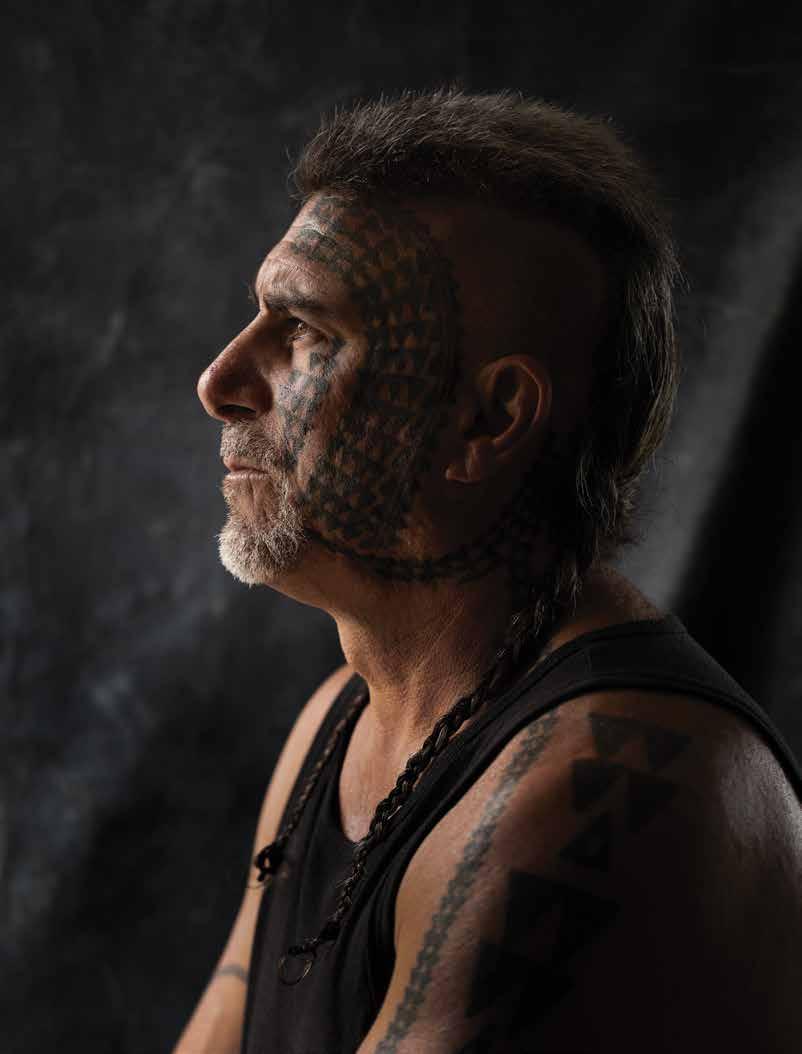

The Path of Hula
Practice, protocol and purification on the journey to
Merrie Monarch
STORY BY KATIE YOUNG YAMANAKA
FEATURES 70
PHOTOGRAPHS BY AKASHA RABUT

She rises to follow the sun. These last rituals mark the end of an eight-month journey to compete for the title of Miss Aloha Hula at the world’s most prestigious hula competition, the Merrie Monarch Festival. Breeze Ann Kalehuaonālani Vidinha Pavao arrives just before dawn at Ke Ahu a Laka, a heiau (temple) on the north shore of Kaua‘i. With her is her mother, kumu hula (hula teacher) Leinā‘ala Pavao Jardin, and seventeen of her hula sisters, who will compete in the group categories at Merrie Monarch this year, too. Barefaced and rubber-slippered, the women follow a rocky trail above Ke‘e Beach to the kuahu (altar) of Laka, the hula goddess. The heiau’s highest platform, cut into the cliff, is all that remains of a renowned ancient hula seminary, where thousands of haumāna (pupils) have danced.
The wāhine of Hālau ka Lei Mokihana o Leinā‘ala walk in silence, listening to the rhythm of the waves, the wind fanning the coconut palm fronds, the crunch of leaves on the forest floor. They brush laua‘e ferns as they pass, releasing a sweet fragrance. At the entrance to the heiau, Kumu Jardin chants an oli asking permission to enter a wahi pana (sacred place) that remains kapu (forbidden) to those who do not dance.
Breeze has come to offer her kahiko (ancient hula) to Laka before performing it at the 2023 Merrie Monarch Festival— her ninth trip to Hilo for the festival but her first time competing as a soloist. At 23, Breeze already knows what it means to give yourself to hula; she has been dancing since she was three. “I don’t think I’ve seen a day without hula,” says Breeze, who might one day become the kumu of this hālau (troupe). A dancer doesn’t ask or volunteer to compete for Miss Aloha Hula; she is chosen by her kumu when and if she is deemed ready. “When it was Breeze’s turn it was going to be really special because we were going to dig very deep into her lineage from Ni‘ihau,” says her mother, referring to the island west of Kaua‘i, where ‘ōlelo Hawai‘i (the Hawaiian language) is still spoken and visitors are rarely permitted. Kumu Jardin had her own turn on the Miss Aloha Hula stage as a contestant thirty years earlier as part of Hālau Hula o Kahikilaulani under the direction of the
late Rae Fonseca. “The minutes you are onstage sharing your hula are huge, but the journey to get there is so much more.”
What the audience sees is two seven-minute presentations by a beautiful, smiling dancer adorned with colorful lei. They’ll delight in the grace of her steps, the sway of her hips, the power of her oli. What they don’t see is the year of preparation, the visits to sacred places, the historical deep dives, sitting with kūpuna (elders) to hear unwritten stories and practicing traditions mostly forgotten today. Breeze must submit a forty-fivepage document detailing each aspect of her performance—from the mele (song) choice and the oli she wrote herself to the costuming and lei—to the judges. “We don’t just put on lole [clothes] and go dance a hula,” says Kumu Jardin. “We spent time on Ni‘ihau. Everything we share is with the blessings of the people of Ni‘ihau. Head to toe, everything is purposeful.”
There are hand-carved ‘ohe kāpala (bamboo stamps); it took Breeze four days to imprint her pā‘ū (hula skirt) with a design representing moena pāwehe makaloa (makaloa fiber mats), once an honored tradition of the people of Ni‘ihau, who wove large, intricately patterned mats of dried makaloa grass. These moena were treasured, considered as precious as Ni‘ihau shell lei, but today the art is no longer practiced. Breeze studied old weaving techniques, scoured Kaua‘i for makaloa and spent two months plaiting the belt for her costume under the guidance of an experienced lauhala weaver on Kaua‘i. Then there were the hours upon hours of intensive hula practice, seven days a week, until her feet ached. Last came the season of kapu (prohibition)— more than a month of restrictions, with no alcohol, no sex and a limited diet, meant to purify the mind, body and soul so that Breeze would step on the stage prepared to embody the spirit of hula. Without these sacrifices, without building her connection to the land and her lineage, the dancer cannot tell her story completely. This is what excellence in hula demands. “Our goal when we go to Merrie Monarch is to take everyone back to the place we are dancing about,” says Kumu Jardin. “Kapu provides the clarity for that.”

SPREAD / Breeze Ann Kalehuaonālani
at an ancient heiau on Kaua‘i as part of her preparation for the Miss Aloha Hula competition at last year’s Merrie Monarch Festival.
ABOVE / Pavao hand-printed the pā‘ū (skirt) she wears for her hula kahiko (traditional hula) performance with a design representing woven grass mats, a traditional art of the people of Ni‘ihau.
FACING PAGE / The wāhine of Hālau ka Lei Mokihana o Leinā‘ala hike through the forest on Kaua‘i to make offerings at the altar of the hula goddess Laka.
FEATURES: THE PATH OF HULA 72
OPENING
Vidinha Pavao dances

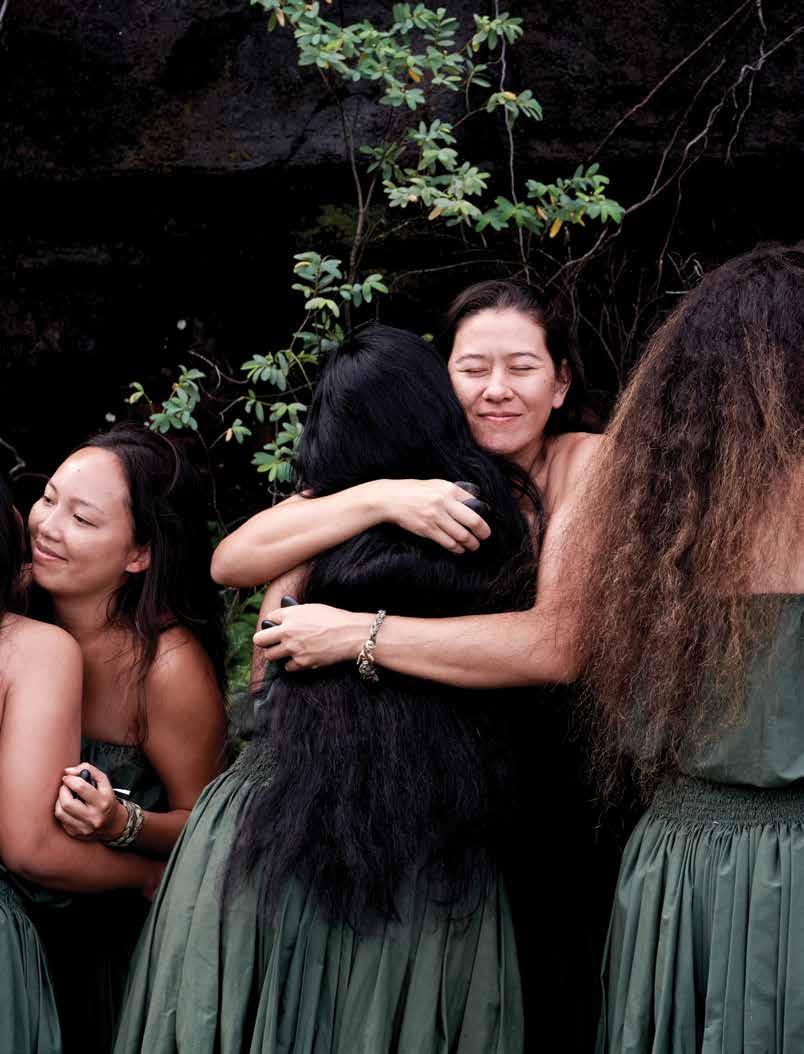


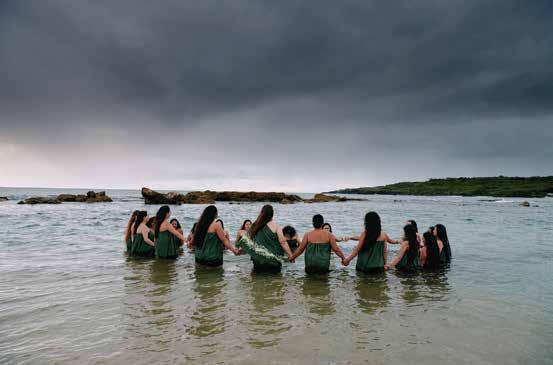
PREVIOUS SPREAD / Hālau (hula troupe) members embrace after the ceremony at Ke Ahu a Laka on Kaua‘i.
ABOVE / At Salt Pond Beach on the south shore of Kaua‘i, the hālau gathers for a hi‘uwai (water purification ceremony), their final ritual before leaving Kaua‘i for Merrie Monarch.
FACING PAGE / The hi‘uwai renews the dancer’s mind and spirit. It is a time for contemplation and honoring one’s kūpuna (ancestors), those who have come before them. They leave the water reborn, never looking back.
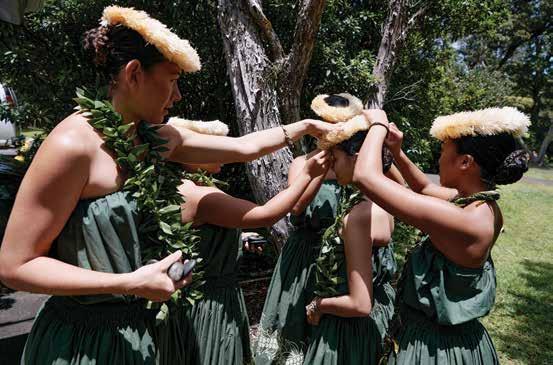
ABOVE / Lilia Merrin, Kailana Kanahele and Meiya Ramos fix their hula sister’s lei po‘o (head lei) before their presentation at Kalopā.
FACING PAGE / Kumu (teacher) Leina‘āla Pavao Jardin offers an oli (chant) to the forest and to her own kumu hula, the late Rae Fonseca, before entering the wahi pana (sacred area) at Kalopā.
FOLLOWING SPREAD / Gray Hilo skies silhouette the dancers of Hālau ka Lei Mokihana o Leinā‘ala during practice a few days before the start of competition.
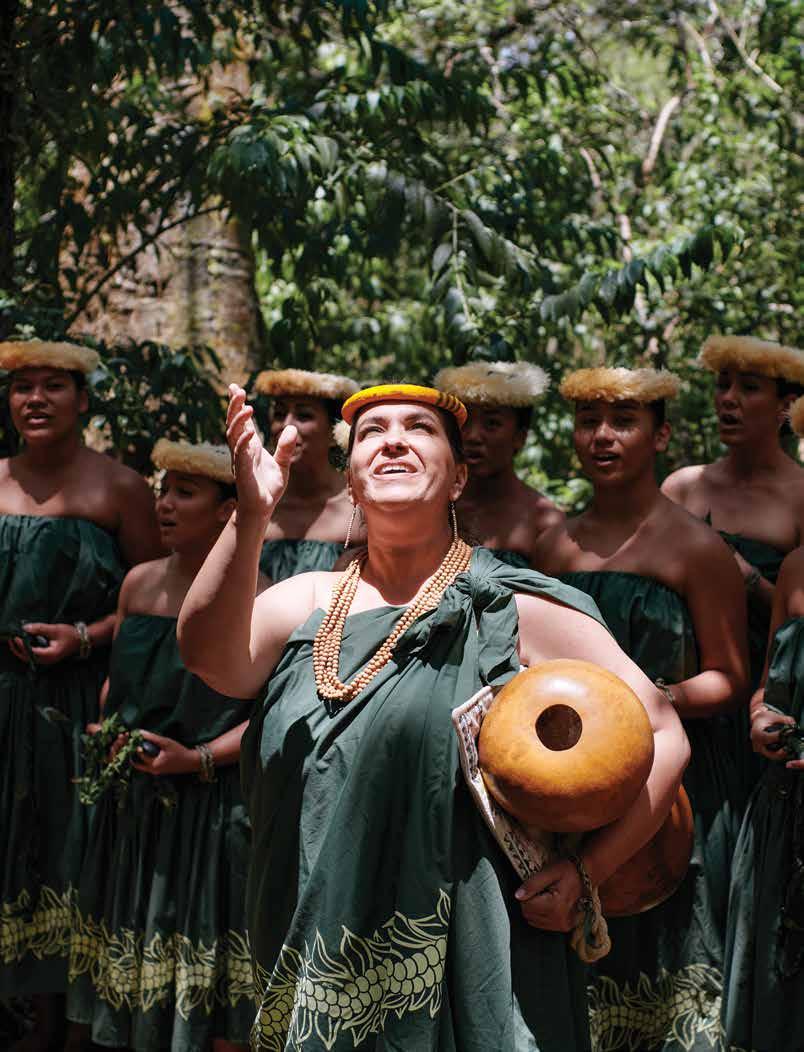


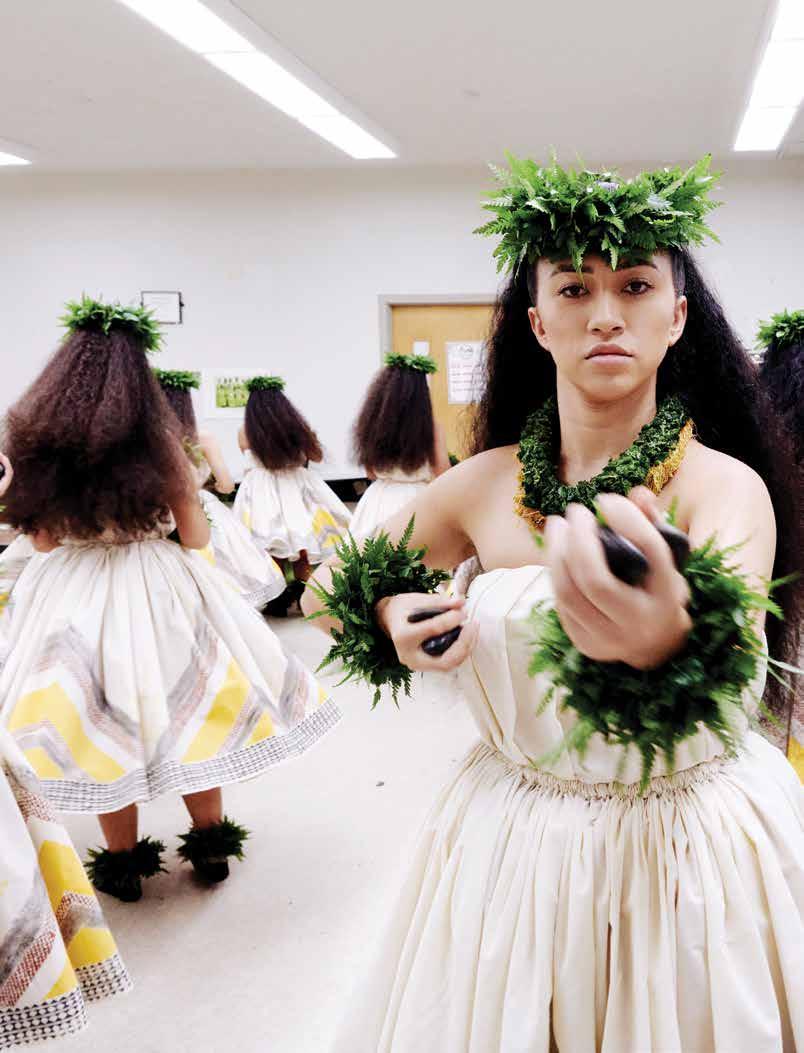
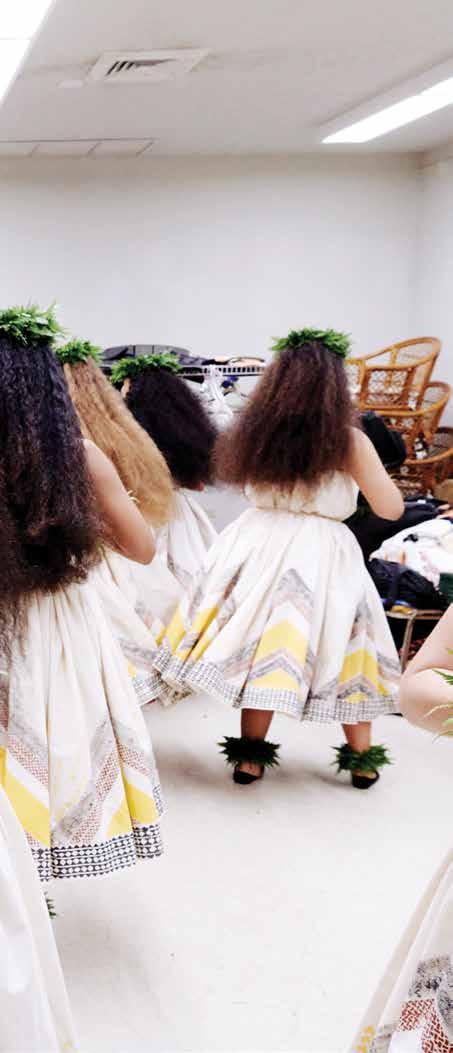
At Ke Ahu a Laka, Breeze recites the oli she composed, detailing the journey to trace her family roots. “‘O au Kalehua, he pua lei o Kaunuakalā Pua a Ka‘aneikawaha‘ale ā, Kui ‘ia e nā makani o Ni‘ihau.” (“I am Kalehua, the flower and child of Kaunuakalā at Lehua Island. Child of Ka‘aneikawaha‘ale. Strung together into a lei by the winds of Ni‘ihau.”)
This day of rituals starts mauka (in the mountains) and ends makai (at the sea) as the sun sets. The wāhine of Hālau ka Lei Mokihana o Leinā‘ala gather together at Salt Pond Beach Park for a hi‘uwai (water purification ceremony) in the clear, calm waters inside the reef. The dancers first chant their oli to the four directions, singing into the wind while beachgoers watch. Breeze’s toes dig into the brick-colored sand, tinged with red clay. This area is a wetland known for the only natural salt beds on Kaua‘i, a kapu area where generations of Hawaiian families farm salt using ancient techniques. When the oli is finished, the group walks hand in hand into the ocean. “I spent a lot of time here as a kid,” recalls Breeze. “I feel like I’m more connected to this place now through hula. This is our safe space. We submerge ourselves in the ocean, leaving behind everything we don’t want to take with us to Merrie Monarch.” When the group exits the water, they don’t look back.
The final stop before Merrie Monarch is Kalōpā State Recreation Area on Hawai‘i Island, where Kumu Jardin would go with her kumu hula, Rae Fonseca, and her hula sisters and brothers to gather foliage for hula events. Fonseca’s ashes were spread here, dropped from a helicopter, but fell straight down into an individual tree that the hālau now calls the “kumu tree.” Breeze gives one final presentation of her hula for Kumu Rae. When she
FACING PAGE / Pavao practices her hula kahiko one last time with the hālau in the cramped dressing room at Merrie Monarch.
FEATURES: THE PATH OF HULA 83

After their final ‘auana (modern hula) performance at Merrie Monarch, dancers return to their dressing room quiet and composed. Once the doors close, though, they erupt in celebration. Here, Kanahele and Ramos embrace a fellow hula sister. On the facing page, Pavao gets centered before her turn on the Miss Aloha Hula stage. Her rare, twenty-strand lei pūpū kahelelani (Ni‘ihau shell lei) was a gift from her uncle, Charlie Baker, who flew to Hilo to place the priceless heirloom on Pavao himself.
finishes, she falls to her knees and cries. “I was so uncertain of what was to come when I started this journey, but there, in that moment, I felt like I made it … and I felt like Kumu Rae was there guiding me the whole time,” says Breeze.
At Merrie Monarch the dancers are back at Ke Ahu a Laka in spirit. “I tell them to take everything in when we are at the heiau because those sounds are what I want them to hear at Merrie Monarch,” says Kumu Jardin. “You don’t see a crowd, you don’t hear a crowd, you don’t feel a crowd. Instead, you see a mist, you feel a breeze, you
smell laua‘e.” Breeze stepped off the stage that night and wondered, “Did I do OK? Did I make you proud?” Because she knew her performance came with a kuleana, a responsibility to share the story of her family and of Ni‘ihau so that the history of its people won’t be lost. The window for a dancer to compete for Miss Aloha Hula is brief: age 18 to 25 (group competition age restrictions are 13 to 55). After all her preparations, Breeze went on to place second last year (you can watch her performance on YouTube). “This is my life. And this is my daughter’s life,” says Kumu Jardin. “So while this chapter of
Miss Aloha Hula comes to a close, her journey of hula will continue until she leaves this realm. This is just a glimpse into her life of hula.” hh
84 FEATURES: THE PATH OF HULA
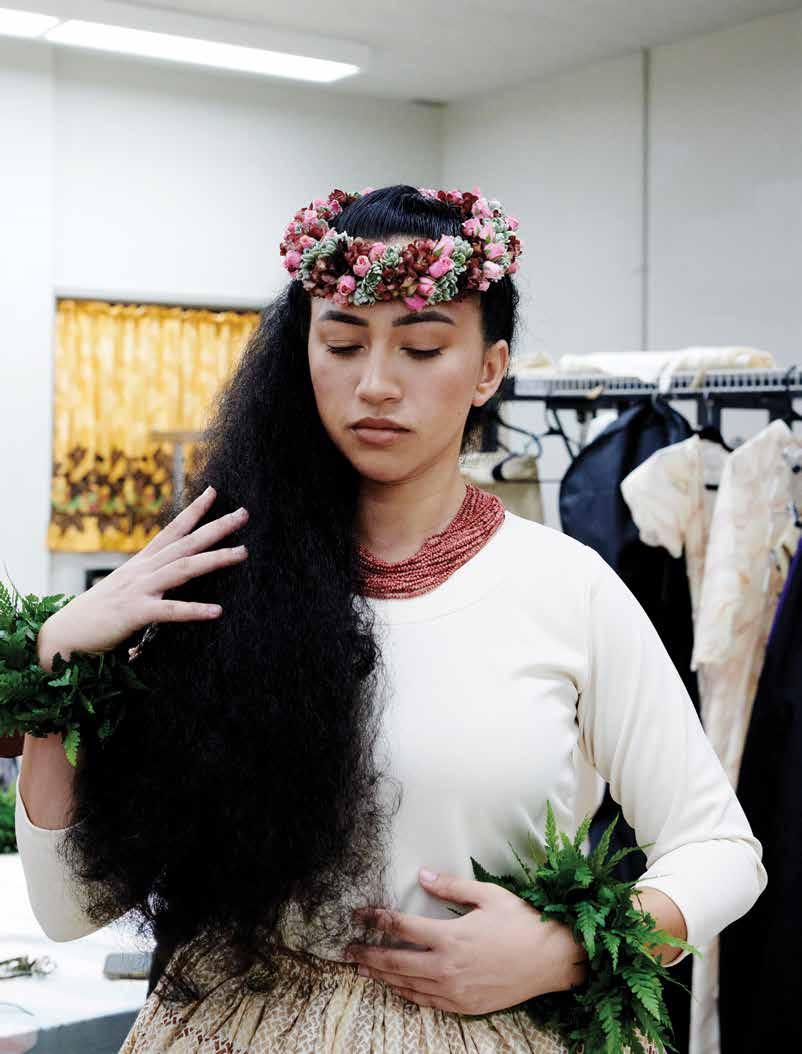
A Pearl of the South Seas
For Kamoka Pearl Farm, the world truly is an oyster
At first sight Kamoka Pearl Farm looks like a Disney World ride: too perfectly rustic and whimsical to be real. Josh Humbert, co-owner and second-generation pearl farmer, points my attention toward the main structure, perched above a calm sea and attached to the motu (island) of Kamoka by an arching, foot-wide dock made of wooden planks. The off-grid, much vaunted and rigorously eco-friendly harvester of Tahitian black pearls operates in an isolated corner of French Polynesia— an atoll called Ahe in the Tuamotu archipelago—one of the few mom-andpop pearl farms left in the region.
I’d been hearing about the farm among my various circles over the years, its name whispered by sailors crossing the Pacific, by intrepid divers and surfers, by scholars and vagabonds who’d had the pleasure of spending time here, earning their keep by helping Josh out on the farm, which is what I’d be doing over the next few days.
I reached Ahe by atoll-hopping on an Air Tahiti prop plane from Papeete. From above, the islands look like necklaces dropped from the heavens and strewn across the blue. Josh received me in the tiny airport, barefoot, wearing sun-faded boardshorts with a sole black pearl necklace—the only outfit I’d see him wear throughout my stay.
Upon arriving, we hop into Josh’s small boat, which at full throttle could cross the lagoon in about fifteen minutes, but Josh prefers to cruise at a
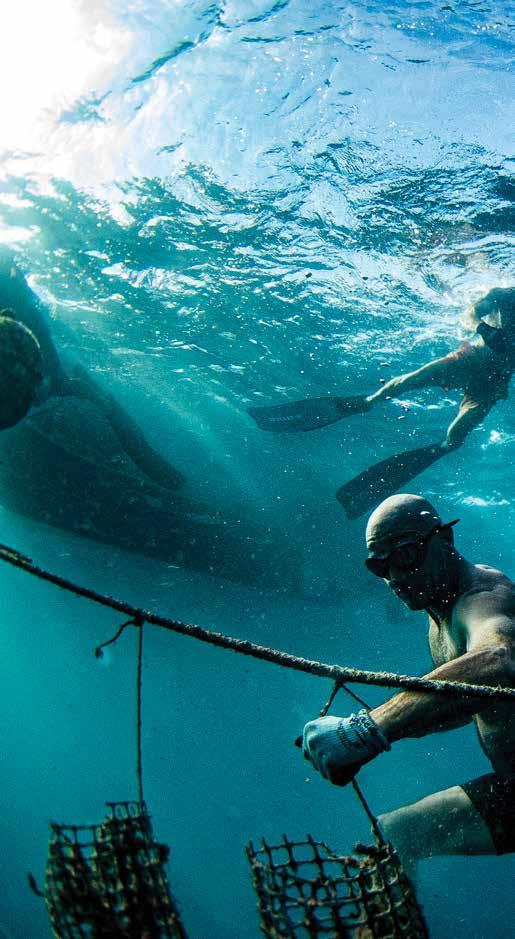
86 DEPARTMENT
BY BEAU FLEMISTER PHOTOGRAPHS BY DYLAN GORDON
STORY


“People who come to the farm for the first time are pretty mesmerized by the Waterworld nature of Ahe,” says Tevai Humbert of Kamoka Pearl Farm, located on the remote atoll of Ahe in French Polynesia (seen above). “Travel’s not by car but by boat, and the seemingly infinite variety of colorful fish make the underwater world a spectacular sight.” On the opening spread, Jeff Johnson (left), writer Beau Flemister (center) and Harrison Roach (right) freedive in Ahe’s lagoon to move baskets of the oysters.
leisurely pace to decrease his carbon footprint, he says. I’ll later come to learn that the health of the lagoon directly relates to the abundance of the harvest. As we moor to the dock and unload bags, I notice dozens of gray figures circling just beneath the surface. Blacktip reef sharks are everywhere.
Josh notices my alarm. “Ready to hop in?” he teases—or so I think. Patrick Humbert, Josh’s 81-year-old father and founder of Kamoka Pearl Farm, walks over and greets us in a thick French accent, listening to a podcast via earbuds hidden somewhere under his helmet of thick, tied-back, curly white hair. A few backpacker-ish Westerners are working at different stations. Two women scrape barnacles and other critters off oysters while two men load body-sized baskets of oysters onto Josh’s boat.
“No, really,” Josh says, tossing me a mask, snorkel, fins and a pair of gloves. “We’re getting in that water. The sharks are well fed, they won’t mess with us.” We
hop back on the boat and get to work. Josh explains that we’re transferring oysters in the baskets from deeper waters, where few fish feed, to shallower waters, where plentiful and hungry reef fish will clean the “biofouling”—algae, barnacles and other accretions—from the oysters’ shells.
“Can you swim this down and attach it to that line, please?” Josh says, tossing me a basketball-size buoy. I shrug a confident “Why not?” and attempt to manhandle the orb down with my body weight, feeling and probably looking a lot like a duck with its rear in the air.
Josh cracks a smile—he’s having some fun at the newbie’s expense—then hops in and shows me how to do it. With one hand he unties several baskets hanging on the line, hands a couple to me and signals me to swim them up. I kick desperately toward the light, my mask both fogging and leaking. When I burst to the surface, gasping for breath, a Tahitian man named Davy on the boat reaches out for the baskets with
a “You good?” look. Catching a breath, I dive back down to “assist” Josh. In my peripheral vision a large gray mass glides in the distant blue.
On our way back to the farm, Josh detours through the atoll’s only pass to the open ocean to catch dinner. He won’t fish near farming waters in the lagoon, he says, to keep the ecosystem healthy. Kamoka’s gone so far as to treat the entire lagoon like a marine sanctuary. He grabs a speargun, dives off the boat, and before I’ve even gotten my fins and mask on, he returns with a to‘au (snapper) and a paihere (trevally), which I’m pretty sure he shot on a single breath.
Back at the farm, Patrick prepares the catch along with some bread, olive oil and an appetizer of dried oyster.
A young family crossing the Pacific comes over from their boat anchored nearby with some wine and another fish to join the feast. An hour later I find an empty hammock with an unspeakably glorious view of the cosmos and fall
88 DEPARTMENT: A PEARL OF THE SOUTH SEAS

asleep to the sound of water lapping against the dock posts.
Tahitian black pearls don’t just grow from a grain of sand, as the popular myth goes—they’re cultured, which is what Josh and Davy are up to when I find them the following morning seated at small desks—grafting stations—carefully culturing oysters they’ve pried open and clamped in place. Beneath them, through the cracks in the plywood, the colorful reef shimmers through the water; sharks float by while cool trade winds blow through the windows behind them. Not a bad cubicle.
“Similar to a human skin graft, you’re basically taking cells from one part of the oyster and introducing them into the body of another oyster,” Josh explains, manipulating what looks like a dentist’s scalpel. “And if all goes well, those cells will secrete pearl.”
When a Tahitian black-lipped pearl oyster (Pinctada margaritifera) reaches three years old, it’s ready to be grafted. A six- to eight-millimeter nucleus of recycled oyster shell is inserted into the oysters, which are then returned to the ocean in baskets, protected from predators. During this time the nucleus is slowly encased in nacre (mother of pearl). A year later the oysters are pulled back out and the pearls ready to be harvested.
The two perform the minor surgery, simultaneously dropping high-quality pearls in one ceramic coffee cup and irregular, low-grade misfits in another, the ka-chink echoing through the small room every couple of minutes. Josh inserts a nucleus and gives the clamped oyster’s black lips a farewell kiss.
 A handful of the bounty at Kamoka Pearl Farm. Tahitian black pearls like these aren’t accidents of nature; they’re carefully cultivated through grafting and take a year to develop.
A handful of the bounty at Kamoka Pearl Farm. Tahitian black pearls like these aren’t accidents of nature; they’re carefully cultivated through grafting and take a year to develop.

“In order to have top-quality pearls, you have to care for your environment,” says
are far more fish in the area now than when we started thirty years ago because of how we
Kamoka Pearl Farm began with an adventure. Patrick, a wild Frenchman who’d moved to California, had a Gauguin-inspired dream to sail to French Polynesia. Innovative and amazingly handy, he built a ferrocementhull sailboat on his own and sailed with his wife and two sons across the Pacific to the Marquesas in 1973. Josh was barely two years old at the time; his brother, Loic, was a couple years older.
“My parents were adventurers,” says Josh. “They were just like, ‘Yeah, we could pull it off.’”
From the Marquesas they sailed south to Ahe, where Patrick and his wife fell in love with the Paumotu (people of Tuamotu) community, even learning Tahitian. Patrick saw how the monthly
supply boats had the remote population in a chokehold as far as buying and selling goods coming in from Tahiti, so he gutted the boat he built and turned the hull into a virtual walk-in freezer. This kept the locals’ fresh-caught fish frozen to sell directly in the markets of Papeete. He made a few runs to the capital before crashing the boat onto dry reef one night on a return trip. His boat was finished, but Patrick eyed a piece of land on one of Ahe’s motu—Kamoka— asking a family to sell it to him when they were ready.
There were a few small pearl farms operating through the ’80s on Ahe, among others across French Polynesia, so Patrick decided to try his hand in the trade in 1990. He built the farm, docks
and other structures largely on his own. Loic helped with the initial build while Josh was at a university in California studying marine biology. Patrick still needed help, and Josh jumped at the chance to move back and build the business. “I’d found my calling,” he says. “From my earliest days being a baby on that boat, I was always on the water. I don’t have the DNA to sit in a classroom surrounded by four walls, so when I saw the opportunity to study what I wanted to—and in the wild—it just made me feel so alive moving back. To this day I just love what I do.”
Josh learned grafting from two Japanese grafters who were staying on neighboring pearl farms. He’d take the men out fishing and diving—a welcome
90
Kamoka Pearl Farm co-owner Josh Humbert. “There
treat the environment around the pearls.” Above, Tahitian Davy Hanere meticulously grafts an oyster.
DEPARTMENT: A PEARL OF THE SOUTH SEAS

break from their work—and they’d divulge their secrets along the way.
The 1990s were the pearl industry’s heyday, and Kamoka began producing world-renowned, high-quality pearls with some particularly lucrative harvests. At one point the farm had eighteen employees. Fashion houses bought their pearls and celebrities wore them. But by the turn of the millennium, the market was flooded, and the price of pearls plummeted through the decade. By the early 2010s, Kamoka could no longer afford to pay employees and could barely keep the operation afloat.
Then, five years ago, some of Josh’s friends from Maui visited and experienced Kamoka’s magic. The couple helped the farm get back up and running, doing most of the tasks I’d witnessed some visitors doing now, while Josh and Davy seeded a new generation of oysters. Their next harvest was phenomenal, and then Josh’s son Tevai began posting videos on TikTok and YouTube. His vignettes of life on a pearl farm in paradise went viral, attracting hundreds of thousands of followers who wanted a look at what it was like to truly “work remote.” The videos also portrayed the ethical, sustainable ways Kamoka operates.
“We’ve been farming as sustainably as we can since the very beginning,”
 Josh Humbert (left) with his father, Patrick Humbert, co-owners of Kamoka Pearl Farm. The enterprising Patrick built the farm after sailing to the Tuamotu Islands on a vessel he constructed himself.
Josh Humbert (left) with his father, Patrick Humbert, co-owners of Kamoka Pearl Farm. The enterprising Patrick built the farm after sailing to the Tuamotu Islands on a vessel he constructed himself.
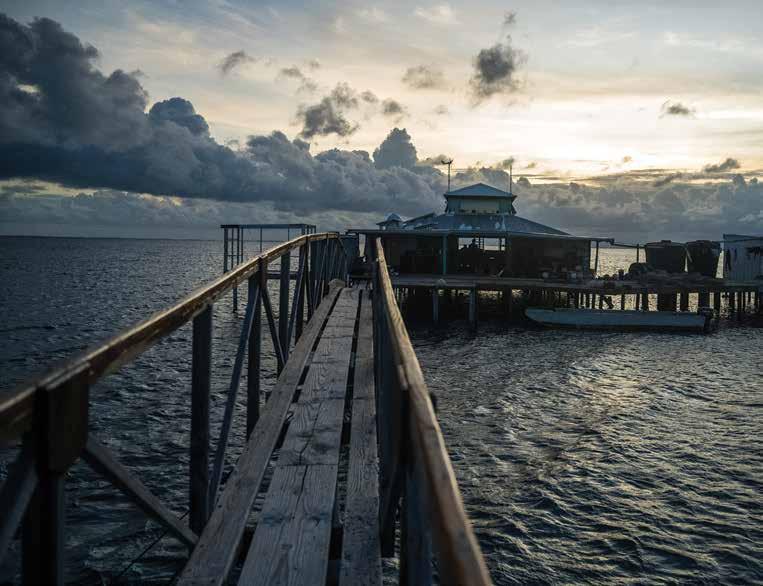
“We’re about as disconnected from the modern world as you can get, and our days and nights are dictated by wind patterns and the phases of the moon,” says Celeste Brash, Josh Humbert’s spouse. “I think that hits deep into the human soul. It’s not a thing lots of people have experienced, so when they come here and do, it feels like magic.”
says Celeste Brash, Josh’s wife. “People used to be confused as to why we were going through so much work to have fish clean our oysters, for example. But nowadays green is cool, and we’ve never had to ‘greenwash’ because we’ve cared about the environment more than anything ever since we began.”
Kamoka is not connected to a grid of any kind, save for some patchy Wi-Fi connectivity, and living sustainably is merely a fact of life. Solar generates their electricity, the septic system biodegrades waste, fresh water comes from catchment and most of the food comes from the sea, with greens grown in a garden on the motu. Josh, though
wary of using the “S-word,” takes pride in the way their farming techniques have increased the lagoon’s fish population, an outcome that scientists have studied and National Public Radio has covered. They’ve also forgone pressurewashing the oysters to clean them, an environmentally unfriendly practice used by many pearl farmers too lazy to move the oysters around the lagoon and let the fish do the cleaning. Josh persuaded others to stop the practice, unifying neighboring pearl farms in support of the cause. “Because of the diversity of the things that grow on the oysters, there’s food for all the different species of fish that live on the
reef,” explained Josh. “So, basically, all these different species are getting fed and getting stronger and reproducing more. It all just leads to a much healthier reef.”
“I began pearl farming because I guess I was a jack-of-all-trades, so it was appropriate for my skills,” says Patrick. “But I also just loved diving and being around the sea. After some years I realized that pearl farming is one of the few businesses that actually creates wealth for the lagoon. What I mean by that is, right here on this coral head where I built the farm, there is now over ten times the amount of marine life than when we started, from species of fish to
92
DEPARTMENT: A PEARL OF THE SOUTH SEAS






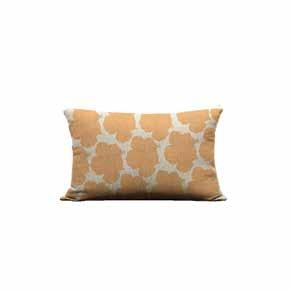




sharks to even lobsters now sharing this space with us.”
My few days on the farm have come and gone in what feels like a blink. The crew on Kamoka waves us adieu as we slowly motor back across the lagoon to Ahe’s tiny airport. I look back and see perhaps what Patrick first saw after so many days at sea, approaching from the Marquesas: a portrait of paradise. Some ineffable feeling of promise. A faraway place where one dares to grow a pearl. It would take only fifteen minutes to cross the lagoon if we gunned it, but now I know it’ll take closer to an hour— and why. hh






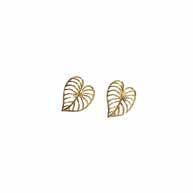




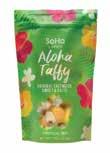
Bidding Up
You name it, Oahu Auctions has sold it
STORY BY MARTHA CHENG
One of the first official auctions Alicia and David Brandt conducted, in 2013, was for the former possessions of billionaire Genshiro Kawamoto, who’d bought up luxury properties in the exclusive Kāhala neighborhood, then got indicted for tax evasion and had to sell them off. The auction had the feel of a festival, complete with a food truck and portable toilets set up on a tennis court attached to one of the Kāhala Avenue mansions Kawamoto once owned. About a thousand gawkers, bidders and even then-mayor Kirk Caldwell attended the day-long auction, snapping up about six hundred items, including life-size stone lion statues, brass-cast tigers, Buddha figures, mermaid sculptures and Versace pillows—“high-end, assembly-

94
PHOTOGRAPHS BY LAURA LA MONACA DEPARTMENT

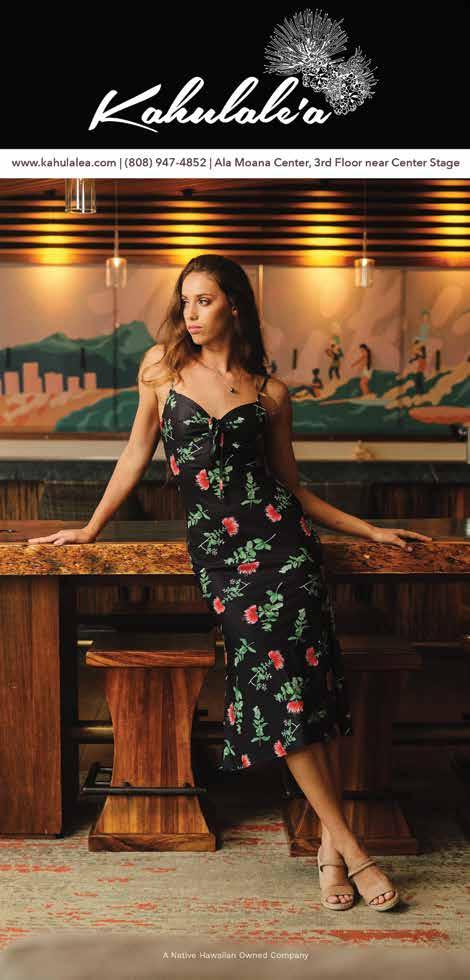

David Brandt enjoys the peripatetic nature of his work as the owner of Oahu Auctions, the largest auction house in Hawai‘i. Above, Brandt takes inventory of an exclusive O‘ahu club that closed in 2020 and turned to Oahu Auctions to sell its holdings. “It’s neat to come in here and put yourself in this world for a little while,” says Brandt, “and then when you get tired of it, you’re off to the next thing.” On the previous page, a buyer inspects items at a fundraiser auction for the Queen Emma Summer Palace on O‘ahu and Hulihe‘e Palace on Hawai‘i Island.
line kitsch,” said an art history professor at the time. The only two items no one wanted: a broken vase and a garage closet with nails and jumper cables.
The Brandts’ deal with the former belongings of some of Hawai‘i’s wealthiest—and most eccentric— individuals. Usually when they’re dead or in financial trouble. They’re also tasked with selling off the remains of Hawai‘i’s beloved institutions and landmarks, including Love’s Bakery, The Willows, Aloha Stadium. And in between all that are their auctions for forklifts and backhoes, jewelry from the Honolulu Police Department’s evidence room and HPD surplus holsters, a dog head costume from a closed pet store and live koi from St. Francis School. As the owners of Oahu Auctions, which has held about a thousand auctions since the Brandts started the business in 2008, it’s unlikely you will find anyone else selling such diverse lots.
“You name it, we’ve probably sold it, and I can talk about anything just enough to sound interesting,” David Brandt says. “You wanna talk medical equipment, you wanna talk heavy equipment, you want to talk farm equipment, you wanna talk wine? You want to talk vintage collectibles, Hawaiiana? I can hold my own in a bar.” The work, he says, suits his short attention span. “You have to figure out how to market so many different types of commodities. You have to learn who might be interested in surplus stadium seats. You have to have that curiosity to figure out what makes something desirable.” Some things are easy, like a forklift or tractor: “You can say, OK, I can see why somebody would want this, they’re gonna unload boxes in their warehouse, or they’re going to plow a field.” But the less practical items are difficult “because it’s not apparent why that would be valuable to somebody.”
Among the less practical: meteorites from the late attorney Gary Galiher, a life-size NFL referee sculpture and fifteen-foot shark and whale sculptures from the closure of Jimmy Buffet’s restaurant in 2016. The strangest thing he’s ever sold? A bullet reportedly extracted from the body of a royalist who fought against the overthrow of the Hawaiian Kingdom more than a century ago, complete with a doctor’s note of the bullet’s provenance. It sold for a little over $500 to a collector on Maui.
Deep in the bowels of Ala Moana Center, Brandt and I are in the wine cellar of an exclusive, erstwhile “private society” club. Brandt and his staff have cataloged more than 1,500 bottles of wine, including a 1969 Château Margaux, for an online auction. When I visited the club’s restaurant prior to its opening ten years ago, its Japanese developer, Takeshi Sekiguchi,
96 DEPARTMENT: BIDDING UP

“I’ve always been interested in the used market,” Brandt says, ever since he was a child and bought an almost-new fishing reel for a third the price of a new one at a garage sale.
told me, “It doesn’t matter how much it costs—if it’s $10 million or $100 million. This restaurant is to be the best in the world.” When it opened, the space—a dark cavern lined with custom-made imported bricks—felt like a tomb. It feels even more so now; since closing in 2020 it’s been virtually sealed off during litigation between Ala Moana Center and Shirokiya, which owned the club. The bar is still stocked with opened liquor bottles, while half-empty bottles of wine remain in the dispenser as if waiting to be poured for guests that evening. “When these situations happen, it’s kind of fast,” Brandt says. “It’s what we’re used to when people close down a business. They just leave everything.” Brandt is reluctant to talk in detail about this auction because of its messy court battle. But it’s not surprising: Death and endings are messy, especially when money’s involved.
For the next round of the club auction—which Brandt has carefully avoided naming in the listing, referring to it as an “exclusive Ala Moana Center dining venue”—Brandt’s staff has pulled out all the serveware and are photographing the pieces individually,


from custom ceramics to Tiffany’s teapots. Next will be all the kitchen equipment, including a PolyScience Anti-Griddle Flash Freezer, which was all the rage about a decade ago for the way it worked like a stove, but one that froze rather than heated. It’s being photographed from all four sides, to be accompanied by the description “Needs repair. Does not power on. Power switch appears broken. Other unknown deficiencies may exist.” It’s strange to see a fantasy being disassembled so dispassionately and sold for parts.
Brandt often gets to know people and businesses through what they leave behind. I ask whether he ever gets sentimental selling off their items. He says it’s sad to see St. Francis School, a Catholic private school in Mānoa founded in 1924, and Hawai‘i’s iconic Love’s Bakery founded in 1851, gone. But where I see endings, he sees beginnings. St. Francis’ bus went to
Saint Louis School, Brandt says, and its sporting equipment to other, smaller private schools. “And when you see people come and pick up this equipment, stainless tables or refrigeration or slicers, see them getting a new beginning, it’s a great feeling to sell to a mom-and-pop startup,” he says. “It’s kind of funny—I was walking by Whole Foods in Kāhala, and they had this thing on the window of all these local businesses they supported. And every single one of those people I knew from buying stuff from us at auctions: a coffee company, a juice company, an ice cream company, farmers. It’s the ultimate reutilization and recycling.”
Brandt, who in 2017 auctioned off the jewelry of the late Princess Regina Kawananakoa, a descendant of Hawaiian royalty, once used to dig through the blue bins of a Goodwill surplus store in Kalihi looking for items
to sell on eBay. “They would have these trucks loaded with big plastic bins full of electronics or collectibles or clothes or cameras. They would slide these bins off of the truck, and we were just like animals, pawing through these bins,” Brandt remembers. “There would be this group of swap meet sellers, and we developed this hui [group]. There was Debbie, who would buy only sheets. There was Ken, who would repair only VCRs. A guy who would do Hawaiiana. That’s how I started.”
He’s long had an entrepreneurial streak. When he was 22, he left his life in the Catalina Islands, crewing a rescue boat for the county sheriff’s search and rescue team, to partner in an offroading vehicle rental company on Lāna‘i, just as the island’s economy was transitioning from pineapples to tourism. But the roads were so rugged that the company’s Land Rovers were constantly breaking down, requiring the vehicles to be shipped to O‘ahu to be repaired. The business lasted two years. He and his wife, Alicia, whom he met on Lāna‘i, moved to O‘ahu.
In the late ’90s he’d sift through the wares at the Kam Swap Meet, “buying old cameras and anything that people here weren’t interested in. I would drive home and put stuff on eBay and sometimes make $3,000 to $5,000 a day for a couple hours’ worth of work.” Back before we had the internet in our pocket, he relied on instinct to determine what was worth buying. “I started going from five to ten items a week to one hundred items a week and then a hundred items a day.” He bought a house and turned its attached 1,800-square-foot cottage into an office and warehouse for his growing eBay business.
He started buying items at auctions and reselling them—“a lot of people specialize in only one thing, but for me, I didn’t care what it was,” as long as he thought he could sell it for three times what he paid—and heard from bankruptcy attorneys and trustees about a demand for auction services. He got his auction license and launched Oahu Auctions. The Jimmy Buffet’s auction in 2016 was the last in-person one the Brandts held—they moved the bidding online, where collusion among bidders is less likely, and are less susceptible to events keeping people from reaching
98
Oahu Auctions sells anything and everything: state vehicles, pieces of Aloha Stadium, flour sacks from Love’s Bakery and jewelry from Queen Emma’s Summer Palace (seen above).
DEPARTMENT: BIDDING UP
the auctions, like tsunami warnings or parades in Waikīkī or pandemics.
Today, Oahu Auctions has a 5,400-square-foot warehouse at Dole Cannery and a commercial yard at Barbers Point for vehicles and large equipment. Not specializing is still Brandt’s specialty. In the week that we talk, in addition to handling Vintage Cave, Brandt is also preparing to auction tools from a welding company, equipment from an underwater robotics competition sponsored by the US Navy and koa wood furniture for a Queen Emma Palace fundraiser. Oahu Auctions has managed items from Four Seasons Lāna‘i as it switched out its décor, the Old Spaghetti Factory when it moved, a dental lab, a laser eye center, a Waikīkī nightclub and a fertility clinic. And it has auctioned the same items more than once, including a red 1950 “Hilo sampan” bus (an open-air jeepney once used as public transport in Hilo), sold twice over after its successive owners died; and a Toyota forklift, which sold at auction during the pandemic for twice the price its previous owner paid, also at auction, five years earlier. “That’s what keeps this interesting,” Brandt says. “That you really never know what things are gonna go for.”
A woman who purchased fortynine bottles of wine at the Vintage Cave auction arrives at Oahu Auctions’ office at Dole Cannery later in the week to collect another item she won in a different auction—the “Everything Goes” auction—a handbag made out of a metal Hawai‘i license plate rolled into a cylinder. The first thing she ever bought through Oahu Auctions was a pair of purple earrings with diamonds from a 2022 HPD evidence room auction, selling off things that the police confiscated (lots of bolt cutters and other tools of the criminal trades) or that have gone unclaimed from their lost-and-found. Since then she’s bid in thirty-eight auctions, winning in twentyfour, and prefers to remain anonymous because her husband doesn’t know about it. “It’s my money, it’s not his money,” she says. “He’d say, ‘What do you need all this kind of stuff for? It’s junk.’ It’s not junk!”
The Brandts’ auctions can veer from the outlandish to utilitarian, and



in the case of the Everything Goes one, all in a single catalog. Among the 249 items: surplus HPD holsters (bundled in boxes of at least fifty-five), stuffed manta rays (box of ten), Honolulu City and County brass dog tags (two boxes of about two thousand pieces each), one size-small Port Authority shirt packaged in a Love’s Bakery Country Hearth plastic bread bag, one dog head mask, one dental X-ray machine, one brand-new band saw. “It’s just leftovers from different auctions,” Brandt says, “or sometimes we have a large quantity of something that we miscount, or sometimes people will bring us stuff and say, ‘I’ve got three or four boxes of this. Just put it in an auction when you can.’ Or sometimes the lots people win are so large that they’ll leave some of it behind.” Rather than throw it away, Brandt offers up this mixed-bag auction
about every six months. Everything does indeed go.
It’s amazing what sells. Aside from business owners acquiring practical items like speed racks and ovens and tractors, there are also the entrepreneurial people who buy old photographs from Aloha Stadium to market at their sports memorabilia store, those who buy boxes of lost-andfound clothes to vend at the swap meet, sellers who hope to resell all those HPD holsters. And there are the buyers of nostalgia. Guy Matsunaga says the best thing he ever bought from Oahu Auctions, which has included dinner plates from Alan Wong’s restaurant and an elliptical from the Honolulu Club (both of which closed during the pandemic), is the big hand with the finger pointing to the bathroom at the erstwhile Ward Warehouse mall. He
has it mounted on his living room wall. “I spent a ridiculous amount on it,” he says. “But it was Ward Warehouse! I wanted it for the history.” Both a piece of Hawai‘i history from a building now replaced by a luxury high-rise condo and of personal history—he got one of his dogs at the pet shop beneath Kincaid’s. In the anonymous world of the internet, Matsunaga has come to trust Oahu Auctions, with its listings accompanied by multiple detailed, almost clinical photos and disclosures. Contrast that with his dealings with another seller who “lied on the website” about a car, and Matsunaga, a lawyer, sued him.
Chloe Hartwell peruses Oahu Auctions’ listings occasionally and has purchased a Hawaiian quilt, antique Japanese beer mugs and a set of juice glasses. “I love exploring estates,” she
100
The Honolulu Police Department’s evidence room auction is one of Oahu Auctions’ most popular events, where you can bid on everything from bikes to bolt cutters (natch). Above, an assortment of items at Oahu Auctions’ warehouse in Dole Cannery.
DEPARTMENT: BIDDING UP
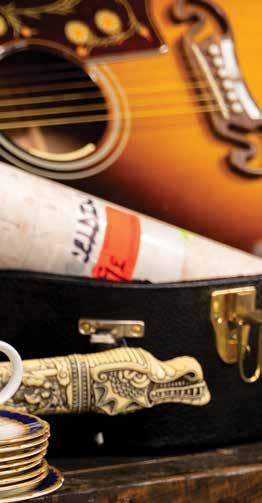

says. “It always feels a bit voyeuristic to see a person’s belongings photographed in bright light and lined up on a website, but it’s fascinating to see the things people choose over a lifetime.”
She first heard about Oahu Auctions through the Love’s Bakery auction. “Everyone had been so shocked about them closing,” she remembers. “It’s not practical to be nostalgic about everything, but we lost so many institutions during the pandemic that it felt like there was a collective desire to want to save or keep something tangible.” I find the same feeling surfacing as I scroll through pages and pages of Oahu Auctions’ past sales, as if looking into Hawai‘i’s collective attic to see what’s been left behind, what has outlasted a business or person, what’s no longer of use in one life but will be, perhaps, in another. hh


BY ISLAND : O‘AHU WAIKĪKĪ—O‘AHU 102
ISLAND
PHOTOGRAPH BY KAMMERAN KEOLA


FEBRUARY
JAZZ IN THE GALLERY
Third Thursdays
A monthly dinner concert series featuring jazz artists, fine dining, fine wine and spirits. Reservations recommended. 6 to 9 p.m. Formaggio Grill, (808) 254-8888
BISHOP MUSEUM
AFTER
HOURS
Second Fridays
Museum exhibits are open for viewing from 5:30 to 9 p.m., along with cultural demonstrations, keiki activities and a night market with food trucks and local vendors. Bishop Museum, (808) 847-3511
H o MA NIGHTS
Every Friday and Saturday Honolulu Museum of Art remains open until 9 p.m. with opportunities to explore the galleries, stargaze in the courtyards and enjoy live art experiences and music. Honolulu Museum of Art, (808) 532-8700
MADE WITH ALOHA GIFT FAIR
Every Third Saturday and Sunday Support dozens of small local businesses selling their handcrafted jewelry, baked goods, unique apparel, charms and more. 10 a.m. to 5 p.m. Free. Pearlridge Center, (808) 689-9091
PROJECT BANABA
Through 2/18
The Project Banaba exhibition by Katerina Teaiwa commemorates the history of Banaba Island in the Pacific Ocean, which was destroyed by phosphate mining during the twentieth century. Bishop Museum, (808) 847-3511
AITU FAFINE
Through 2/25
Writer Robert Louis Stevenson and his family become infatuated with two fascinating ‘afakasi visitors who come to stay at their home in Vailima, Sāmoa. Written by Victoria Nalani Kneubuhl. Kumu Kahua Theatre, (808) 536-4441
DAVID HOCKNEY:
PERSPECTIVE SHOULD BE REVERSED, PRINTS FROM THE COLLECTIONS OF JORDAN D. SCHNITZER AND HIS FAMILY FOUNDATION
Through 3/10
More than 100 colorful prints, collages, photographs and iPad drawings in a variety of media spanning six decades of the influential artist’s career. Honolulu Museum of Art, (808) 532-8700
PLAYING WITH LIGHT
Through 3/24
This exhibit offers full-body interactive displays that invite visitors to immerse themselves in the technology and wonders of light. Bishop Museum, (808) 847-3511
104 EVENTS: O‘AHU
David Hockney: Perspective Should Be Reversed, Prints from the Collections of Jordan D. Schnitzer and his Family Foundation

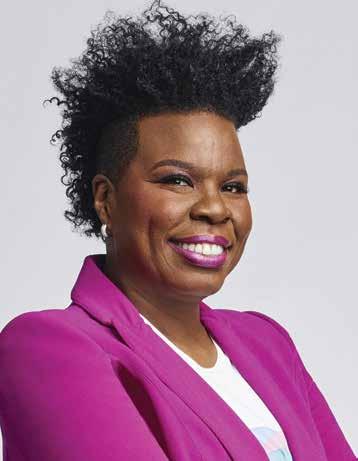

PUNAHOU CARNIVAL
2/2&3
Punahou School’s annual fundraiser features Island-style carnival food, games and rides, white elephant treasures and live music. Punahou School, (808) 944-5751
JOHN CRUZ HE MANA‘O EP RELEASE CELEBRATION
2/2&3
Multiple Nā Hōkū Hanohano Award-winner John Cruz performs in celebration of his newest EP “He Mana‘o.” Blue Note Hawaii, (808) 777-4890
HAWAII CANNABIS EXPO
2/2–4
Industry leaders gather to educate, network and dialog about the health and economic benefits of legal, medical cannabis and industrial hemp. Also featured are a vendor marketplace, food court and live entertainment. Blaisdell Exhibition Hall, (808) 223-6040
THE ABYSSINIANS
2/4
Jamaican reggae trio The Abyssinians perform as part of a Bob Marley birthday celebration. The Republik, (808) 941-7469
JAKE SHIMABUKURO & MAC MCANALLY
2/5&6
‘ Ukulele master Jake Shimabukuro and songwriter, singer and instrumentalist, Mac McAnally perform Celebrating Songs & Stories on Distant Shores , a concert in honor of their late friend and mentor Jimmy Buffett. Blue Note Hawaii, (808) 777-4890
TAN DUN’S CROUCHING TIGER: YEAR OF THE DRAGON
2/11
Hawai‘i Symphony Orchestra performs Mahler’s Das Lied von der Erde, paired with Tan Dun’s cello concerto from Crouching Tiger, Hidden Dragon. Hawaii Theatre Center, (808) 528-0506
LESLIE JONES: LIVE
2/23
Emmy-nominated actress, comedian, writer and former Saturday Night Live cast member Leslie Jones performs live. Hawaii Theatre Center, (808) 528-0506
HIROMI’S SONICWONDERLAND
2/23–25
Renowned pianist Hiromi performs works from her newest album Sonicwonderland with bassist Hadrien Feraud, drummer Gene Coye and trumpet player Adam O’Farrill. Blue Note Hawaii, (808) 777-4890
THE KING’S DREAM
2/25
A performance about Elias Abraham Rosenberg, an Eastern European Jewish refugee, and his relationship with King Kalākaua. Judiciary History Center at Ali‘iōlani Hale, (808) 539-4999
106 EVENTS: O‘AHU
Leslie Jones: Live Punahou Carnival

JONATHAN BUTLER
2/29 & 3/1
Grammy-nominated South African singer-songwriter and guitarist Jonathan Butler performs. Blue Note Hawaii, (808) 777-4890
H o MA FAMILY SUNDAY
2/18
HoMA offers creative activities for keiki of all ages, community-focused programming and entertainment.
Free museum admission for local residents. 10 a.m. to 6 p.m. Honolulu Museum of Art, (808) 532-8700




MARCH
NICKELBACK: GET ROLLIN’ TOUR
3/1
Canadian rock band Nickelback performs with special guest Tavana. Blaisdell Arena, (808) 768-5252
LEI COURT SELECTION
3/2
This annual competition determines this year’s Lei Court, which presides over the city’s annual Lei Day celebration on May 1. Contestants compete in lei making, hula ‘auana (modern hula), English- and Hawaiian-language skills, poise and personality. Free. 9 a.m. to 4 p.m. Kapolei Hale, (808) 768-3020
BLACK UHURU
3/2&3
Jamaican reggae group Black Uhuru led by Derrick “Duckie” Simpson performs. Blue Note Hawaii, (808) 777-4890
HONOLULU FESTIVAL
3/8–10
An annual festival celebrating cultures from across the Pacific through art, music, dance and crafts, with a lively parade through Waikīkī. Hawaii Convention Center and other locations, honolulufestival.com
JANET JACKSON: TOGETHER AGAIN
3/8&9
Pop icon Janet Jackson performs more than thirty-five of her greatest hits. Blaisdell Arena, (808) 768-5252
MORGAN WADE
3/9
American country music singer Morgan Wade performs. The Republik, (808) 941-7469
HAPASYMPHONY FEATURING PAULA FUGA
3/9
Acclaimed for her originality in song composition and spellbinding, soulful vocals, Paula Fuga is one of Hawai‘i’s top female musicians in generations. Hawaii Theatre Center, (808) 528-0506
108 EVENTS: O‘AHU
Hapasymphony Featuring Paula Fuga
Honolulu Festival
photo by elyse butler

DANE DIRECTS
DON GIOVANNI
3/10
Hawai‘i Symphony Orchestra’s Music Director Dane Lam shares his love of opera with a guided tour of Mozart’s seminal opera, Don Giovanni, interspersed with Britten’s breathtaking Four Sea Interlude s from Peter Grimes. Hawaii Theatre Center, (808) 528-0506
SVDDEN DEATH
3/15&16
Los Angeles-Based DJ and producer SVDDEN DEATH performs. The Republik, (808) 941-7469



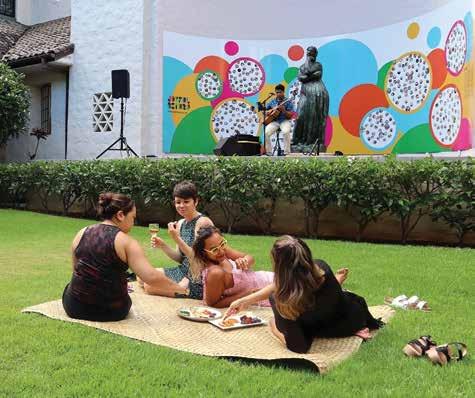
H o MA FAMILY SUNDAY
3/17
HoMA offers creative activities for keiki of all ages, community-focused programming, and entertainment. Free museum admission for local residents. 10 a.m. to 6 p.m. Honolulu Museum of Art, (808) 532-8700
THE EXPENDABLES
3/22
American reggae rock band The Expendables performs. The Republik, (808) 941-7469
BERETANIA SNAPSHOTS
3/28–4/28
Beretania Snapshots is full of nostalgic references to plays and people from Honolulu’s recent past, and reminds us to treasure one another before the memories fade. Written by Sean-Joseph Choo. Kumu Kahua Theatre, (808) 536-4441

EVENTS : O‘AHU
HoMA Family Sunday

AESTHETIC HAWAII GALLERY KAILUA
602 Kailua Road, Kailua
From the founders of Genesis Gallery in Waikoloa for 30 years to the next generation, Aesthetic Hawaii in Kailua, O‘ahu is one of the state's largest galleries, representing more than forty artists from the Islands and beyond. Aesthetic Hawaii features paintings, glass, wood sculpture and jewelry by artists including Heather Brown, NEILL, Tabora, Coleman, Garcia, Palm and more. Aesthetic Hawaii is locally owned and operated.

(808) 990-3248
AestheticHawaii.com
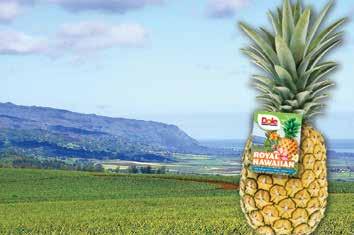

BATTLESHIP MISSOURI MEMORIAL
Complete your Pearl Harbor experience. The USS Missouri is no ordinary ship—it is America’s most historic battleship. Home to 2,700 sailors, nine 66-foot-long guns, 1,220 projectiles and a deck big enough to host a surrender ceremony presided over by General Douglas MacArthur. Ask about the new Captain’s Tour and Chief Engineer’s Tour. Shuttle service from the Pearl Harbor National Memorial visitors center included with admission.

Bring home a bite of paradise! The exotic pineapple has been associated with Hawai‘i & the DOLE® brand for over 100 years. The fertile, volcanic soils of O ’ahu are kissed with Hawaiian sunshine, warm tropical rain and gentle tradewinds, creating the sweeter, juicier DOLE® Royal Hawaiian® Pineapple.

(808) 847-3234
dolefruithawaii.com
(808) 455-1600
ussmissouri.org

FARMLOVERS FARMERS MARKET
Kaka‘ako, Pearlridge Center, Kailua Town, Hale‘iwa
Immerse yourself in local food culture at any one of our Farmers Markets. Taste the true Hawai‘i. Experience our local farmers, culinary masters and artisans, locally-grown produce and tropical fruits and vegetables. Come hungry! Leave happy. Our chefs cook healthy, Island-style grindz. Need a gift? Our local artisans have you covered. Kaka‘ako (Sat), Pearlridge (Sat), Kailua Town (Sun), Hale‘iwa (Thurs).

(808) 388-9696
farmloversmarkets.com
Arizona Memorial Place, Honolulu
DOLE
O‘ahu


@julesandgemhi
Turn any space into an escape. With Jules & Gem Hawai‘i products, our goal is to bring you back to happy memories of Hawai‘i and bring paradise to wherever you are. We pride ourselves on being locally handmade, right on O‘ahu. Shop our products at multiple resorts and retailers on O‘ahu, Kaua‘i, Maui and Hawai‘i Island—or get them shipped straight to your door by shopping online!
(808) 772-4060 julesandgemhawaii.com
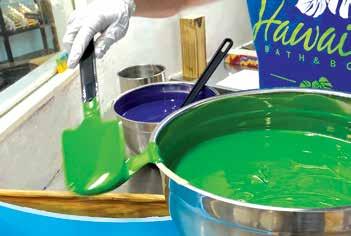
NORTH SHORE SOAP FACTORY
67-106 Kealohanui Street, Waialua
Watch our master soap maker when you visit North Shore Soap Factory! Come for the soap, stay for the stamping. Customize your bar at our stamping station. Book a Behind-the-Scenes Tour* to see how we handcraft Hawaiian Bath & Body® soaps and skin care products. Local art, gifts and more. Find us in the big, coneshaped building!

LIVING OCEAN TOURS
1125 Ala Moana Blvd Slip B-01, Honolulu
Get ready for a day of sun, sea, and unforgettable memories with Living Ocean Tours on one of our custom built luxury snorkel boats in Waikiki! Snorkel the crystal waters of Oahu with our Hawaiian Green Sea Turtles, take a thrilling slide down our two-story waterslide, bounce on a water trampoline or cruise into the sunset while looking for whales.

637-8400
(808) 436-3483 www.livingoceantours.com

PENNY’S WAIKIKI - MALASADAS
Royal Hawaiian Center, Honolulu
Fresh, hot and made-to-order … the best malasadas in Waikiki! Located on the second floor of the Royal Hawaiian Center food court, enjoy pillowy, sugary, delicious malasadas with various sugar dustings or crème filled flavors like coconut, ube, nutella or original custard. Get your malasada fix daily from 6a – 9p!

(808) 744-0422
pennyswaikiki.com
ISLAND BY ISLAND : O‘AHU
northshoresoapfactory.com (808)
North Shore Soap Factory


RAINBOW DRIVE-IN
Kapahulu, Kalihi, Pearlridge, ’Ewa
Family owned since 1961, Rainbow Drive-In is known for their generous portions of simple, hearty Hawai‘i comfort food. Stop by one of four locations for the best Loco Moco or a delicious plate lunch. After enjoying a famous Slush Float for dessert, leave with one of our exclusive logo-emblazoned merch items from the Rainbow Tiki shop.

(808) 737-0177
rainbowdrivein.com

WAIMEA VALLEY
59-864 Kamehameha Highway, Hale‘iwa
Waimea Valley is a wahi pana (storied place) deeply rooted in Hawaiian culture. Today Waimea is home to six cultural sites and 5,000 unique plants from all over the world. Allow the wonders of Waimea to speak to you as you walk through this place of healing. Experience the tranquility and the sites that hark back to a bygone era in Hawai‘i’s history.

(808) 638-7766
waimeavalley.net
VEIN AT KAKA’AKO
685 Auahi St Building 2 Suite 121, Honolulu
Laidback yet refined, vein at KAKA‘AKO features a modern Mediterranean with Japanese influence created by Executive Chef Dell Valadez. The dishes, such as the Lamb “Scottadito” with Pickled Plum Tapenade and Pistachio pasta topped with Prosciutto di Parma, are intriguing in descriptions and enticing in flavor, making vein the ideal locale for a unique and exceptional dining experience.

(808) 376-4800
veinatkakaako.com

WIND HORSE SANCTUARY
Tara Coyote is a Kaua‘i based author whose bestselling books revolve around the healing power of horses, overcoming great odds while thriving with stage 4 cancer, embracing joy and ocean conservation. With deep family roots based in Kaua‘i, she weaves in the powerful mana of the Hawaiian Islands in her books. Check out her memoir & three children’s books!

EAT / SHOP / PLAY : O‘AHU PROMOTIONAL
taracoyote.com

114 ISLAND BY ISLAND : MAUI / MOLOKA‘I / LĀNA‘I
HALEAKALĀ–MAUI
PHOTOGRAPH BY ELYSE BUTLER





FEBRUARY
WILDLIFE WEDNESDAYS
Wednesdays
Join naturalists from the Hawai‘i Wildlife Discovery Center and learn about humpback whales, monk seals and more Maui wildlife. 10 a.m. to noon. Whalers Village, (808) 661-4567
JOHN CRUZ
“ISLAND STYLE” SERIES
First and Third Wednesdays
Nā Hōkū Hanohano Award-winning singer-songwriter John Cruz has built his career telling stories through songs about everyday people and experiences. His ongoing Island Style series celebrates the ties that bind. 7 p.m. ProArts Playhouse Azeka Plaza-Makai, Kīhei, (808) 214-3150
HĀNA FARMERS MARKET
Fridays
Locally grown produce and products from East Maui. Free. 65-and-over shopping starts at 2:30, general admission from 3 to 5 p.m. Hāna Town Center, (808) 378-0084
KAMA‘ĀINA NIGHTS
Third Fridays
A free monthly concert highlighting Hawai‘i’s homegrown talent. Queen Ka‘ahumanu Center, (808) 877-3369
UPCOUNTRY
FARMERS MARKET
Saturdays
Locally grown produce, fish, prepared food and products. Free. 7 to 11 a.m. Kulamalu Town Center, (808) 572-8122
QKC KEIKI CLUB
Third Saturdays
Monthly keiki activities focused on Hawaiian language and culture with Luana Kawa‘a of Morning Mana‘o at the QKC keiki play area. Enter to win giveaways and enjoy family-friendly festivities. 10 to 11 a.m. Queen Ka‘ahumanu Center, (808) 877-3369
MAUI SUNDAY MARKET
Sundays
An evening marketplace with local food and product vendors and live entertainment. Free. 4 to 8 p.m. Kahului Shopping Center, (888) 948-6382
MAUI IMPROV MONTHLY SHOWCASE
Last Sundays
Beginner and experienced performers improvise live theater on stage. 6:30 p.m. ProArts Playhouse, (808) 214-3150
DADDY LONG LEGS
Through 2/4
Set in turn-of-the-century New England, the musical tells the story of orphan Jerusha Abbott of the John Grier Home and her mysterious benefactor who agrees to send her to college. ProArts Playhouse Azeka Plaza-Makai, Kīhei, proartsmaui.org
EVENTS: MAUI / MOLOKA‘I / LĀNA‘I
116
Jake Shimabukuro & Mac McAnally
photo by tommy shih
2024 HUI NO‘EAU ANNUAL JURIED EXHIBITION
Through 2/16
Hui No‘eau Visual Arts Center presents its Annual Juried Exhibition, sharing ceramics, printmaking, sculpture, photography, painting, drawing, jewelry, digital media, fiber, wood and mixed media. Hui No‘eau Visual Arts Center, (808) 572-6560
JAKE SHIMABUKURO & MAC MCANALLY
2/8
‘Ukulele master Jake Shimabukuro and songwriter, singer, and instrumentalist, Mac McAnally perform Celebrating Songs & Stories on Distant Shores, a concert in honor of their late friend and mentor Jimmy Buffett. Maui Arts & Cultural Center (MACC), (808) 242-7469
GOLF TOURNAMENT FUNDRAISER
2/10
A charitable golf tournament to benefit Lāna‘i Culture & Heritage Center. Mānele Golf Course, (808) 565-7177
MAUI ARTISTS STUDIOS TOUR 2024
2/17&18
A self-guided tour of Maui art studios for collectors and art enthusiasts with opportunities to “talk story” and purchase art directly from artists. 11 a.m. to 6 p.m. each day. Free. Various locations, mauiartiststudiostour.com
BROADWAY POPS 2024
2/18
Maui Pops Orchestra’s annual Broadway Pops concert features vocalists Morgan James & LaKisha Jones in a program of music from Broadway and Hollywood, plus powerful pop favorites. MACC, (808) 242-7469
LESLIE JONES: LIVE
2/22
Emmy-nominated actress, comedian, writer and former Saturday Night Live cast member Leslie Jones performs live. MACC, (808) 242-7469


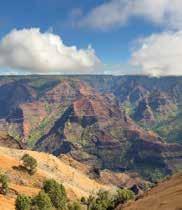

www.PolyAd.com | 1-877-930-1740 Sightseeing Experiences | Custom Groups | Charter Services Your Adventure, Our Aloha
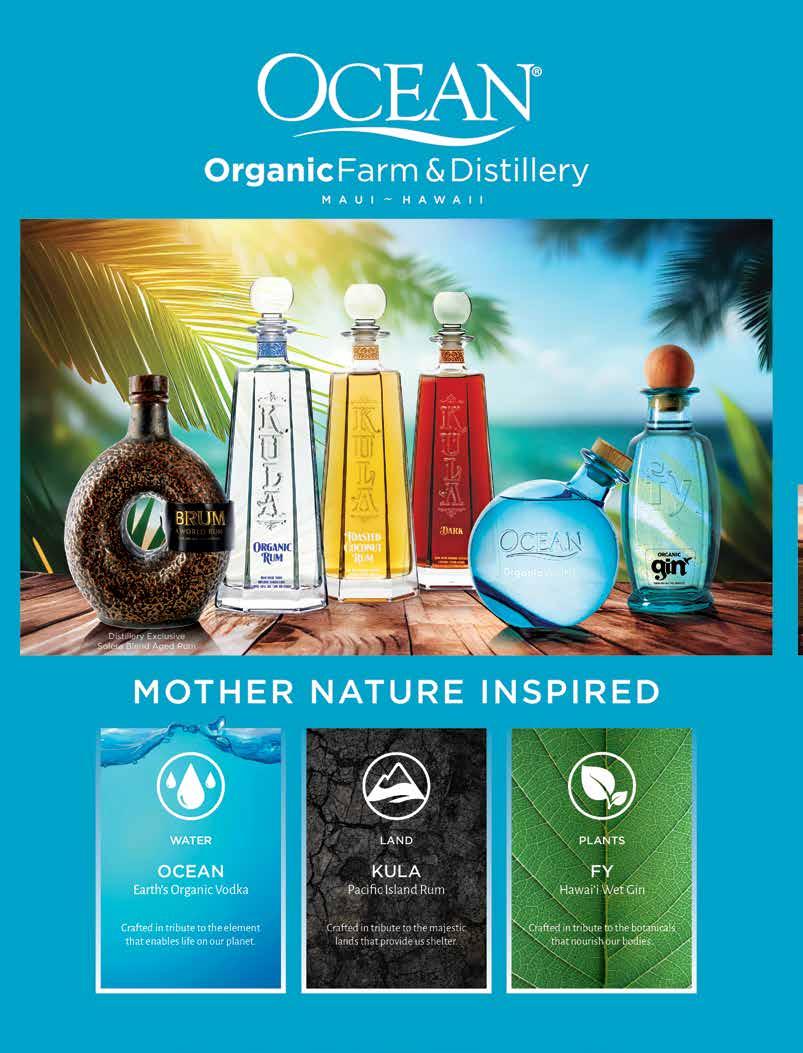


ART AFFAIR 2024: STRENGTHENING COMMUNITY THROUGH COLOR
2/24
Hui No‘eau’s signature fundraising event celebrates the importance of visual arts education in Maui at the historic Kaluanui Estate and features gourmet food, live music, a live auction and dancing. Hui No‘eau Visual Arts Center, (808) 572-6560
2024 GREAT WHALE COUNT
2/24 & 3/30
This annual community science event brings volunteers together to count whales from shore as part of a long-term survey of humpback whales in Hawai‘i. Various Locations on Maui, pacificwhale.org
MARCH
TEMPA & NAOR MUSIC MEDICINE SERIES
3/1
Maui-based singer-songwriter couple Tempa & Naor perform their unique blend of soul and folk music with special guests and audiovisuals. ProArts Playhouse Azeka Plaza-Makai, Kīhei, proartsmaui.org
MAUI 5K
3/3
This annual 5K footrace is accompanied by a one-mile fun run for keiki. Proceeds go to athletic and recreational play programs in Maui’s schools. Maui Ocean Center, (808) 271-4057
KINKY BOOTS
3/15–4/7
The bighearted musical extravaganza that won six Tony awards including Best Musical, a Grammy for Best Musical Theater album and London’s Olivier Award for Best Musical. ProArts Playhouse Azeka PlazaMakai, Kīhei, proartsmaui.org
SPRING POPS
3/17
Maui Pops Orchestra presents vocalists Ginger Pauley and Matt Tolentino performing music from the Roaring Twenties. MACC, (808) 242-7469
SOLO ART EXHIBITION 2024
3/22–5/17
Maui-based artists Sachelle Dae and Zenobia Lakdawalla will present two concurrent solo exhibits. Hui No‘eau Visual Arts Center, (808) 572-6560
CELEBRATION OF THE ARTS
3/29&30
An annual arts and cultural festival celebrating the spirit of aloha through the works of more than sixty artisans, educators, cultural practitioners, speakers and entertainers. Ritz-Carlton Maui, Kapalua, (808) 669-6200
EVENTS : MAUI / MOLOKA‘I / LĀNA‘I
2024 Great Whale Count
120
photo by david fleetham


HUI NO’EAU VISUAL ARTS CENTER
Explore the enticing beauty of Lāna‘i with one of EXPEDITIONS ecofriendly, USCG certified, daily cruises. Snorkel, hike, drive, tour or just Lounge on Lāna‘i! Aboard Expeditions, you’ll enjoy spectacular views of Maui County, including the islands of Maui, Lāna‘i, Moloka‘i and Kaho‘olawe. For three decades Expeditions has been providing the most reliable, affordable inter-island travel between Maui and Lāna‘i.
(808) 661-3756 go-lanai.com
Located in Upcountry Maui at the historic Kaluanui Estate, Hui No‘eau Visual Arts Center is a nonprofit, community arts center offering art classes, cultural workshops, exhibitions, and events. Explore the 100-year-old Kaluanui home, enjoy artwork by local artists, or take a self-guided tour of the scenic 25-acre grounds. Supported in part by the County of Maui.



(808) 572-6560
huinoeau.com

SEA-TO-TABLE CUISINE On Napili Bay VOTED BEST OCEANFRONT DINING Hours and More Information at SeaHouseMaui.com Celebrating Over 55 Years of Aloha at Napili Kai Beach Resort 5900 Lower Honoapiilani Rd • Napili • Maui • Hawaii 96761 • 808.669.1500 Breakfast • Lunch • Dinner • Happy Hour PROMOTIONAL EAT / SHOP / PLAY : MAUI / MOLOKA‘I / LĀNA‘I EXPEDITIONS
2841 Baldwin Avenue, Makawao, Maui
Mā‘alaea Harbor (Maui), Mānele Harbor (Lāna‘i)

122
KĪPUKA, EAST RIFT ZONE–HAWAI‘I ISLAND
ISLAND BY ISLAND : HAWAI‘I ISLAND
PHOTOGRAPH BY ANDREW RICHARD HARA


FEBRUARY
NIAULANI NATURE WALK
Mondays
A one-hour nature walk through an oldgrowth Hawai‘i rainforest on an easy loop trail. Walkers are introduced to the native plants and birds of Kīlauea volcano. Free. 9:30 a.m. Volcano Arts Center’s Niaulani Campus, (808) 967-8222
PORTUGUESE BREAD BAKING
Thursdays
Observe the traditional art of baking Portuguese bread in a large wood-fired stone oven, or forno. Bread sales begin at 1 p.m. Program begins at 10 a.m. Kona Historical Society, (808) 323-3222
A WALK INTO THE PAST
Fridays
Take a walk back in time to 1912 and meet the founder of the Hawaiian Volcano Observatory, Thomas A. Jaggar, at the edge of Kīlauea volcano. Free. 10 a.m. to noon. Hawai‘i Volcanoes National Park, (808) 985-6000
NIGHT MARKET
Second and Fourth Fridays
Live music, food trucks and dozens of local vendors with Hawai‘i Island products, artwork and other artisanal goods. 4 to 8 p.m. Kings’ Shops in Waikoloa, (808) 886-8811
HALEKI‘I FARMERS
MARKET
& CRAFT FAIR
First Saturdays
Crafts and art vendors, keiki entrepreneurs, fresh food, ‘ohanacentered outreach, sustainable-living resources and live music. Free. 9 a.m. to 2 p.m. Kona Grill House, (808) 960-7728
YOUTH ARTS SATURDAYS
Second Saturdays
Keiki of all ages are welcome to join guest artists and local organizations in making a variety of creative projects. Free. 10 a.m. to 2 p.m. East Hawai‘i Cultural Center, (808) 961-5711
EVENTS : HAWAI‘I ISLAND 124
Waimea Cherry Blossom Heritage Festival
photo by megan spelman
ARTISAN MARKET
Second Saturdays
Crafters and makers selling gifts, art, crafts and food. 9:30 a.m. to 3:30 p.m. Kona Commons Shopping Center, (808) 854-1439
WAIMEA CHERRY BLOSSOM HERITAGE FESTIVAL
2/3
This annual celebration of the blossoming of Church Row Park’s historic cherry trees features a variety of activities. Free. 9 a.m. to 3 p.m. Waimea, (808) 961-8706
LOVE THE ARTS FUNDRAISER
2/17
Volcano Arts Center celebrates fifty years with an evening of tasty treats, fine wines, live entertainment and live and silent auctions. Volcano Art Center’s Niaulani Campus, (808) 967-8222
HEIVA I HAWAI‘I 2024
2/17&18
Tahitian drumming, dance performances and competitions, keiki activities and Polynesian arts, crafts and food. Hale Halawai Park, heivaihawaii.com
PANA‘EWA STAMPEDE RODEO
2/17&18
An annual test of cowboy skills, featuring award-winning rodeo clown JJ Harrison,a rodeo queen contest and some uniquely Hawai‘i rodeo events. Pana‘ewa Equestrian Center, (808) 934-1004
KŌKUA KAILUA VILLAGE STROLL
2/18
Ali‘i Drive transforms into a festive, pedestrian-only marketplace filled with music and art. At 4 p.m. there is a free Hawaiian music concert at Hulihe‘e Palace. 1 to 6 p.m. Kailua-Kona, (808) 936-9202



SOKO ARTISTS STUDIO TOUR
2/24&25
Artists from Keauhou to Hōnaunau open their studios and homes to showcase their work and meet with the public. 9 a.m. to 4 p.m. Various locations in South Kona, sokoartists.com
MARCH
KONA BREWERS FESTIVAL
3/9
Craft beers from Hawai‘i and the Mainland plus gourmet food, a brewers’ dinner, a “trash fashion” show and a Run for the Hops. At BREW, konabrewersfestival.com
BIG ISLAND INTERNATIONAL MARATHON
3/17
Full and half-marathons, 5K and 10K runs and a two-mile walk, starting and finishing in Hilo, with courses along the Hāmākua coast. Virtual options available. Hilo area, hilomarathon.org
KŌKUA KAILUA VILLAGE STROLL
3/17
Ali‘i Drive transforms into a festive, pedestrian-only marketplace filled with music and art. At 4 p.m. there is a free Hawaiian music concert at Hulihe‘e Palace. 1 to 6 p.m. Kailua-Kona, (808) 936-9202
GREATNESS FROM START TO FINISH
3/24
The Kamuela Philharmonic’s MasterWorks season finale features Haydn’s first symphony, Jesse Montgomery’s Rounds for piano and string orchestra and Dvořák’s Symphony No. 8. Kahilu Theatre, (808) 885-6868
NĀ PALAPALAI
3/30
A night of music and hula with Nā Palapalai and Hālau a Keahilapalapa under the direction of Kumu Hula Naoho Kanahele. Palace Theater, (808) 934-7777
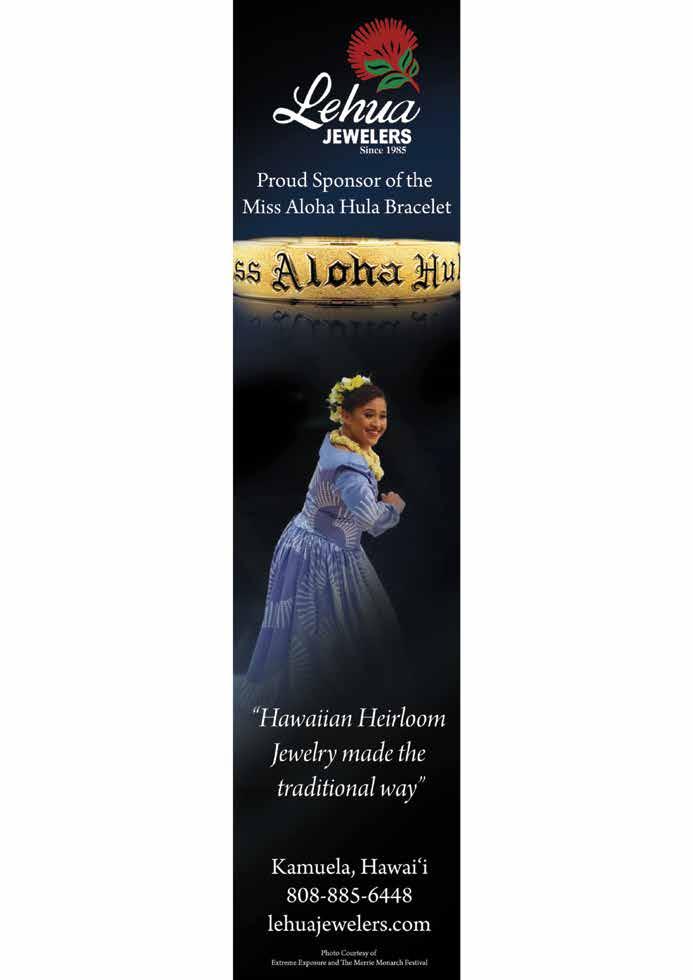

Ā HUALOA FAMILY FARMS
45-3279 Mamane Street, Honoka‘a
Stop by “The Nuthouse” and see what’s crackin’! Ā hualoa Family Farms grows, processes, and produces delicious 100% Hawaiian macadamia nuts and 100% H ā m ā kua coffee in Historic Honoka‘a town, the gateway to Waipi‘o Valley. Come in for free samples, relax on the l ā nai, enjoy a cup of coffee and take home your favorite macadamia nut flavor. See you at The Nuthouse!

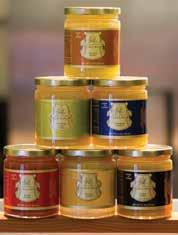
LIKO LEHUA
177 Kaumana Drive, Hilo
(808) 775-1821
ahualoafamilyfarms.com
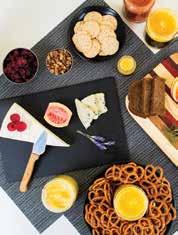
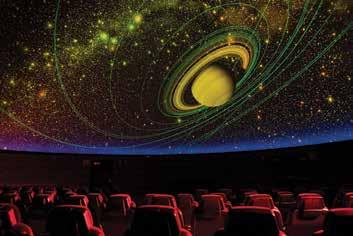
‘IMILOA
University of Hawai‘i at Hilo 600 ‘Imiloa Place, Hilo
Embark on a uniquely Hawaiian voyage at ‘Imiloa in Hilo! Immerse yourself in our cutting-edge Planetarium, traverse our interactive Exhibit Hall, and wander through our lush outdoor native garden. ‘Imiloa is ideal for family visits, educational experiences, farm-to-table dining, and unforgettable events. Inquire about our membership discounts to make the most of your journey!

Liko Lehua gourmet butters are handcrafted in small batches with fresh fruit from our family farm. Visit our Café in the bright yellow building above Hilo town for a burger and milkshake drizzled with Lilikoi Butter. Ask to sample all seven delicious flavors. Gift a jar to your ‘Ohana. Liko Lehua is “spreading Aloha across the world” since 1996!

(808) 315-8484
@likolehuacafe
(808) 932-8901
imiloahawaii.org

VOLCANO ART CENTER
Volcano, Hawai‘i
Volcano Art Center promotes, develops and perpetuates the artistic, cultural and environmental heritage of Hawai’i through art and education. Celebrate the Past, Present and Future of the Arts as VAC turns 50 in 2024! Become a member to experience exhibits, classes, concerts and ongoing signature programs including Hula Arts At Kīlauea, the Cultural Connections Initiative and Free Guided Forest Tours.

(808) 967-8222
www.volcanoartcenter.org
PROMOTIONAL EAT / SHOP / PLAY : HAWAI‘I ISLAND

WAIMEA CANYON–KAUA‘I 128 ISLAND BY ISLAND : KAUA ‘ I

PHOTOGRAPH BY MALLORY ROE

FEBRUARY
WAIMEA PLANTATION LIFESTYLE TOUR
Tuesdays, Thursdays and Saturdays
Walking tours through the Waimea Plantation Cottages and the Waimea Sugar Company “camp” houses, which date from the turn of the twentieth century. Waimea Town, (808) 337-1005
KAUA‘I
CULINARY MARKET
Wednesdays
A weekly farmers market featuring fruits, vegetables, flowers and a cooking demonstration. 3:30 to 6 p.m. The Shops at Kukui‘ula, (808) 742-9545
MAKAI MUSIC & ART FESTIVAL
Wednesdays
A weekly gathering with performances by local musicians and an assortment of handmade jewelry, crafts, art and more from local vendors. Free. 1 p.m. to 5 p.m. Princeville—Makai Lawn, (808) 318-7338
ALOHA MARKET
Thursdays
Everything from fresh fruits and vegetables to noodles, spices and treats, along with jewelry, clothing, art and more for purchase. Hula performance at 12:30 every week. Free. 10 a.m. to 2 p.m. NTBG South Shore Visitor Center, (808) 742-2623
ALOHA FRIDAY ART NIGHTS
Fridays
Each Friday night Kress Street fills with live art demonstrations. From music to murals, artists share their craft with the community. Kress Street, Līhu‘e, (808) 652-1442
HANAPĒPĒ ART NIGHT
Fridays
Hanapēpē town comes to life with food trucks, street performers, live music and opportunities to talk story with local artists and gallery owners. Free. 5 to 8 p.m. Hanapēpē, hanapepe.org
OLD KAPA‘A TOWN ART WALK
First Saturdays
Food vendors, crafts and treasures from local artisans, and services from local nonprofit organizations along with live multicultural performances. Old Kapa‘a Town, kbakauai.org
HANALEI FARMERS MARKET
Saturdays
Fruits and vegetables from Kaua‘i’s North Shore along with fresh-squeezed juices, locally made honey, fresh-baked goods and arts and crafts. 9 a.m. for seniors, 9:30 a.m. to noon for general admission. Hale Halawai ‘Ohana O Hanalei, (808) 826-1011
ANAHOLA NIGHT MARKET
Last Saturdays
Live music, delicious food and handmade products from over twenty local vendors. 4 to 9 p.m. Anahola Marketplace, (808) 320-7846
PRINCEVILLE FARMERS & ARTS MARKET
Saturdays
Farm fresh fruits and veggies, along with local artisans, vintage treasures, live music and more. 9:30 a.m. to 12:30 p.m. Princeville Community Center, bloomandprosperhawaii.com
ALAKOKO PLANT SWAP
Sundays
This weekly market offers plant lovers the chance to buy, sell or trade a variety of greenery. Free. 10 a.m. to 1 p.m. Alakoko Shop, (808) 652-1442
LOCAL TREASURES MARKET
First Sundays
An outdoor market showcasing products from local artisans, crafters, food trucks, bakers and vintage vendors. 9 a.m. to 2 p.m. Kaua‘i Veterans Center, (808) 635-4314
WAILUA BAY CREATORS FAIR
Fourth Sundays
Artisan goods, clothing, accessories, handsewn items, jewelry, photography, wood carvings, home decor and more accompanied by live music and local food vendors. 8:30 a.m. to 1 p.m. Hilton Garden Inn, Kaua‘i, Wailua Bay, (808) 746-2162
ENDANGERED HAWAI‘I WATERBIRDS
2/6
Hawai‘i’s wetland birds face many threats to their habitat. Helen Raine, co-founder of Archipelago Research and Conservation will address current work to protect native species. Free. 11 a.m. to 1 p.m. Keoki’s Paradise Po‘ipū, (808)742-7534
KAUA‘I QUILT
SHOW 2024
2/9–21
This annual event features more than seventy locally made quilts, many of which are for sale. Opening reception on 2/9 from 5 to 8 p.m. Kukui Grove Shopping Center, (808) 652-2261
EVENTS : KAUA ‘ I 130
Kaua‘i Quilt Show 2024

JAKE
SHIMABUKURO & MAC MCANALLY
2/9
‘Ukulele master Jake Shimabukuro and songwriter, singer, and instrumentalist, Mac McAnally perform Celebrating Songs & Stories on Distant Shores , a concert in honor of their late friend and mentor Jimmy Buffett. Anaina Hou Community Park, (808) 828-2118
DOWNTOWN LĪHU‘E NIGHT
MARKET
2/10
Crafts, gifts, food trucks, baked goods, live entertainment and more. Featuring more than fifty vendors each month. Free. 4 to 8 p.m. Kress Street, Līhu‘e, (808) 652-1442
PRINCEVILLE NIGHT MARKET
2/11
This monthly festival features live music, pottery, paintings, apparel, jewelry and more than forty local artisans. Free. 4 to 8 p.m. Princeville Shopping Center, (808) 635-2572
OVER THE RIVER AND THROUGH THE WOODS
2/16–3/3
Follow the story of Nick, a young man torn between his dreams and the deep-rooted love of his grandparents. Puhi Theatrical Warehouse, (808) 245-7700
WAIMEA TOWN CELEBRATION
2/17–25
A week of continuous events, with a canoe race, fun run, ice cream eating contest, film festival, cultural exhibits, softball and basketball tournaments, rodeo and more. Waimea Town, waimeatowncelebration.com
MARCH
DOWNTOWN LĪHU‘E NIGHT MARKET
3/9
Locally made crafts, gifts, food trucks, baked goods, live entertainment and more. Featuring more than fifty vendors each month. Free. 4 to 8 p.m. Kress Street, Līhu‘e, (808) 652-1442

COMMON GROUND KAUA‘I
A culinary experience unlike any other, Common Ground’s Farm and Food Experience showcases the very best of Hawai‘i’s ingredients. Enjoy a tour through our regenerative food forest followed by an incredible meal prepared by our chefs, featuring 100% local ingredients. Spend an evening on our magical campus. Enjoy the beautiful farm setting and a delicious one of a kind meal.

PRINCEVILLE NIGHT
MARKET
3/10
This monthly festival features live music, pottery, paintings, apparel, jewelry and more than forty local artisans. Free. 4 to 8 p.m. Princeville Shopping Center, (808) 635-2572
THREATS TO ‘ŌHI‘A LEHUA
3/20
Kim S. Rogers, Kaua‘i’s Rapid Ōhi‘a Death Outreach Specialist, shares what is being done to save this culturally significant tree and how residents and visitors can help. Free. 11 a.m. to 1 p.m. Keoki’s Paradise Po‘ipū, (808) 742-7534
SIX DEGREES OF SEPARATION
3/29–4/14
As truths and lies intertwine, this gripping drama challenges our perceptions and forces us to question the boundaries of our own lives. Puhi Theatrical Warehouse, (808) 245-7700

HORSES ARE GOOD COMPANY
A curated boutique and paniolo concept store with an amazing selection of denim, tack, vintage boots, Hawaiian western wear, books, and more. Discover quality products and one-ofa-kind gifts, rare vinyl records, muumuu, palaka, and taste our seasonal selections of kava sodas! Find us in Kalaheo on your next visit to Kauai!
(808) 828-6368
www.commongroundkauai.com
KAUA ‘
EVENTS :
I
horsesaregood.com (808) 378-2116
4427
Papalina, Kalāheo
4900
Kuawa Rd, Kīlauea
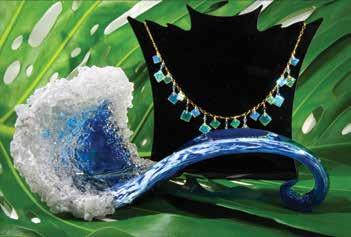
KELA’S GLASS GALLERY
4-1400 Kuhio Highway, Kapa‘a
At Kela’s Glass Gallery, it’s all about the glass art. See for yourself the stunning Color Changing Jewelry by the owner Mimi. This impressive gallery features the works of over 150 fine glass artists. Apparently the specialization works. Kela’s Glass Gallery won the prestigious Top Retailer Award from NICHE Magazine voted on by over 10,000 American artists.

(808) 822-4527 glass-art.com

SALTY WAHINE GOURMET HAWAIIAN SEA SALTS
Salty Wahine Gourmet Hawaiian Sea Salts is a family-owned Kaua ‘ i Made Company that specializes in Kosher Hawaiian Sea salts, seasonings, and tropical sugars using fruit infusions like mango, coconut, guava, passionfruit, dragonfruit, and pineapple. All products are made by hand with Aloha in our Salty Wahine commercial kitchen/factory in Hanap ē p ē , Kaua ‘ i.

KIKO
4-1316 Kūhiō Hwy, Kapa ‘a
A celebration of the simple, the beautiful, the unique. KIKO honors the handmade over the mass-produced, natural over glitzy, useful over useless, fair trade over exploited, one-of-a-kind over you’veseen-it-everywhere. Clothing, art, jewelry, books, housewares & art supplies in the heart of old Kapa ’a Town. A little bit of everything. @kikokauai
(808) 822-5096

TIKI TOES ALOHA STICKERS
Kaua‘i, O‘ahu, Maui, Hawai‘i Island
Keep spreading aloha wherever you are! Tiki Toes is the original aloha sticker company. Made in Hawai‘i. Proudly ‘ohana-owned and operated for three generations, since 1999. Mahalo for sticking with us! Find our classic stickers and temporary tattoos on all islands. Pick any of our authentic designs and show your love for Hawai‘i nei. Available at ABC Stores and other fine establishments statewide. “Eh, sticks on whatevahs!”

(808) 378-4089
1-3529 Kaumuali‘i Highway Unit 2B, Hanapēpē saltywahine.com

info@tikitoes.com
tikitoes.com
PROMOTIONAL EAT / SHOP / PLAY : KAUA ‘ I
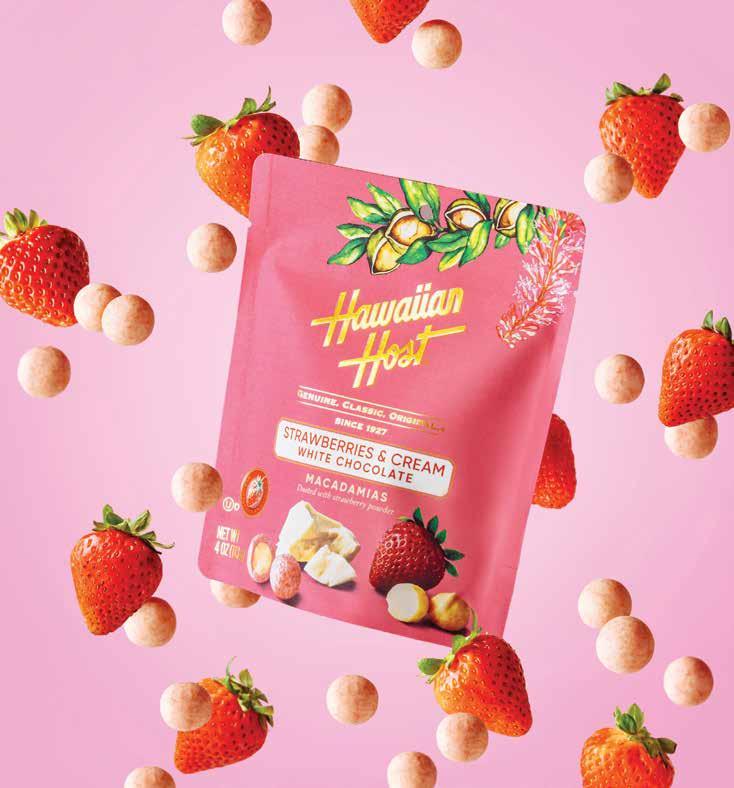
Indulge your taste buds with our newest flavor. Crafted from creamy white chocolate and infused with strawberries to create a delightful mix of sweet decadence and tart tang.
Available at select retailers in Hawai‘i and HawaiianHost.com.
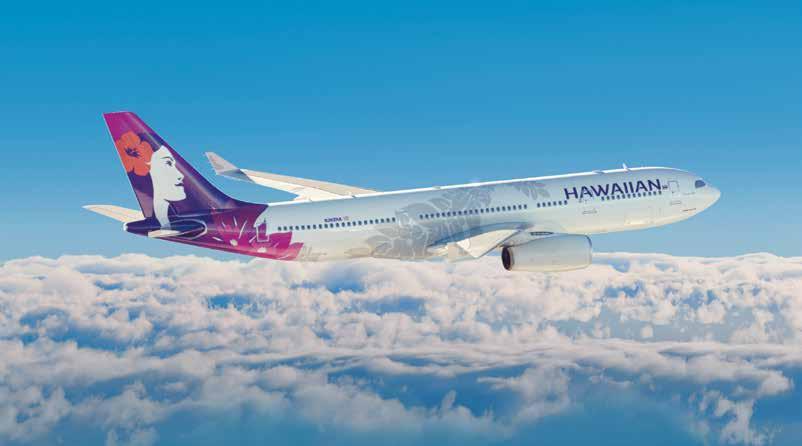
Aloha
Welcome aboard
E nanea i kā mākou ho‘okipa, a e luana i ka lele ‘ana!
Please enjoy our hospitality, and have a relaxing flight!
In Hawaiian culture, mea ho‘okipa means "I am your host." This phrase expresses the spirit of hospitality you'll find on our flights, whether you're traveling to the Neighbor Islands, between Hawai‘i and North America or within the Asia-Pacific region. If there is anything that we can do to make your flight more enjoyable, please don't hesitate to let us know.
136 / In-Flight Meals
137 / Streaming Entertainment on A321neo Aircraft
138 / In-Flight Snacks, Souvenirs and Beverages
140 / Terminal Maps
142 / HawaiianMiles Partners
144 / Route Map
146 / The ‘Ohana Pages
ALOHA FROM HAWAIIAN AIRLINES 135
In-Flight Tastes of Hawai‘i
Delicious Complimentary Meals
It’s true. We’re one of the only airlines left in the country to serve you a complimentary meal at mealtime in the Main Cabin. You’ll find Hawai‘i-inspired meals on select flights to and from Hawai‘i, always served with our unique brand of Hawaiian hospitality.


Above top: Wade Ueoka and Michelle Karr-Ueoka
Bottom: Chuck Furuya
Left to right: Chef Eric Oto of Hoku’s at the Kahala Resort and Spa, Chef Robynne Maii of Fete Hawaii, Chef Dell Valdez of vein at Kaka‘ako, Executive Chefs Wade Ueoka and Michelle Karr-Ueoka of MW Restaurant, Chef Chris Kajioka of Miro Kaimuki and Chef Jason Yamaguchi of Mugen Waikiki.
Hawaiian Airlines Featured Chef Series showcases star chefs
Hawaiian Airlines’ in-flight service shares the sights, sounds and tastes of Hawai‘i, and when it comes to our First Class meal service, that means exciting, varied Pacific Rim cuisine with our Featured Chef Series. This esteemed collaboration showcases some of Hawai‘i’s most dynamic chefs creating menus for meals served in our forward cabin.
The Featured Chef Series is overseen by Hawaiian Airlines Executive Chefs Wade Ueoka and Michelle Karr-Ueoka.
Sit back and enjoy Hawai‘i’s vibrant food culture and our distinct onboard experience.
A taste of tradition
Executive Chefs Wade Ueoka and Michelle Karr-Ueoka opened MW Restaurant in Honolulu in 2013. Their cuisine combines inspirations from travels around the world with Hawai‘i’s culinary traditions and local bounty. To sample MW’s latest creations visit their new location at 888 Kapi‘olani Boulevard in Honolulu.
MWRestaurant.com
Wine pairings by our Master Sommelier
Chuck Furuya has a passion for the world’s oldest fermented beverage and holds the distinction of becoming only the tenth person in the United States to pass the rigorous Master Sommelier examination, in 1988. You can find Chuck at Chuck Furuya Uncorked on YouTube.

HO‘OKIPA
136
In-Flight Entertainment on A321neo Aircraft
Streaming Entertainment to Personal Devices
Guests on our new A321neo aircraft are able to stream complimentary inflight entertainment on their personal electronic devices. We offer a wide selection of movies, TV shows and music as well as Hawaiian Airlines’ own exclusive programming.
Viewing on a Personal Device
IN THE HAWAIIAN AIRLINES APP
1. Once onboard:
• Switch to Airplane Mode
• Connect to “Movies on HawaiianAir” WiFi network
2. Open the Hawaiian Airlines app:
• Select “More” » Select “In-Flight Entertainment”
Supported on IOS 13+ and on Android 8.0+
IN A BROWSER
1. Connect to “Movies on HawaiianAir” WiFi network
2. Open browser and type in URL: HawaiianAirWifi.com
3. Choose from the menu and enjoy!
Please note: Internet Explorer and Edge browsers are not supported at this time.
Having trouble accessing the entertainment?
TRY THESE GENERAL TROUBLESHOOTING STEPS:
1. Double-check device settings to ensure airplane mode and WiFi are both enabled.
2. Ensure you are connected to the “Movies on HawaiianAir” WiFi network.
3. Make sure you are using the latest version of the Hawaiian Airlines app.
4. Close and relaunch the Hawaiian Airlines app after connecting to WiFi network.
Mele
Collections to suit your musical tastes
Hawaiian Airlines offers DJ-hosted, curated audio programming devoted to musical styles from across the globe, ranging from award-winning Hawaiian music to jazz and K-Pop.*
FEATURED CHANNELS INCLUDE:
Island Favorites
From the latest award-winning songs to the all-time classics, Island Favorites surveys the best in Hawaiian music, including Kolohe Kai, Mauna Lua and Waipuna.
Wings of Jazz
Bassist Dean Taba is a featured artist in this exploration of the many forms of Island jazz.
Slack Key Serenity
Stephen Inglis is among the kī ho‘alu masters who present varied interpretations of the Hawaii-born slack-key guitar style.
‘Ukulele Wizards
A celebration of Hawai‘i’s iconic instrument and those who use it to make musical magic.
*Available only on A330 and A321neo aircraft.


137 HO‘OKIPA
Waipuna (left) and Kolohe Kai (right).
Noho Home x Hawaiian Airlines
We are proud to partner with Noho Home by Jalene Kanani on the limited edition Leihōkū Collection. Products are available while supplies last.

Travel Blanket**
Reusable Cleaning Cloths (3)
Chopsticks (5 pairs)
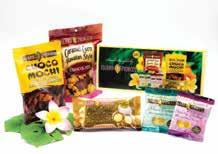
Made in Hawai‘i Snack Sampler

In-Flight Snacks and Souvenirs
Pau Hana Snack Cart
Keepsake blanket, popular local snacks, souvenirs and sundries are available from the Pau Hana Snack Cart. Cabin crew will advise when the cart is heading down the aisle on domestic flights or is open in the galley on Australia and New Zealand flights.
Selections and quantities are limited and may vary. To print receipts of in-flight purchases, visit HawaiianAirlines.com/receipts.
Popular Local Snacks
Mananalu Water in Aluminum Bottle, 16 oz.**
Hawaiian Chip Company Taro and Sweet Potato Chips
Island Princess Caramel Macadamia Nut Popcorn
Kona Chips Furikake Chips
Samurai Furikake Popcorn
Snack Packs*
Made in Hawai‘i Snack Sampler K Choco Caramel Popcorn, Choco Mochi, Lightly Salted and Maui Onion Macadamia Nuts, Mele Mac
Classic Snack Box GF Crackers, Chickpeas, Turkey Stick, Hummus, Gummies, Sweet Treat
Keiki (Child) Snack Box GF Cheese Puffs, Granola Minis, Turkey Stick, Applesauce, Gummies, Sweet Treat
‘Ono Snack Box GF Salami, Cheese Spread, Dried Fruit, Olives, Crackers, Sweet Treat
Cheese Tray with Crackers and Dried Fruit
Classic Snacks
M & M’s Peanut
Maruchan Cup Ramen Chicken
Pringles K
Sundries
Noho Home Travel Blanket**
Ear Buds with Hawaiian Airlines Zipper Case**
Hawaiian Airlines Blanket and Pillow Set**
138 HO‘OKIPA
$3.50 $8.50 $6.50 $8.50 $8.00 $10.50 $8.00 $8.00 $8.00 $7.00 $3.50 $4.50 $4.50 $18.00 $4.00 $11.50 * Snack box components are subject to availability. Please see snack box for list of included items. ** Available on select North America flights only. GF Gluten-Free K Kosher
‘Ono Snack Box
Travel Wrap
$18.00 $12.00 $12.00 $16.00
In-Flight Beverages
Juices
Passion-Orange-Guava* (POG)
Pineapple Orange Nectar / Apple / Orange
Mott’s Tomato / Mr. & Mrs. T Bloody Mary Mix
Hot beverages
Lion Coffee* / Tea
Soft drinks
Coke / Diet Coke / Sprite
Diamond Head Strawberry Soda
Canada Dry Ginger Ale
Milk (Lowfat or Whole)
Club Soda / Tonic Water / Flavored Sparkling Water
Cocktails
Mai Tai (Kō Hana)
Aviation** (On the Rocks)
Old Fashioned** (On the Rocks)
Pineapple Daiquiri** (Kō Hana)
Spirits
Rum (Koloa Rum)
Vodka (Ocean)
Scotch (Dewars)
Whiskey (Jack Daniel’s)
Gin (Tanqueray)
Hard Seltzer Dragon Fruit** (Maui Brewing Co.)
Koloa Pineapple Passion*** (Koloa Rum)

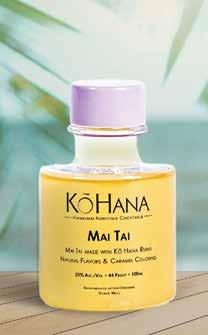
Wines & Champagne
Mionetto Prosecco Sparkling Wine Split
Woodbridge Cabernet Red Wine Split**
Benton Hills Cabernet Red Wine Half Bottle
Woodbridge Chardonnay White Wine Split**
Benton Hills Chardonnay White Wine Half Bottle
Complimentary beverages provided by
*Complimentary on Neighbor Island flights.
**Available for purchase on Neighbor Island flights.
***Complimentary glass on flights to/from Hawai‘i and West Coast North American cities. $6 per glass thereafter.
All beer, wine, champagne and spirits available for purchase on North American flights. Complimentary in First/Business Class.
Alcoholic Beverages
Only alcoholic beverages provided by Hawaiian Airlines and served by Flight Attendants may be consumed on board the aircraft. No alcoholic beverages will be served to persons who appear intoxicated or to those under 21 years of age.
Hawaiian Airlines’ complimentary items may change or vary from time to time, and availability can be affected by aircraft schedule changes.
Beverage menu is subject to change. Some items may not be available on all flights and/or classes of service. Beverage availability is limited. Beers, wines, spirits, snacks and sundries are available for purchase with major credit/debit cards only.
139 HO‘OKIPA
$8.00 $8.00 $8.00 $8.00 $8.00 $8.50 $8.00 $8.50 $8.50 $8.50 $6.00
$9.50 $8.00 $16.00 $8.00 $16.00
Beers Heineken**
Bikini Blonde Lager** (Maui Brewing Co.)
$8.50 $8.50
TERMINAL MAPS 140 A13 A1 A2 A3 A4 A5 A6 A7 A8 A9 A10 A11 A12 A14 A15 A16 A17 A18 A19 A20 D2 D1 E1 E3 E5 E7 E2 E4 E6 E9 E10 E8 F1 F2 G1 G2 G3 G4 G5 G6 C1 C2 C3 C5 C4 C6 C7 C8 C9 B1 B2 B4 B3 B5 Parking Parking Parking Wiki Wiki Shuttle Wiki Wiki Shuttle Wiki Wiki Shuttle LOBBY 2 LOBBY 3 LOBBY 4 LOBBY 5 LOBBY 6 LOBBY 7 LOBBY 8 Gates Continental U.S. & International Departures Gates Continental U.S. & International Departures Customs Third Floor Neighbor Island, Continental U.S. & International Departures Gates Second Floor PREMIER CLUB LOBBY 3 International and Neighbor Island Check-in LOBBY 2 Continental U.S. Check-in
Ho no lulu Da n iel K I n ou ye In t erna t io n al Airp o r t • Check-in for our non-stop Japan flights is at Lobby 4 • Check-in for all International and Neighbor Island flights is at Lobby 3 • Check-in for our Continental U.S. flights is at Lobby 2 LOBBY 4 Japan Flights Check-in E10 E11 E12 E9 E8 E7 E6 E5 E4 JetBlue codeshare flights operate from Terminal C Hawaiian Airlines flights use Terminal E, Gates E10-E12
Bo st on Loga n In t erna t io n al Airp o r t E3 E2 E1 E1A C8 C9 C10 C11 C15 C16 C17 C18 C19 C22 C20 C21 C14 C12 C28 C26 C27 C36 C34 C32 C30 C29 C31 C33 C25 C24 C23 TERMINAL E TERMINAL C Gates
HNL I
B OS I
LAX I
TERMINAL MAPS TERMINAL MAPS E2 E4 E6 E10 E8 F1 F2 G1 G2 G3 G4 G5 G6 Parking Wikiwiki Shuttle LOBBY 6 LOBBY 7 LOBBY 8 Check-in for all International and Neighbor Island flights is at Lobby 3 Check-in for our North America flights is at Lobby 2 D40 D38 D36 D34 D32 D50 D16 D51 D18 D26 D25 D24 D23 D22 D21 D20 D19 D17 D4 D6 D8 D10 D11 D12 D14 D9 D7 D5 D3 D1 D53 D52 D54 55 D59 37 D35 D33 Terminal 1 Tram To Terminal 3 and E-Gates AS I La s Vegas Harry Reid In terna tio nal Airp or t CONCOURSE D NRT I Tokyo Narita International Airport TERMINAL 4 Gates 40-49 TERMINAL 5 Gates 50-59 Tunnel Level Tunnel Level 210 (A/B) 208 207 205 203 206 204 202 221 225 • Guests on JetBlue codeshare flights will need to transfer from Terminal B to Terminal 5. • Please follow the dotted-lined pathway as shown in the map above (minimum 30 minute walk). Hawaiian Airlines flights use Gates 201-225. 209 (A/B) 201 (A/B) Gates 201-225 Third Floor TERMINAL 4 Connector UPPER LEVEL TERMINAL B Gates 130-225 Check-In Third Floor Baggage Claim First Floor to TERMINAL 6 Basement Level L AX I Los Angeles International Airport 114 148 147 146 145 144 143 142 141 113 112 110 111 109 108 Gates 105 -107 HND I Tokyo Haneda International Airport INTERNATIONAL TO DOMESTIC 1. Collect baggage, if necessary, and proceed to Customs clearance. 2. Check-in at the JAL Domestic Connection Counter on Level 2 3. Proceed through the domestic transfer security inspection area. 4. Take the escalator down to the JAL Domestic Transfers bus stop. Exit the bus at Domestic Terminal 1 INTERNATIONAL TO INTERNATIONAL • If you HAVE NOT checked in to your final destination at your departure airport, go to the International Transfers Counter just before Immigration. • All travelers must go to the Security Inspection Area (entrance next to the Transfers Counter) before heading to Departures on Level 3 For more information regarding transfers, please visit HawaiianAirlines.com INTERNATIONAL TERMINAL 3 75 76 77 82 92 94 96 84 86 88 87 85 83 81 91 93 95 97 99 98 74 73 72 71 61 62 63 64 65 66 67 68 TERMINAL 3 TERMINAL 2 141 114 149 14 8 147 14 6 145 14 4 143 142 14 0 141 113 112 110 111 109 108 Gates 105 -107 HND I Tokyo Ha ned a In terna tio nal Airpo rt INTERNATIONAL TO DOMESTIC 1. Collect baggage and proceed to Customs clearance. 2. Check in at the JAL Domestic Connection Counter on Level 2 3. Proceed through the domestic transfer security inspection area. 4. Take the escalator down to the JAL Domestic Transfers bus stop. Exit the bus at Domestic Terminal 1
INTERNATIONAL
you HAVE NOT checked in to your final destination at your departure airport, go to the International Transfers Counter just before Immigration. • All travelers must go to the Security Inspection Area (entrance next to the Transfers Counter) before heading to Departures on Level 3 For more information regarding transfers, please visit HawaiianAirlines.com INTERNATIONAL TERMINAL 3 JFK I John F. Kennedy International Airport Hawaiian Airlines Baggage Claim Level 1 TERMINAL 4 Level 3 Gates A2-A7 and B23 TERMINAL 5 Level 3 Gates 1-30 A2 A3 A5 A7 A4 A6 15,16 14 12 9 10 11 8 7 6 1 17 18 19 20 21 22 23 24 25 27 26 29 28 30 TSA/Security Checkpoint Level 3 Exit Security Level 1 Guests on JetBlue codeshare flights will need to transfer from Terminal 4 to Terminal 5. Please follow the yellow dotted-lined pathway as shown in the map below. Expected time is 45 minutes (15 minute walk, and time for AirTrain and security). Hawaiian Airlines Check-In Level 4 AirTrain Level3 AirTrain Level 3 SkyWalk Level 4 to Gates B24-B55 5 4 3 2 Gates B23 B20 B22 TERMINAL 4 Gates 40-49 TERMINAL 5 Gates 50-59 Tunnel Level Tunnel Level 210B 210A 209A 207 205 208 206 204 202 221 225
JetBlue
need to transfer from Terminal
to Terminal 5.
follow the dotted-lined
map above
30 minute
209B 201B Gates 201-225 Fourth Floor TERMINAL 4 Connector UPPER LEVEL TERMINAL B Gates 130-225 Check-In Third Floor Baggage Claim First Floor to TERMINAL 6 Basement Level
INTERNATIONAL TO
• If
• Guests on
codeshare flights will
B
• Please
pathway as shown in the
(minimum
walk).
Los A ngele s In te rnati onal Ai rp ort 203 201A 134 132 130 148 150 Gates
Earn bonus HawaiianMiles ® and


Holey Grail Donuts
On a quest for donuts with a difference? These use taro root as the starch and are prepared in coconut oil. Earn 2 bonus miles per $1 spent when using your Hawaiian Airlines® Mastercard® or Bankoh Hawaiian Airlines® Visa® Debit Card.1



Hawaiian Chip Company
Stop by their factory store for made-to-order chips and earn 2 bonus miles per $1 spent when using your Hawaiian Airlines® Mastercard® or Bankoh Hawaiian Airlines® Visa® Debit Card.1


Lanikai Juice Hawaii
Fresh, healthy, delicious. Earn 2 bonus miles per $1 spent when using your Hawaiian Airlines® Mastercard® or Bankoh Hawaiian Airlines® Visa® Debit Card.1
Kualoa Ranch
Experience one of O‘ahu’s most scenic, exciting destinations and earn 5 bonus miles per $1 spent when using your Hawaiian Airlines® Mastercard® or Bankoh Hawaiian Airlines® Visa® Debit Card.1
1 Hawaiian Airlines® Mastercard® includes Hawaiian Airlines® World Elite Mastercard® and Hawaiian Airlines® Business Mastercard®. Partner bonus miles earned through this offer are in addition to standard miles earned using Hawaiian Airlines® Mastercard® or Bankoh Hawaiian Airlines Visa Debit Card. Partner bonus miles are not awarded on debit card PIN transactions. No miles are awarded on cash back transactions. Please allow 4-6 weeks for miles to post to your HawaiianMiles account. HawaiianMiles standard terms and conditions apply. Additional restrictions may apply, see partner for details. Barclays Bank Delaware and Bank of Hawaii are not affiliated with the merchants participating in the HawaiianMiles Marketplace. Please log in to your account to view your Reward Rules for more information about the rewards associated with your account. The Hawaiian Airlines Mastercard is issued by Barclays Bank Delaware pursuant to a license from Mastercard International Incorporated. Mastercard, World Mastercard, World Elite Mastercard, and the circles design are registered trademarks of Mastercard International Incorporated. The Bankoh Hawaiian Airlines Visa Debit Card is used by Bank of Hawaii. VISA is a registered trademark of Visa International Service Association and used under license.

bring your next adventure closer
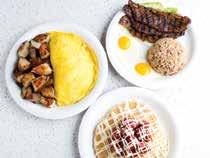
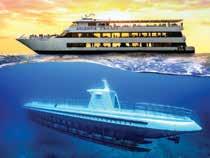

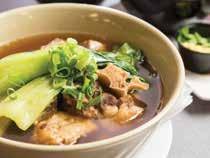

Koa Pancake House
Traditional breakfast and lunch plates with Island flair. Earn 2 bonus miles per $1 spent when using your Hawaiian Airlines® Mastercard® or Bankoh Hawaiian Airlines® Visa® Debit Card.1

Atlantis Adventures
Explore Hawai‘i above or beneath the sea. Earn 5 miles per $1 spent when using your Hawaiian Airlines® Mastercard® or Bankoh Hawaiian Airlines® Visa® Debit Card.1

Waimea Valley
Hawaiian culture comes to life at this sacred historical site featuring breathtaking views. Earn 3 bonus miles per $1 spent when using your Hawaiian Airlines® Mastercard® or Bankoh Hawaiian Airlines® Visa® Debit Card.1

Aiea Bowl
Bowl a game or two, enjoy a delicious meal at The Alley Restaurant and earn 2 bonus miles per $1 spent when using your Hawaiian Airlines® Mastercard® or Bankoh Hawaiian Airlines® Visa® Debit Card.1
Visit Partners.HawaiianAirlines.com to learn more about earning bonus miles at thousands of locations nationwide.
SOUTH KOREA
PHILIPPINES
AUSTRALIA
VIETNAM CAMBODIA MALAYSIA THAILAND CHINA
INDONESIA PAPUA NEW GUINEA NEW ZEALAND AMERICAN SAMOA JAPAN Tokyo / Haneda Tokyo / Narita Osaka / Kansai Pago Pago Seoul / Incheon Taipei Miyako Jima Ishigaki Guangzhou Sapporo / Chitose Sydney Brisbane Auckland Naha /Okinawa Guam Shanghai /Pudong Hong Kong Busan Osaka / Itami Seoul/Gimpo Dalian Komatsu Akita Niigata Yamagata Hanamaki Aomori Morioka Sendai Misawa Kushiro Obihiro Hakodate Memanbetsu Asahikawa Nagoya Izumo Hiroshima Kitakyushu Fukuoka Nagasaki Kumamoto Amami Oshima Shanghai Metro Kagoshima Miyazaki Matsuyama Kochi Takamatsu Tokushima Okayama Nanki Shirahama Oita Ube Bangkok Ho Chi Minh City Manila Hanoi Jakarta Kuala Lumpur Singapore Queenstown Melbourne Sunshine Coast Gold Coast Ballina Byron Cairns Launceston Hobart Perth Adelaide Beijing HAWAIIAN AIRLINES ROUTE MAP 144


Partners: Codeshare Partners: Hawaiian Airlines has 65 Interline Partners across the globe. Some international routes behind and beyond Japan pending receipt of government operating authority Not all routes operate year-round. TA H ITI NORTH AMERICA MEXICO KAUA‘I O‘AHU MAUI HAWAI‘I ISLAND HAWAI‘I MOLOKA‘I LANA‘I NI‘IHAU KAHO‘OLAWE PUERTO RICO
COOK ISLANDS Papeete Rarotonga San Jose San Francisco San Diego Long Beach Sacramento Portland Phoenix Austin Ontario Oakland Reno Las Vegas Los Angeles Seattle New York / Kennedy
Interline
CANADA
Kahului Kailua-Kona Kailua-Kona Hilo Lı hu‘e Honolulu Honolulu Lıhu‘e Portland Boston Nantucket Martha’s Vineyard Raleigh-Durham Charlotte RichmondWashington D.C./Reagan Baltimore Philadelphia Charleston Orlando Savannah Atlanta Nashville Jacksonville West Palm Beach Fort Lauderdale Miami San Juan Tampa Fort Myers Rochester Buffalo Detroit Chicago Cleveland Pittsburgh Syracuse Newark Salt Lake City 145
Kahului
The ‘Ohana Pages

A Lifetime of Flight
In December 1929, Ben Lee’s mother took him on a historic adventure: A flight aboard Inter-Island Airways’ Bellanca CH-300 Pacemaker. Inter-Island had inaugurated passenger service a few weeks earlier and Lee, then eleven months old, was at that point the airline’s youngest guest ever.
Lee doesn’t recall seeing the crystalline waters of Waikīkī from the cabin window or posing with his mother for a photo afterward on the wing strut of the Bellanca, Inter-Island’s first aircraft. The Honolulu Star-Bulletin memorialized it though: The photo of Lee and his mother ran in the paper’s December 9, 1929 issue under the headline “Holds Infants’ Hop Record.”
Lee is now a 94-year-old veteran, father and grandfather, and his rich life has paralleled the history of our airline. Inter-Island Airways became Hawaiian
Airlines in 1941. While the company navigated the impacts of World War II and the Korean War, Lee was finding his bearings in wartime as a civilian and, years later, a Navy captain. Lee also joined Hawaiian for historical celebrations as it grew and evolved over the decades, including a one-day remake of its first Neighbor Island route—Honolulu to Hilo, with a stop at Ma‘alaea Airport on Maui— for its 55th anniversary.
Hawaiian recently reconnected with Lee, welcoming him onboard the same Bellanca CH-300 he was photographed on all those years ago. On a calm Saturday morning, Bellanca Captain Merle Clawson took Lee and his grandson Ian on a sightseeing tour over O‘ahu.
The Bellanca began offering similar tours on October 6, 1929, to get people accustomed to flying at a time when all interisland travel was by ship. On the morning of November 11, the Bellanca
passed the torch to Inter-Island’s Sikorsky fleet (then consisting of two planes) and joined a convoy of military aircraft over Honolulu in sending off the carrier’s new amphibious planes, each carrying eight ticketed passengers. Thanks to multiple major restorations, the Bellanca CH-300 Pacemaker continues to fly today. As we prepare to celebrate our 95th anniversary this November, the Pacemaker remains the crown jewel of our fleet.
Special Forces
Every major airline includes military members and veterans whose skills from the armed forces are a perfect fit for the demands of commercial aviation. So it is also at Hawaiian, where more than 530 veterans work across our operations, from flying our aircraft to managing cybersecurity.
HAPPENINGS AT HAWAIIAN AIRLINES
146
Last fall, Stan Lee and his grandson Ian Wong took to the air in Hawaiian Airlines’ Bellanca CH-300 Pacemaker. It was nearly ninety-four years to the day since Lee first rode in this same plane.
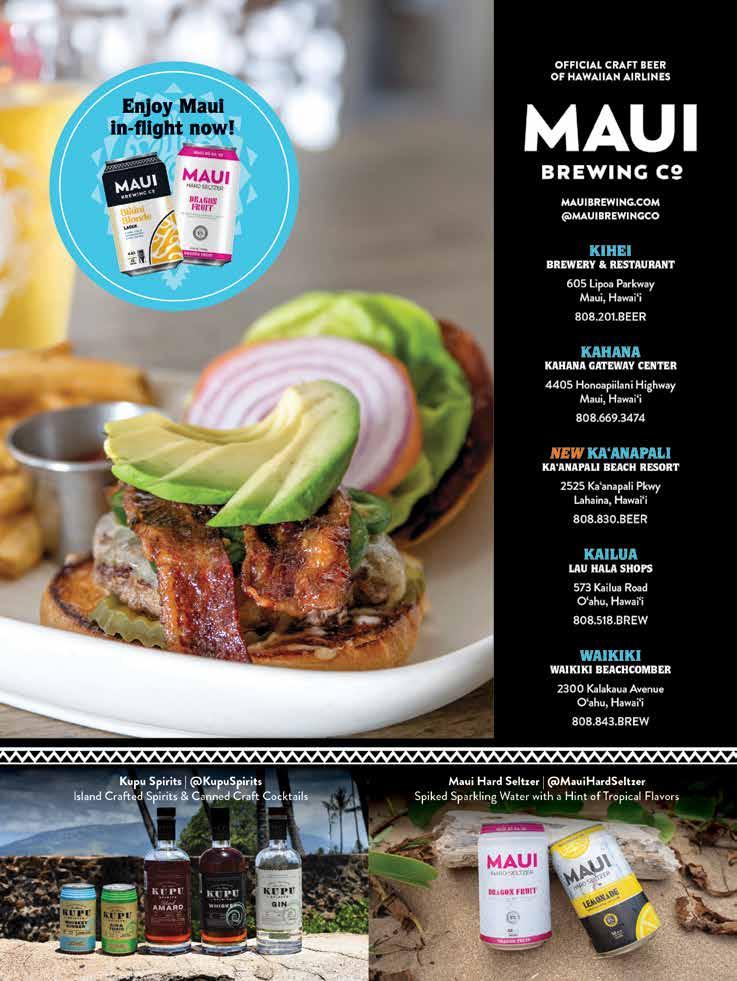


Since January 2023, we’ve been a partner in EmbryRiddle Aeronautical University’s Aviation Maintenance Technology SkillBridge program, which provides servicemen and -women opportunities to transition into the civilian aviation and aerospace sector. Our veteran employees are also encouraged to stay connected with each other through the Hawaiian Airlines Veterans Employee Network (HAVEN) employee resource group. Established in 2017, HAVEN works to create networking opportunities, enhance recruitment of military members and pave pathways for mentoring and career development.
John Kim, Hawaiian’s director of IT field services and a veteran of the U.S. Air Force, USAF Reserves and Hawaii Air National Guard, serves as HAVEN’s president. “Every year hundreds of thousands of military members transition into the civilian market and they bring an advanced perspective that is a competitive advantage in our increasingly
globalized economy,” he says. “Veterans have learned to work side-by-side with individuals with unique backgrounds and capabilities—from all over the world, under stressful and often demanding conditions. As a 22-plus-year Air Force veteran, it’s thrilling to see Hawaiian making impactful strides to support transitioning service members and recognize their value.”
Flight attendant Sun Min Chun-Dayondon, a veteran of the Army Signal Corps who served in Iraq, joined Hawaiian Airlines in 2016. She also continues to serve the National Guard as a UH-60M Blackhawk pilot. “I am extremely grateful that Hawaiian Airlines has been such an understanding employer when it comes to being away from work on military orders,” she notes. “Hawaiian has always been supportive of my military service—even on short notice and regardless of how long I would be away, the excused absence was always followed with ‘Thank you for your service.’”
Mālama Maui
Since the tragic August 8 wildfires in Lāhainā, Hawaiian Airlines has been steadfast in supporting the West Maui community’s recovery needs. The carrier’s Mālama Maui Desk was an early pillar in Hawaiian’s response, helping manage a consistent stream of calls for kōkua (help) in the days following the conflagration.
Immediately following the fires, Hawaiian prioritized the evacuation of displaced residents and visitors and the transportation of first responders, operating hundreds of flights and carrying more than 17,000 people out of Kahului Airport within the first 72 hours and thousands more over the following weekend. The mālama (to take care of) desk was established on August 15 as part of the second phase of support, alongside significant volunteer commitments and donations to local nonprofits. As of early November,
HAPPENINGS AT HAWAIIAN AIRLINES
149
When she’s not serving in the National Guard as a UH-60M Blackhawk helicopter pilot, Sun Min Chun-Dayondon is a flight attendant for Hawaiian Airlines.
the program had assisted over 230 individuals and organizations with urgent, high-impact requests for support related to travel, cargo shipping, baggage waivers, volunteers, sponsorships and more.
“A lot of people saw the devastation of the wildfires and immediately sprung to action, doing what they could to help Maui in its greatest time of need. As the hometown carrier, people naturally looked to us and we knew in those first days that our biggest responsibility was to respond in the most significant and timely fashion,” says Alisa Onishi, Hawaiian’s senior director of brand and community. “In the immediate aftermath, employees from all over the company were receiving separate requests for help to get supplies and personnel to Maui, and it became clear we had to create a dedicated process and set up a team to manage it.”
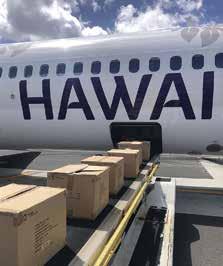
wheelchairs and walkers, toys, sporting goods, pet crates and food containers.
“Whenever disaster strikes, one of the biggest needs is getting supplies into the impacted area,” said Dana Knight, director of commercial cargo at Hawaiian Air Cargo. “Our employees personally welcomed donors and cared for their donation shipments until they got into the right hands in Kahului. It’s been an honor to serve our state in this important way, and these months have given us a number of incredible experiences of aloha that many of us will never forget.”
As West Maui transitions to the next phase on its road to recovery, requests for relief assistance are also transitioning, and are now being accepted through Hawaiian’s Team Kōkua Giving Program. For more information on Hawaiian’s West Maui relief efforts, visit HawaiianAirlines.com/ MalamaMaui.
New Life for Laptops
Among the countless needs of West Maui residents navigating the long road to recovery is having reliable cell phones, computers and laptops. These tools are essential gateways to public information, e-learning, community resources and loved ones, and nonprofits like Maui’s J. Walter Cameron Center are working hard to get them into the hands of those facing adversity after the August wildfires.
Last September, Hawaiian Airlines’ Sustainability Employee Resource Group (ERG) and IT Field Services team answered the center’s callout for device donations for its new Laptop and Cell Phone Relief Program. Together, they moved quickly to sort through scores of laptops bound for the landfill and refurbished forty-five devices back to full functionality.

Once the initial emergency had passed, our employee volunteers turned to the long-term needs of Maui residents, which included refurbishing donated laptops.
space to organizations supplying health, education and human services to Maui residents. On September 8 of last year, it launched its device relief effort with a community survey to measure the need and subsequent call for donations.
“Since we launched the program, we have nearly 1,000 applicants in need of devices. Hawaiian’s donation really helped kickstart the program, allowing us to provide our initial wave of support to those who we identified had the highest need,” explained Becky Lind, fund development director at the center.
Six volunteers from the ERG helped clean the devices while five employees with our IT Field Services team wiped and tested the hard drives. Once the batch was ready, five employees packed the computers into carry-on luggage and hand-delivered them to the nonprofit’s Wailuku headquarters.
The requests granted were evenly split between cargo shipping or baggage waivers and passenger transportation. Hawaiian Air Cargo shipped nearly 19,000 pounds of donations to Kahului, facilitated by the Mālama Maui Desk team. Items included meals, personal electronic devices, school supplies, handmade quilts, first-aid and hygiene products,
“Diverting laptops that still have many years of life left away from e-waste and getting them into the hands of people who lost everything in the wildfires was important to us from both a community and sustainability perspective,” said Diane Crouch, senior executive assistant at Hawaiian and communications chair of the ERG.
The J. Walter Cameron Center provides affordable programs and administrative
“These machines were slated to get recycled and shredded, but after putting in a little time and elbow grease, we were able to bless 45 families with a working laptop,” said Sean AuYoung, senior IT operations specialist at Hawaiian. “We know having computer and internet access is essential in this day and age, and we’re thankful we were able to make this happen so quickly.”
To learn more about the J. Walter Cameron Center’s work and how to donate, visit jwcameroncenter.org. For more news about Hawaiian Airlines, visit our Mana‘o blog at newsroom. hawaiianairlines.com/blog.
150 HAPPENINGS AT HAWAIIAN AIRLINES
Immediately following the tragic West Maui wildfires, Hawaiian Airlines airlifted thousands of pounds of donated food, electronics, school supplies and more to Kahului.


*Terms apply. The Hawaiian Airlines® Bank of Hawaii World Elite Mastercard® is issued by Barclays Bank Delaware pursuant to a license from Mastercard International Incorporated. Mastercard, World Mastercard, World Elite Mastercard, and the circles design are registered trademarks of Mastercard International Incorporated. © 2023 Barclays Bank Delaware, PO Box 8801, Wilmington, DE 19801, Member FDIC. Now you can get two checked bags free on eligible flights for the primary cardmember when you use your Hawaiian Airlines® World Elite Mastercard® to purchase eligible tickets directly from Hawaiian Airlines. Apply today. Ask your flight attendant for details and an application. Terms apply. Pack more, spend less with two free checked bags* A value of up to $140 roundtrip. HAWN-33306_ConsumerAd_HanaHou_OctNov2023.indd 1 7/21/23 2:13 PM
STORY BY HUNTER HASKINS
War Games

One sleepy Sunday morning at ‘Aiea’s Blaisdell park, there’s a birthday lū‘au, church gatherings, even a dog show. Then, there are the dudes with swords. About twice a year, mock combat practitioners come together for the Warlord Tournament.
Sword fighting is safer, cheaper (maybe) and more social than some of the other crazy things I’ve done in pursuit of a magazine story. And more natural: Just about every little boy will pick up a stick and start dueling with playmates. These medieval and early modern reenactments are equal parts swordplay and scholarship: Many participants are historians or experts; some have translated and published medieval weaponry and training primers. Consider this an impractical application of knowledge.
The Warlord Tournament is one of about a dozen such gatherings in the strange and persnickety realm of mock combat on O‘ahu. The eighteen fighters of today’s group hail from three distinct organizations. Members of Historical European Martial Arts wear modern armor and fight with polycarbonate
or dull steel swords, daggers, spears and poleaxes. Schola St. George is a nonprofit that carries on the sword arts in Hawai‘i and globally, with a focus on the English tradition and reproductions of armor from the Thirty Years’ War of the mid-seventeenth century. There’s a subculture of craftsmen and enthusiasts who make and fight in authentic-looking replica armor. The Society for Creative Anachronism are the folks who usually stage your local Renaissance faire; they’re more about living the chivalric ideal than actually fighting, but at the Warlord Tournament, one must deliver.
The object isn’t so much to win as to be a worthy opponent. “I’m a bit more advanced,” says tournament organizer and SSG member Josh Beck. “I have a bit more ‘helmet time’ than most people here, so I’ll fight at or slightly above their level.” Sir Richard of the North, a thirty-year SCA veteran, is just here for fun. New guy Nelson Schoening, fighting in borrowed armor, is looking to prove his “renown,” or notoriety for fighting above his experience level.
The opening ceremony is a freefor-all battle royale officiated by Mike Bell, the previous Warlord Tournament champ. It’s hard for the spectators on the sidelines to process the chaos of the melée. The last men standing get top seeding for the remaining matches as well as their choice of weapons.
The fights themselves have few official rules but a lot of guidelines. Stay in bounds so you don’t put a spectator’s eye out. Repeatedly punching a guy in the face mask or targeting the groin will get you excommunicated. As tournament master—emcee, referee and color commentator rolled into one—Mike sets the conditions for the match: “first to seven hits,” “three on three” team fights or the dreaded duels “to my satisfaction.” The weapons are based on ancient designs but made of high-impact plastic or rubber. Mike
matches opponents and weapons to ensure a fair fight—or not. New guy Nelson is granted a dagger (plastic, with a rounded tip) and pitched against an experienced spearman. He ought to be a dead man clanking, but his teammates coach him to deflect the spear with the dagger, thwarting the spearman’s attempts to land a hit with the tip—the only way to score a kill. Nelson wins by closing the distance and stabbing his opponent in the ribs.
What’s it like to fight? First, strap a colander to your head. Then don your puffiest, tightest-fitting parka, your thickest gardening gloves and some hockey and rollerblading padding. When you square off with your opponent, salute and begin the fight, you feel like the Stay-Puft Marshmallow Man moving in slow motion. But don’t get too comfortable: Just as in pro wrestling, the weapons might be fake but the pain is real, even through the armor. A hit stings your body as much as your pride—especially when your opponent brings a dagger to a spear fight.
Nelson goes on to best Alex McFarlin, an experienced practitioner of German sword styles, then Bryan Castle, who’s dressed as a pirate and wields dual cutlasses. And who’d have imagined it? Nelson wins! “My daddy is like a superhero!” cries his threeyear-old daughter, Jordyn. Nelson takes home the grand prize for his display of renown: a replica steel helmet from Elizabethan England. Pirate Bryan wins second prize despite never having dueled with a four-foot longsword, defeating Alex, who trains almost exclusively in German longsword.
Weird as they might look to the folks at the dog show and baby lū‘au, these tournaments offer a bit of relief from modernity, harking to a simpler time when disagreements were settled swiftly and honorably—by impaling one another. hh


152
PAU HANA
PHOTOGRAPH BY NAVID BARATY
























 OAHU: ALA MOANA CENTER OUTRIGGER WAIKIKI BEACH RESORT HILTON HAWAIIAN VILLAGE ROYAL HAWAIIAN HOTEL KAILUA VILLAGE SHOPS KAHALA MALL
OAHU: ALA MOANA CENTER OUTRIGGER WAIKIKI BEACH RESORT HILTON HAWAIIAN VILLAGE ROYAL HAWAIIAN HOTEL KAILUA VILLAGE SHOPS KAHALA MALL











 One Foot Island, Aitutaki
Sea Change Villas, Rarotonga
One Foot Island, Aitutaki
Sea Change Villas, Rarotonga









 STORY BY SONNY GANADEN PHOTOGRAPH BY TOMMY SHIH
STORY BY SONNY GANADEN PHOTOGRAPH BY TOMMY SHIH








 STORY BY MARTHA CHENG
STORY BY MARTHA CHENG
















































































































 A handful of the bounty at Kamoka Pearl Farm. Tahitian black pearls like these aren’t accidents of nature; they’re carefully cultivated through grafting and take a year to develop.
A handful of the bounty at Kamoka Pearl Farm. Tahitian black pearls like these aren’t accidents of nature; they’re carefully cultivated through grafting and take a year to develop.


 Josh Humbert (left) with his father, Patrick Humbert, co-owners of Kamoka Pearl Farm. The enterprising Patrick built the farm after sailing to the Tuamotu Islands on a vessel he constructed himself.
Josh Humbert (left) with his father, Patrick Humbert, co-owners of Kamoka Pearl Farm. The enterprising Patrick built the farm after sailing to the Tuamotu Islands on a vessel he constructed himself.

























































































































































